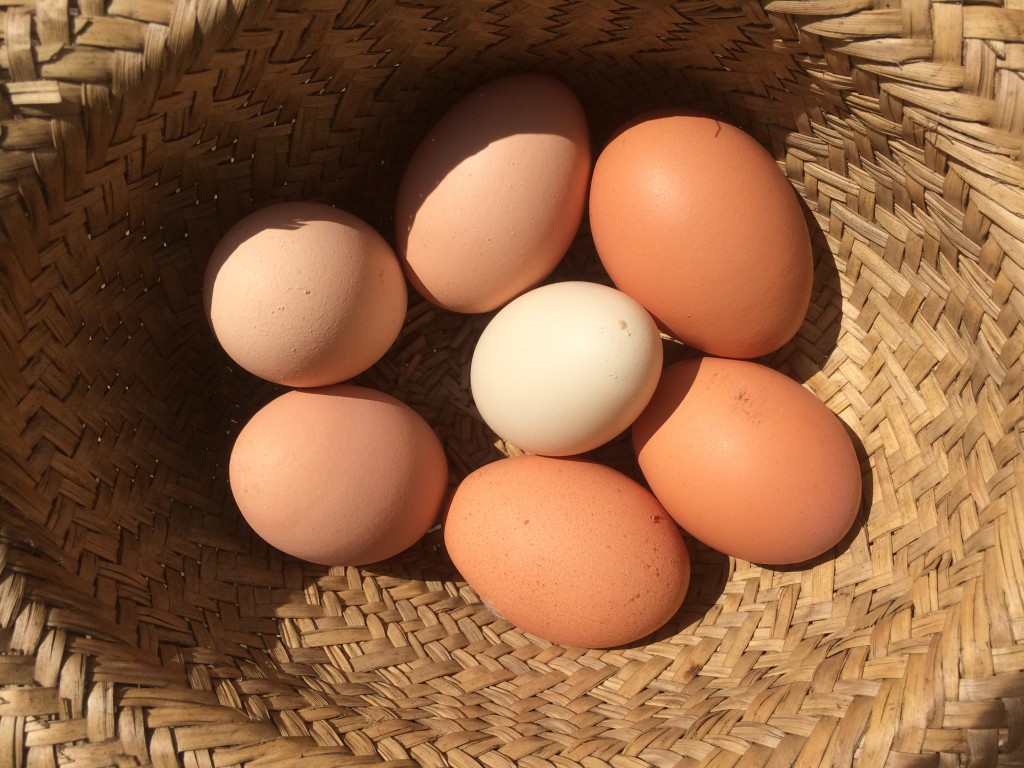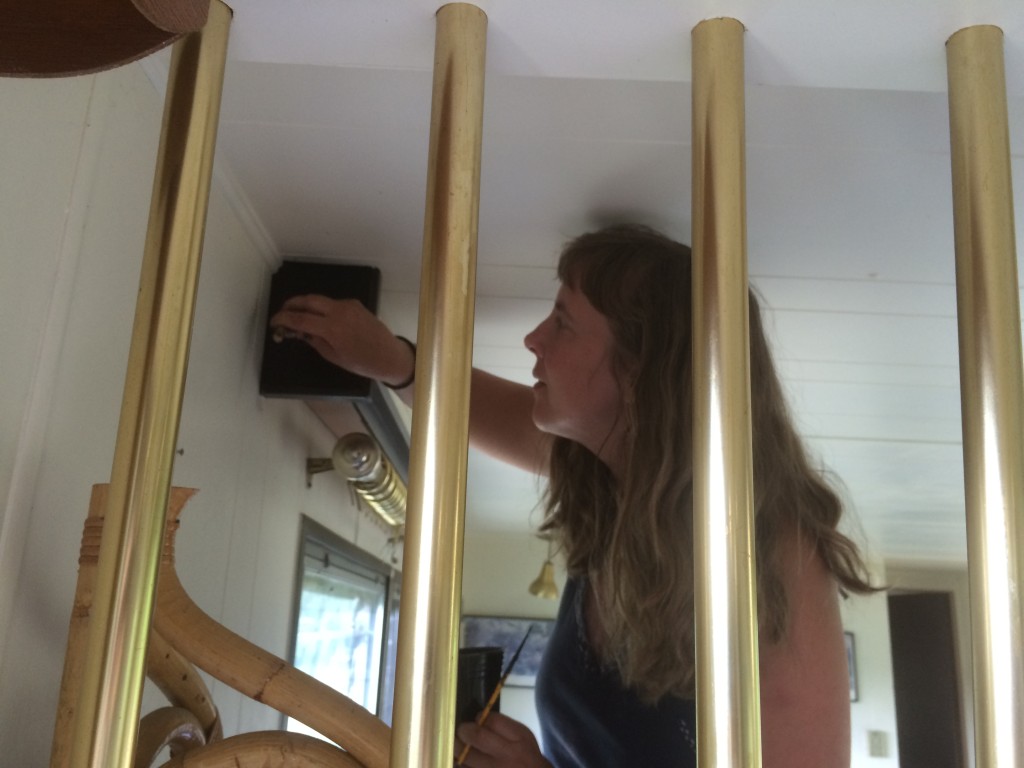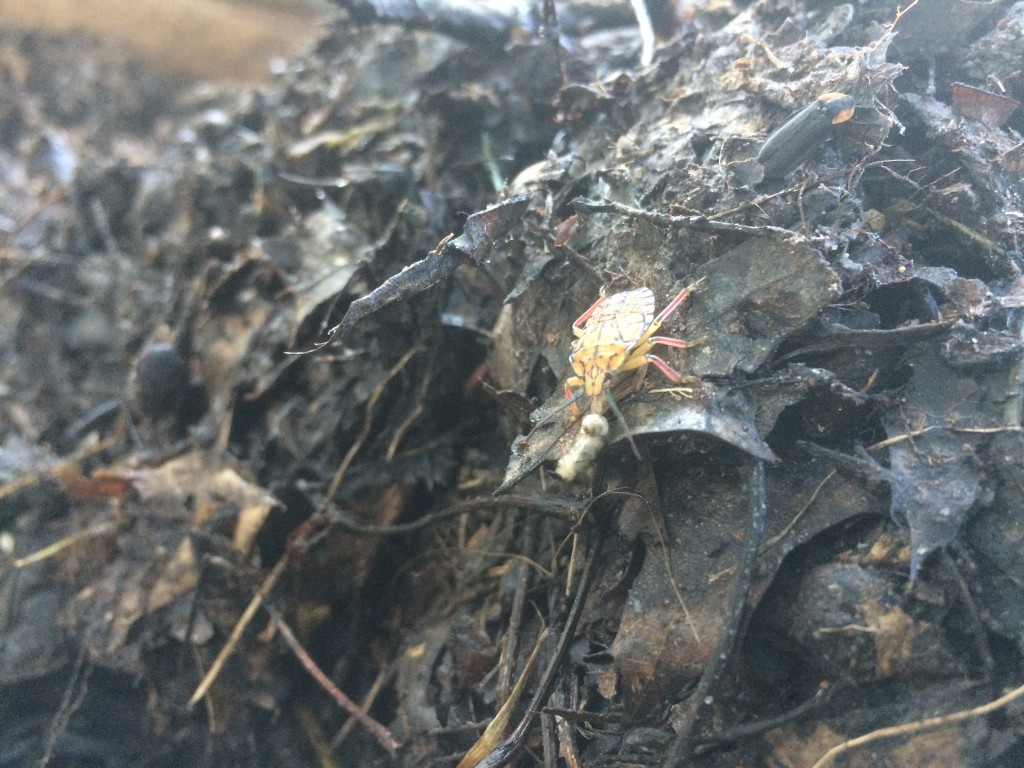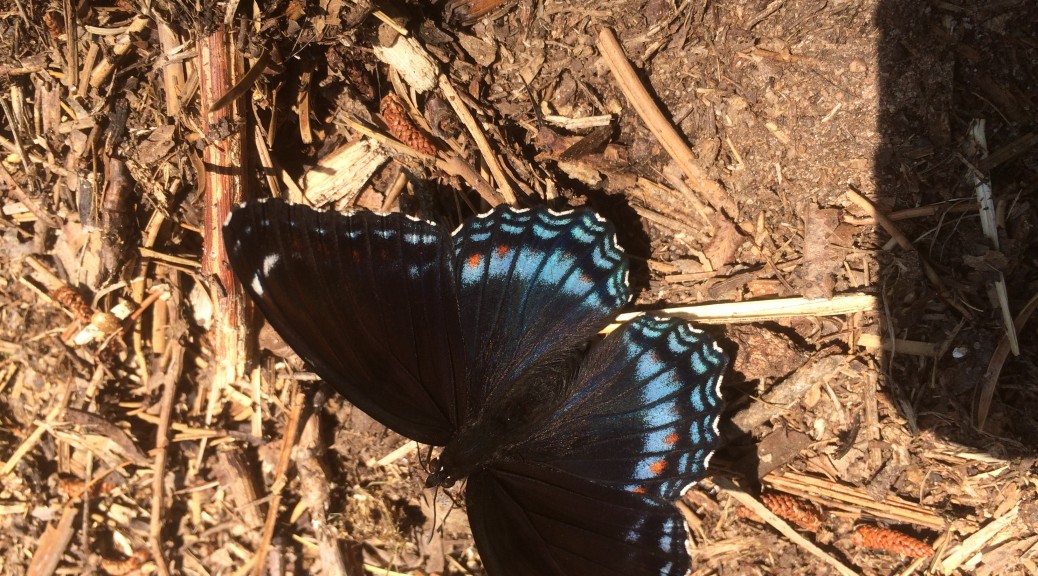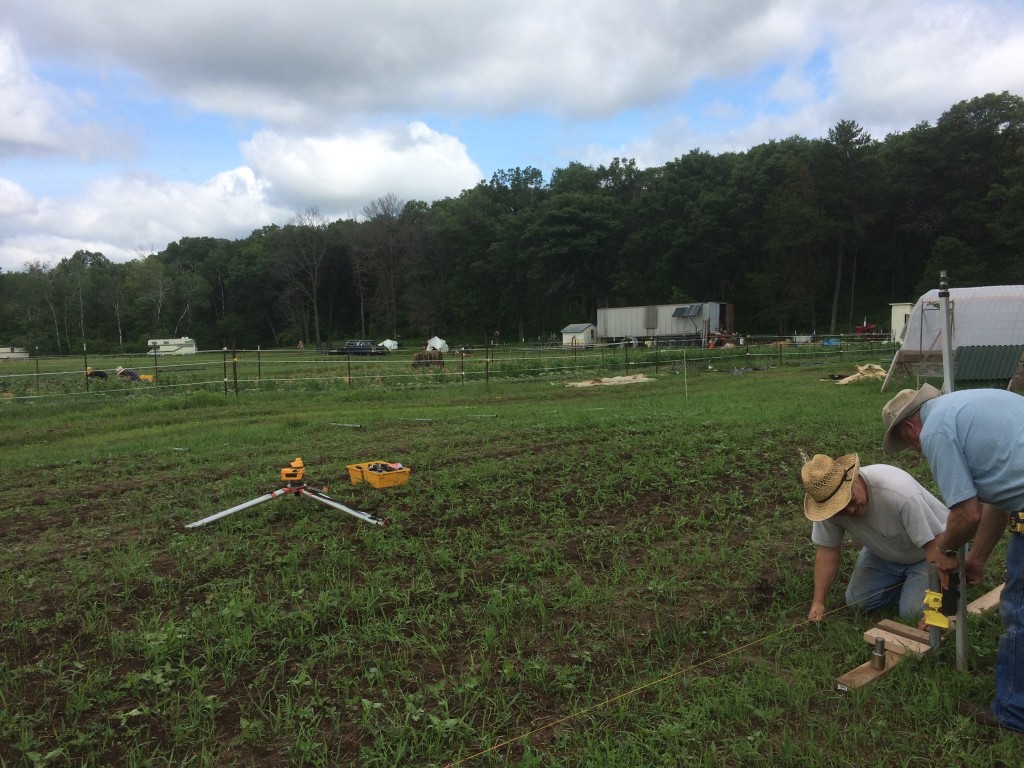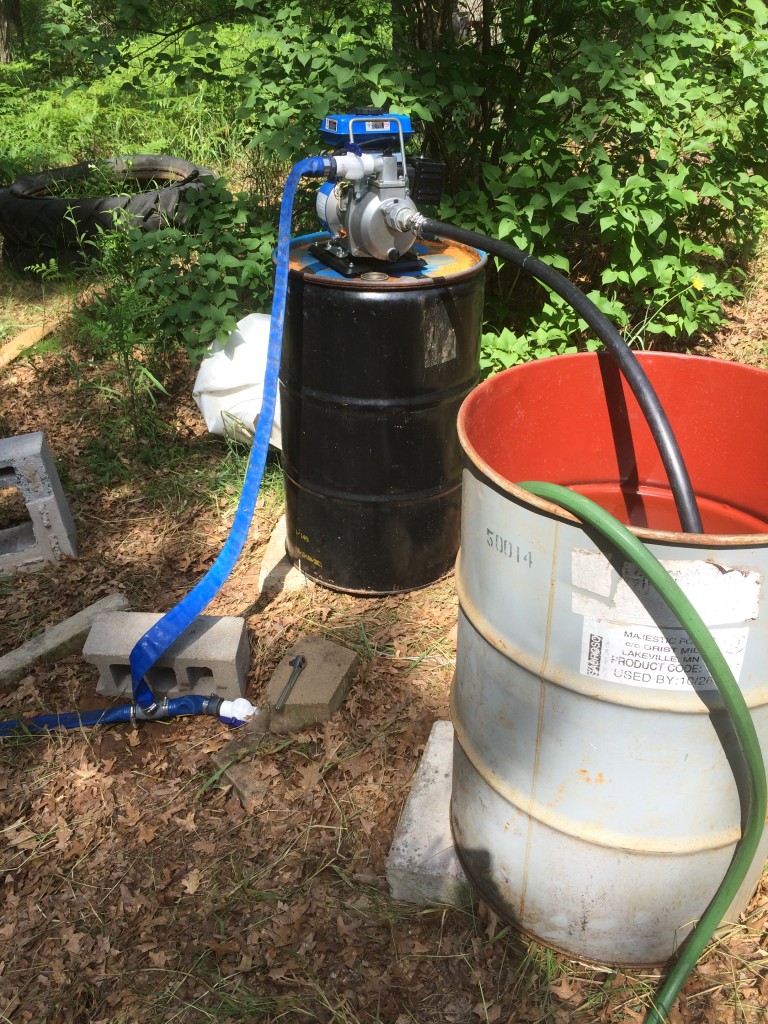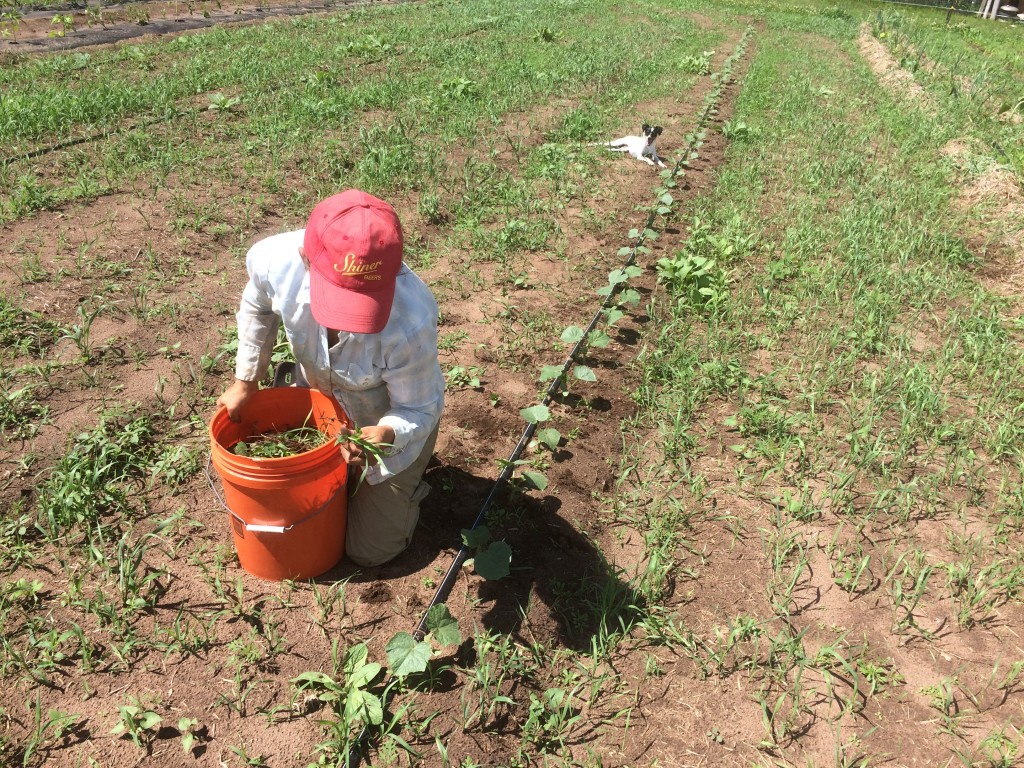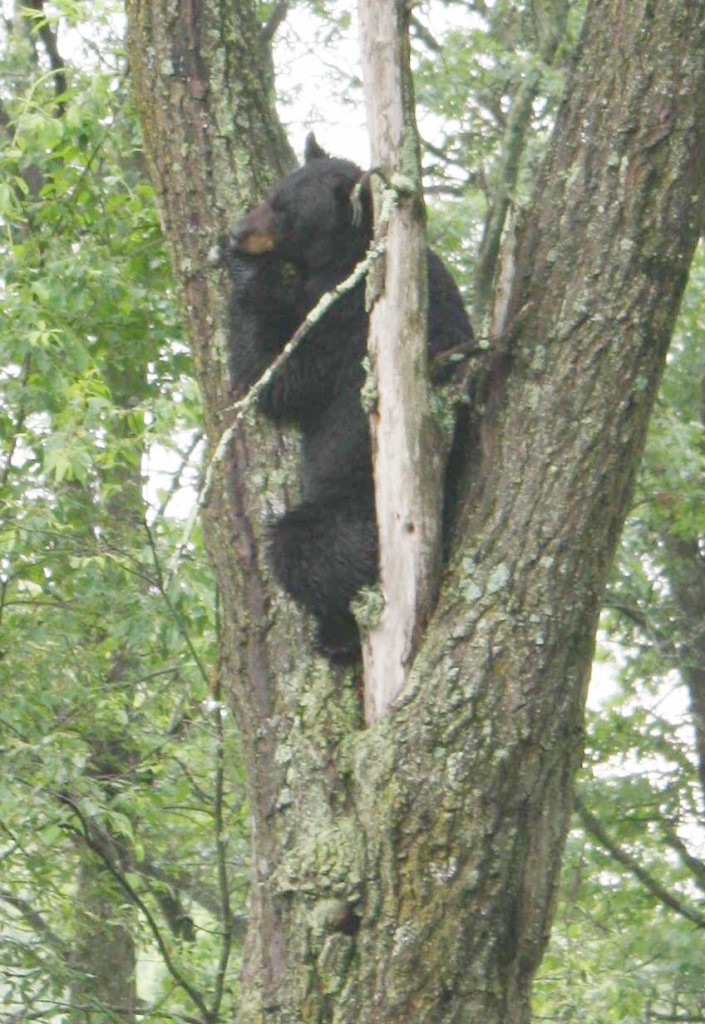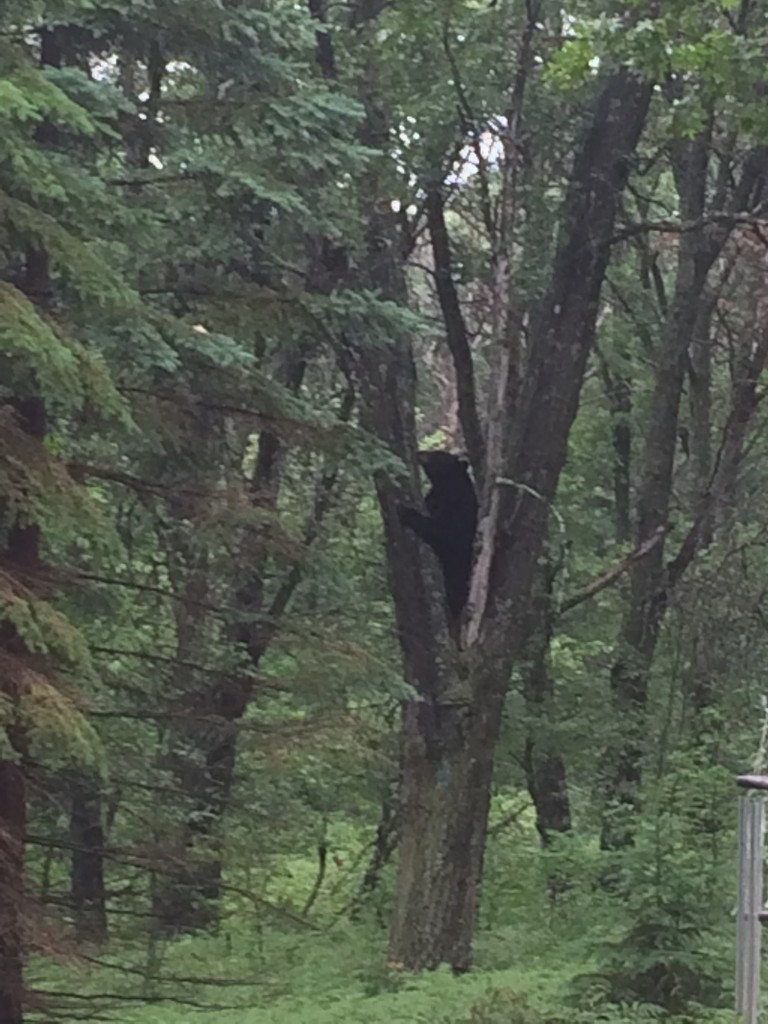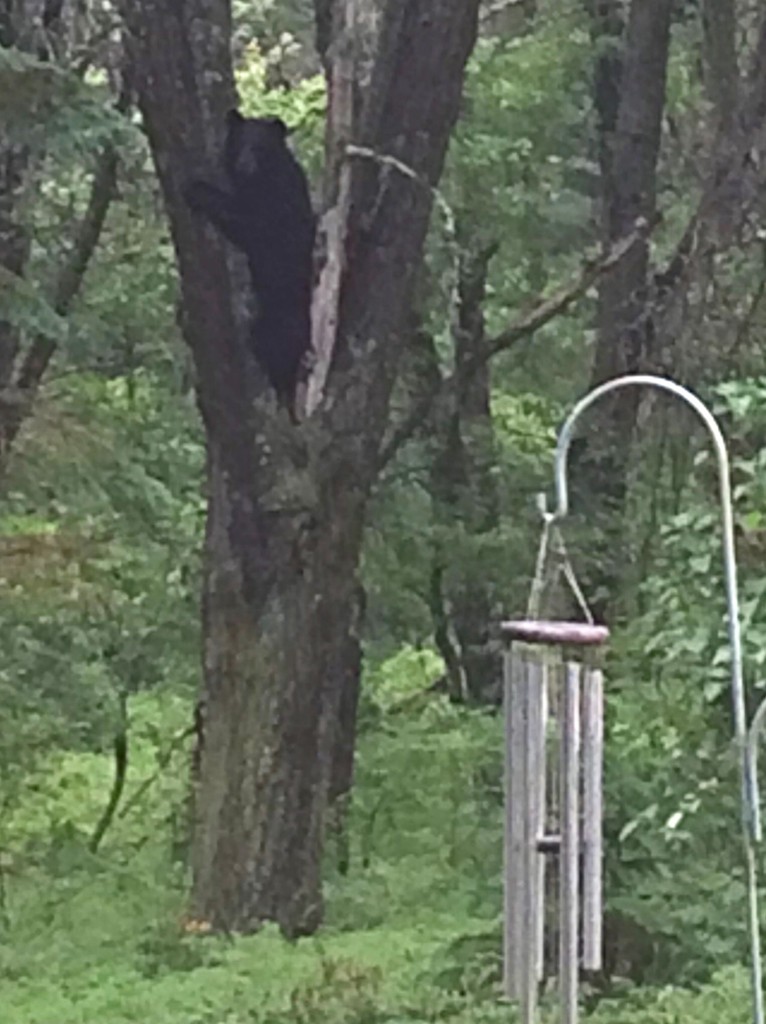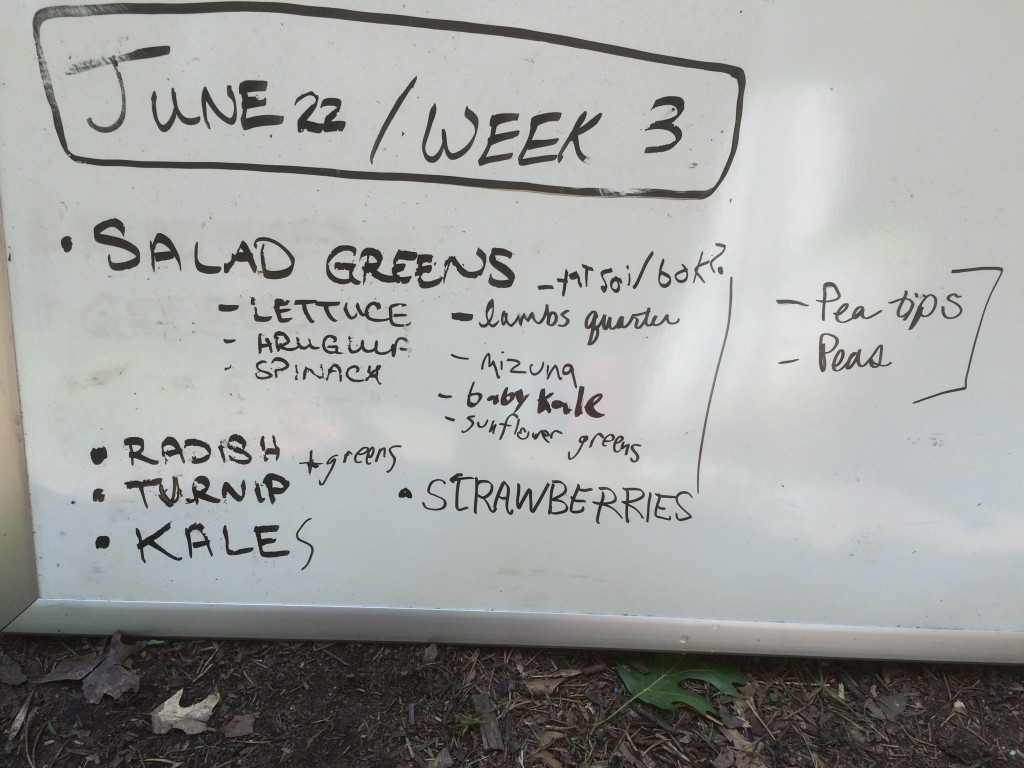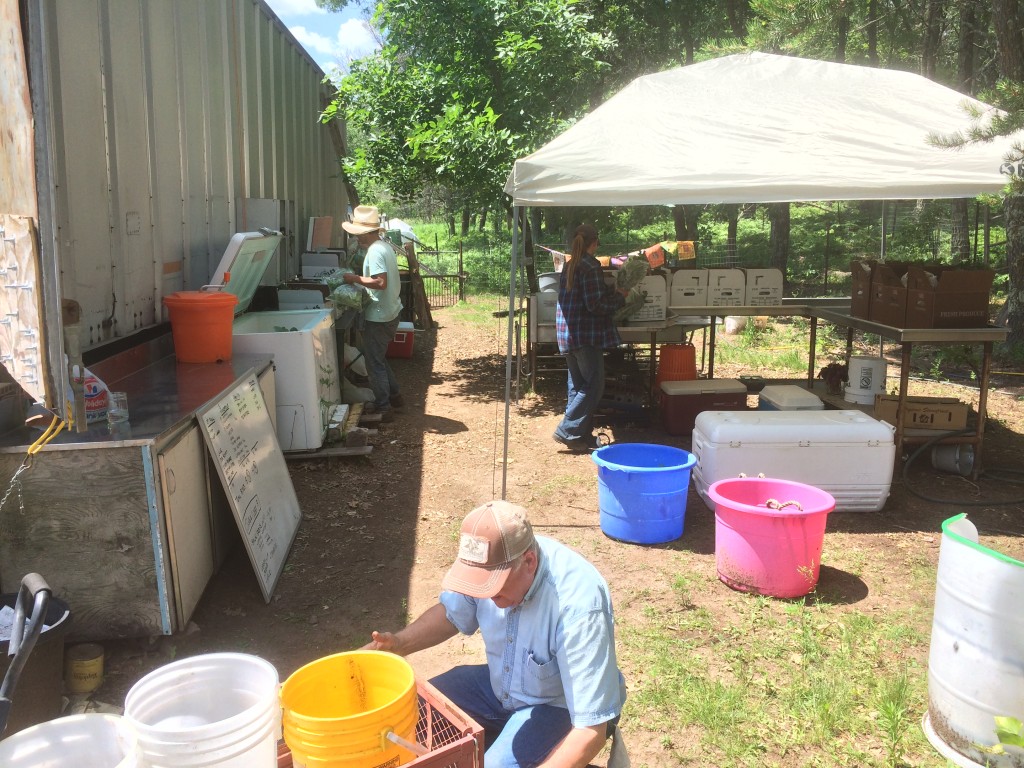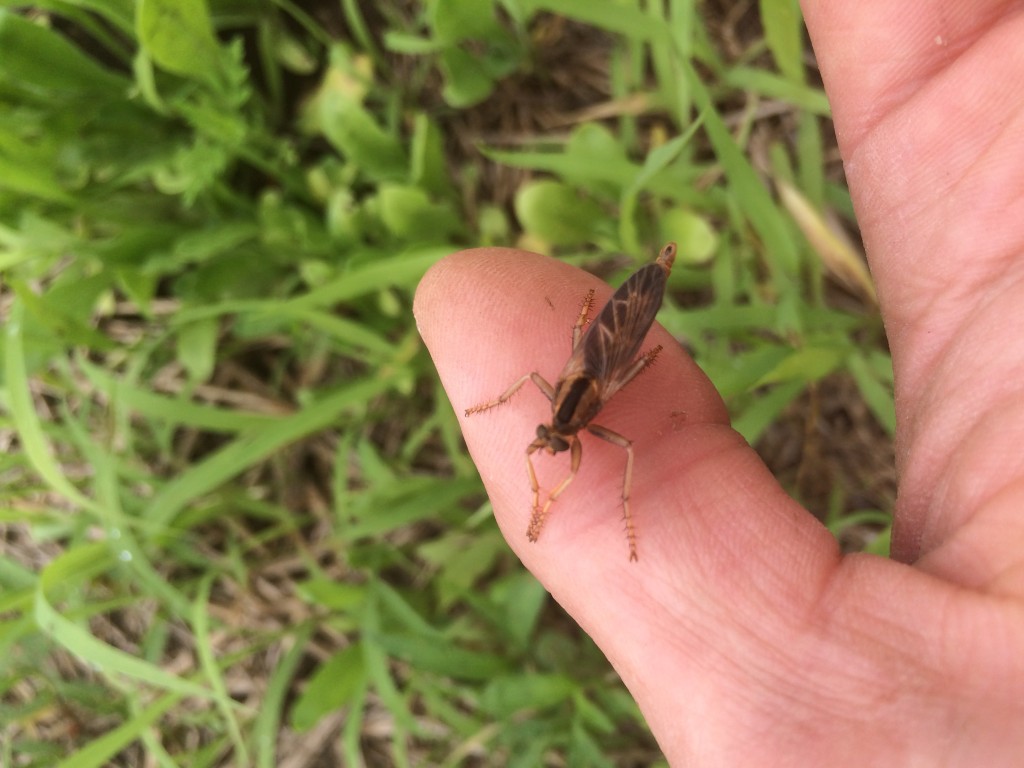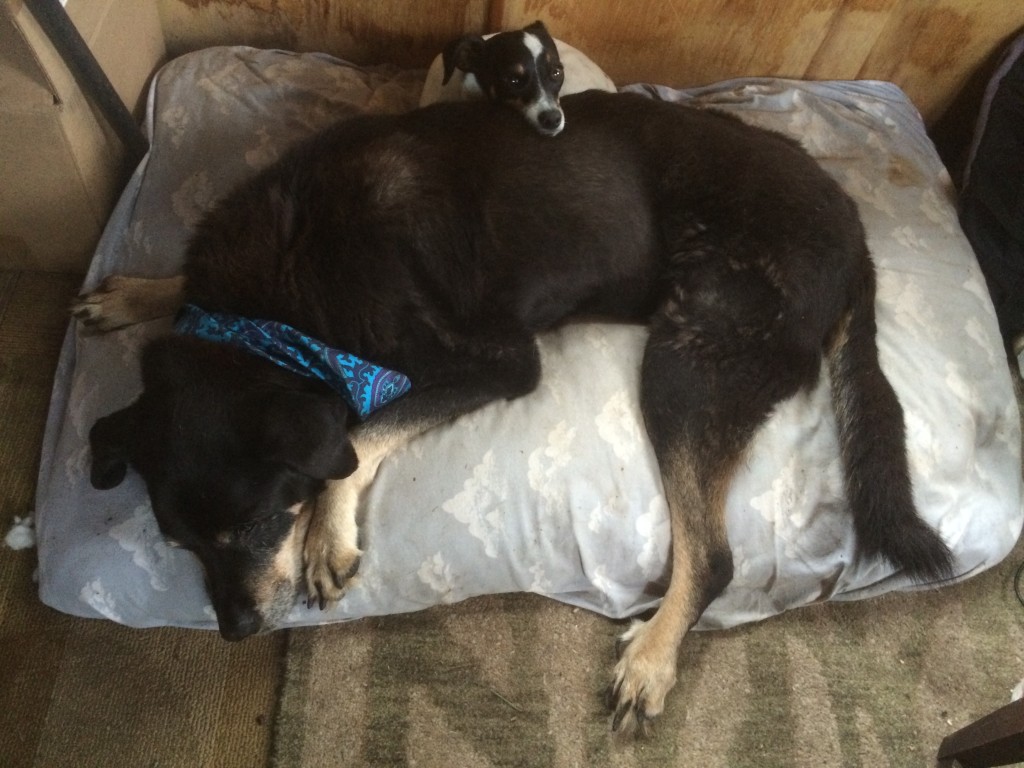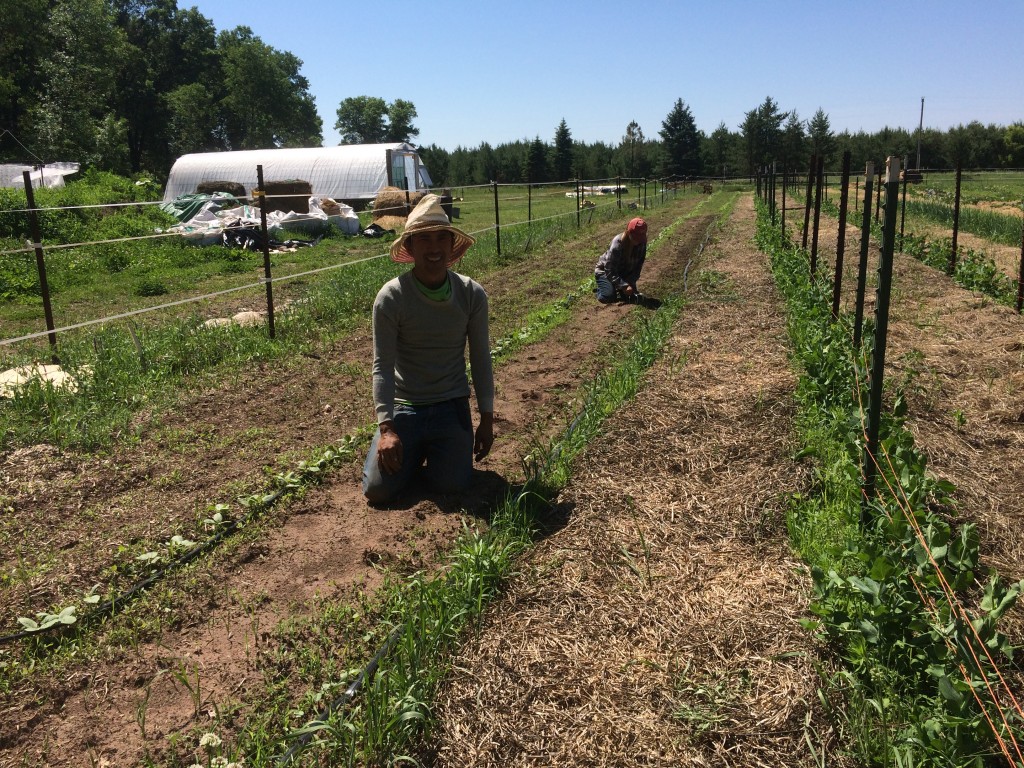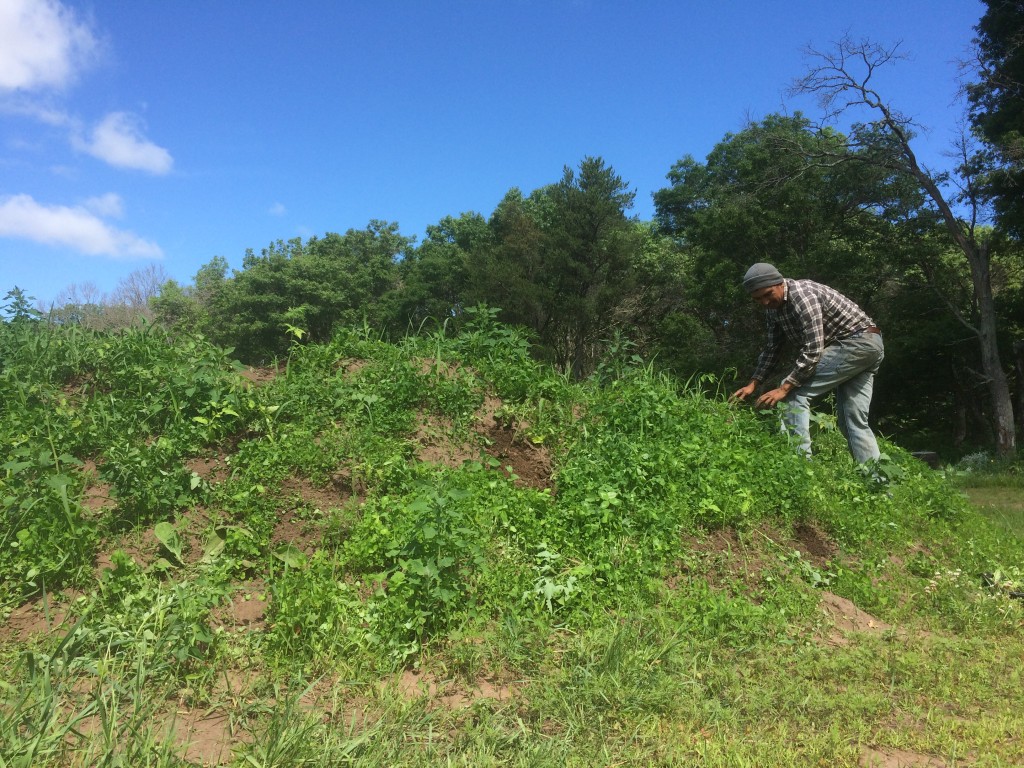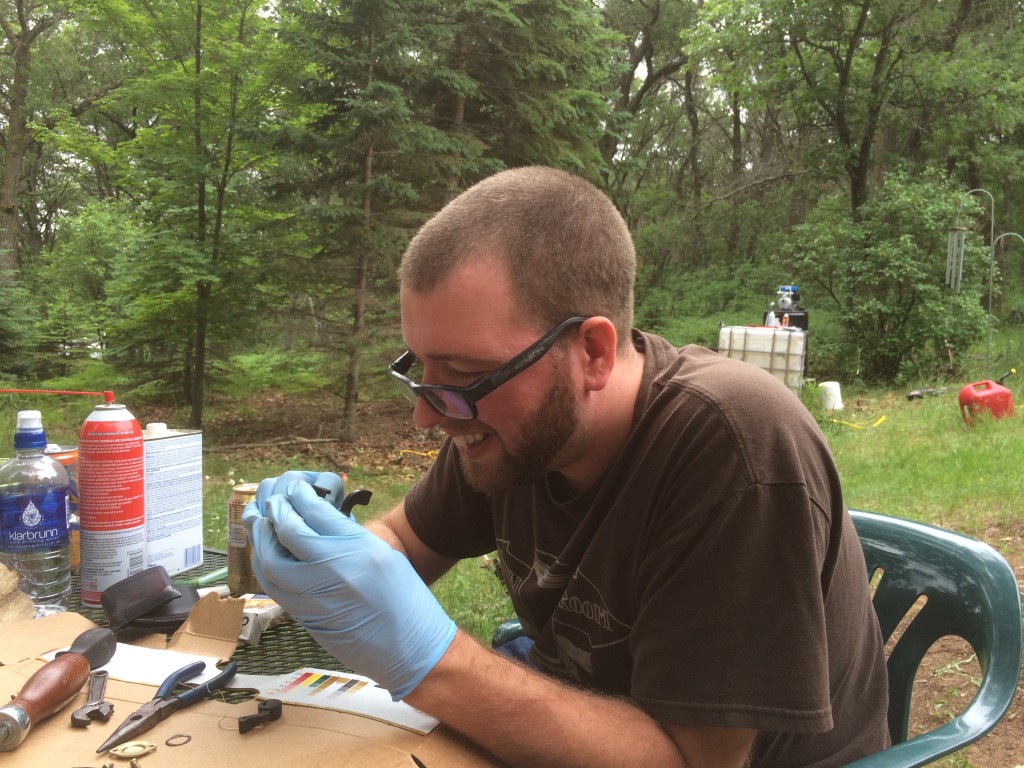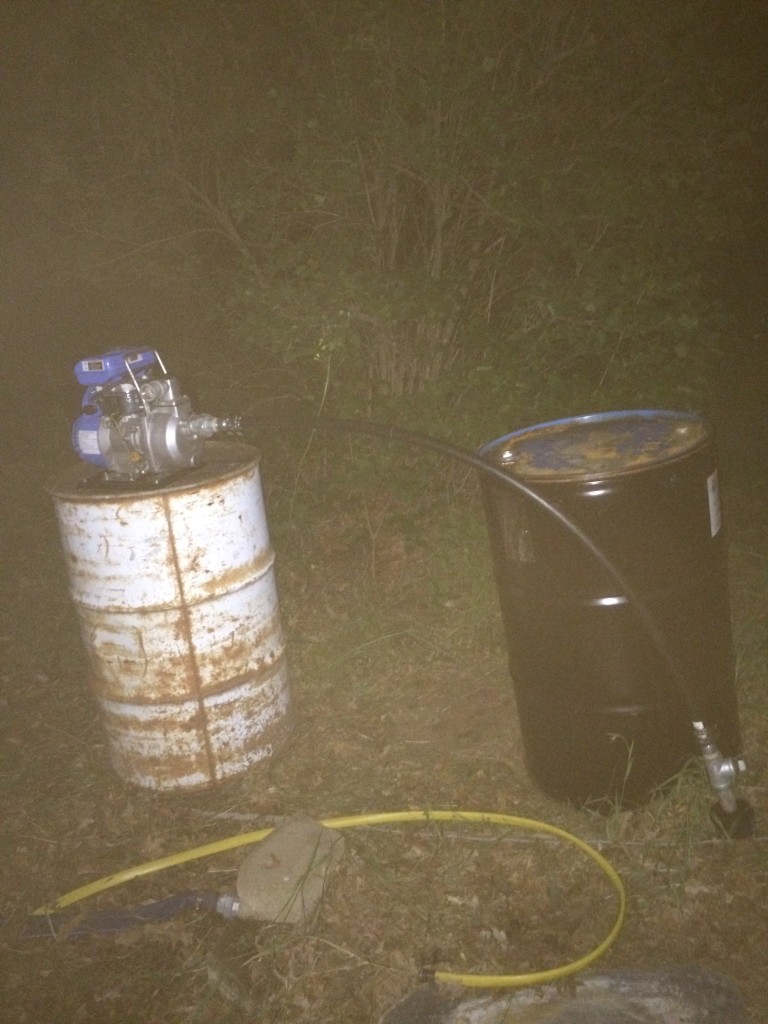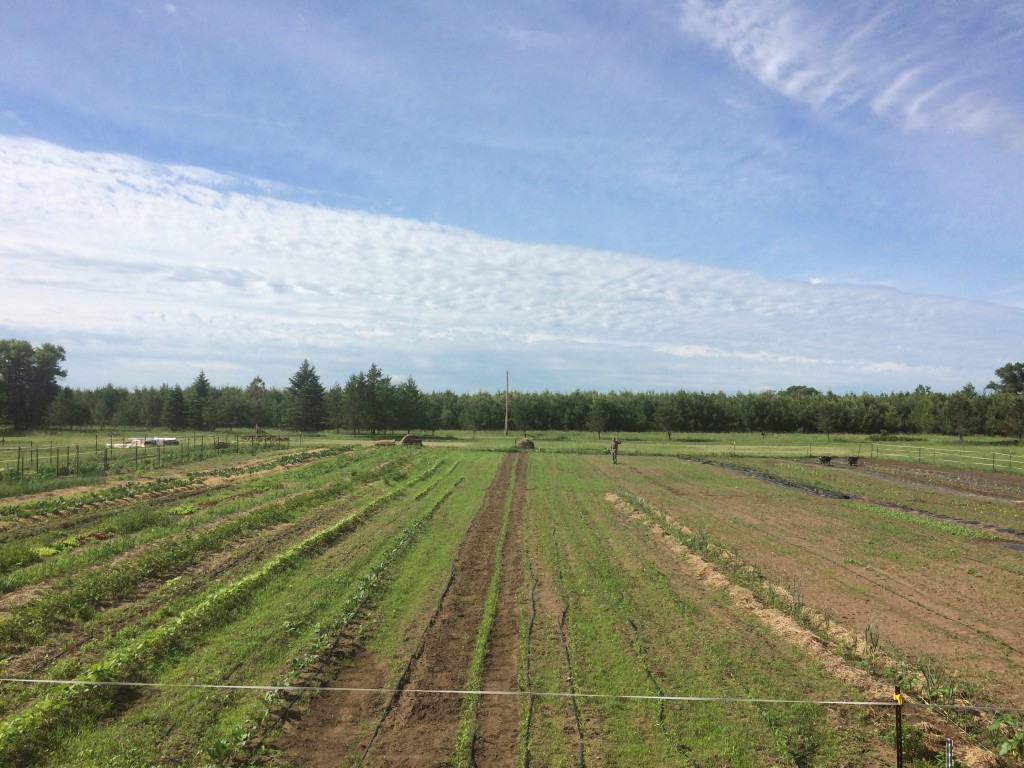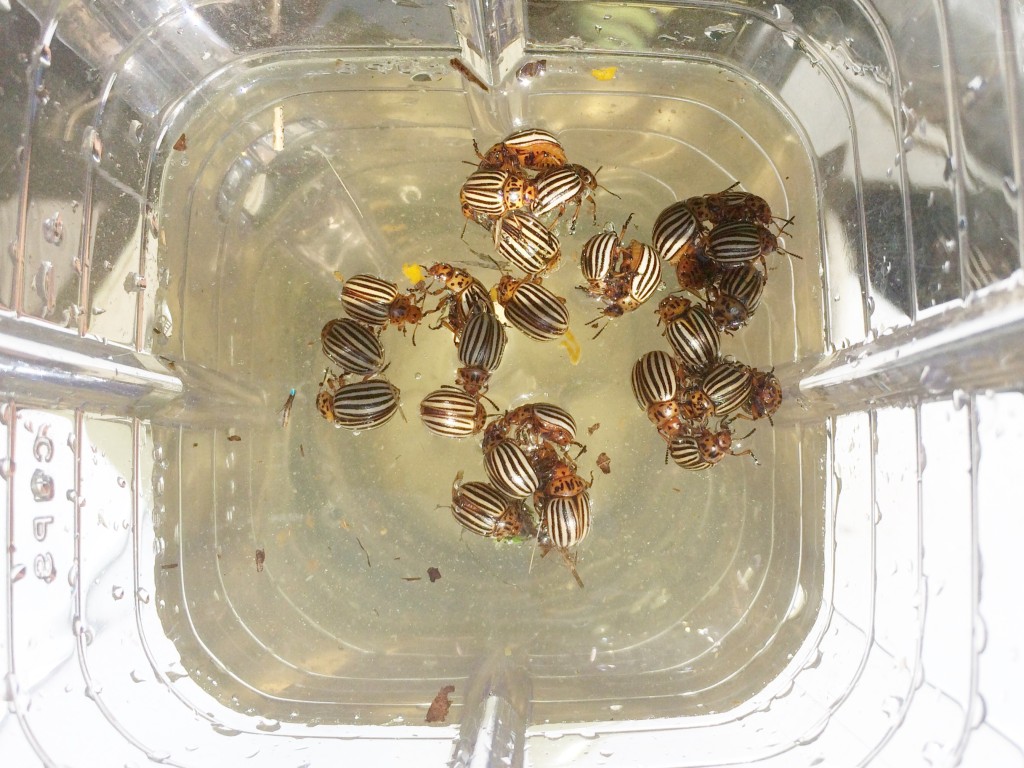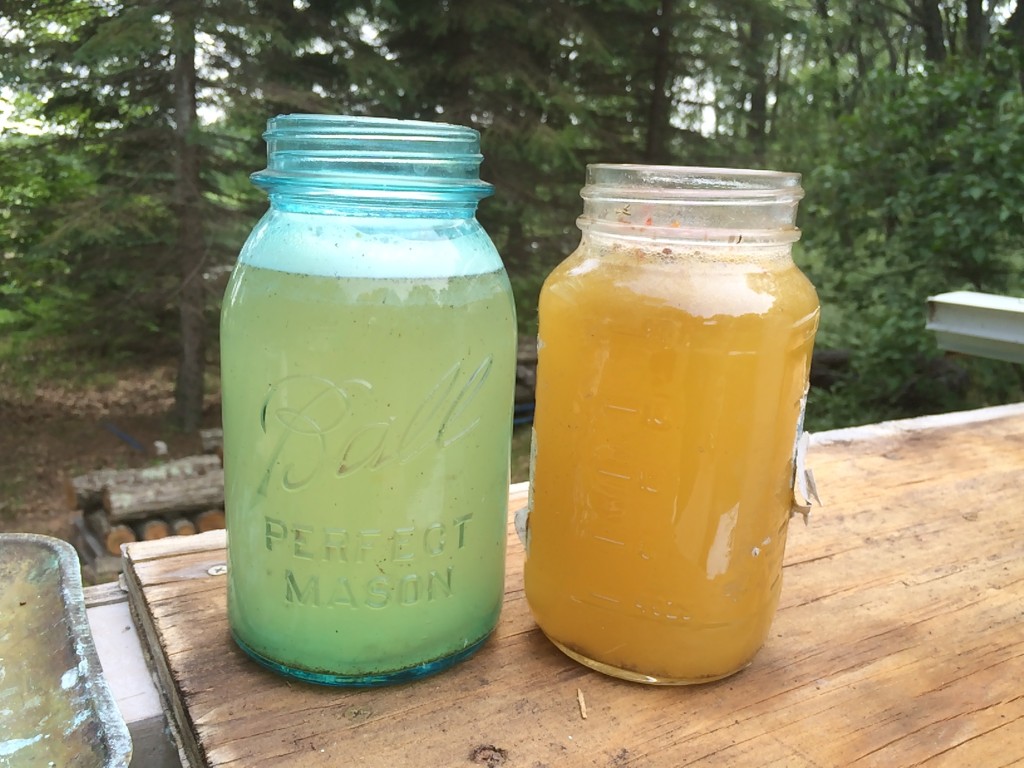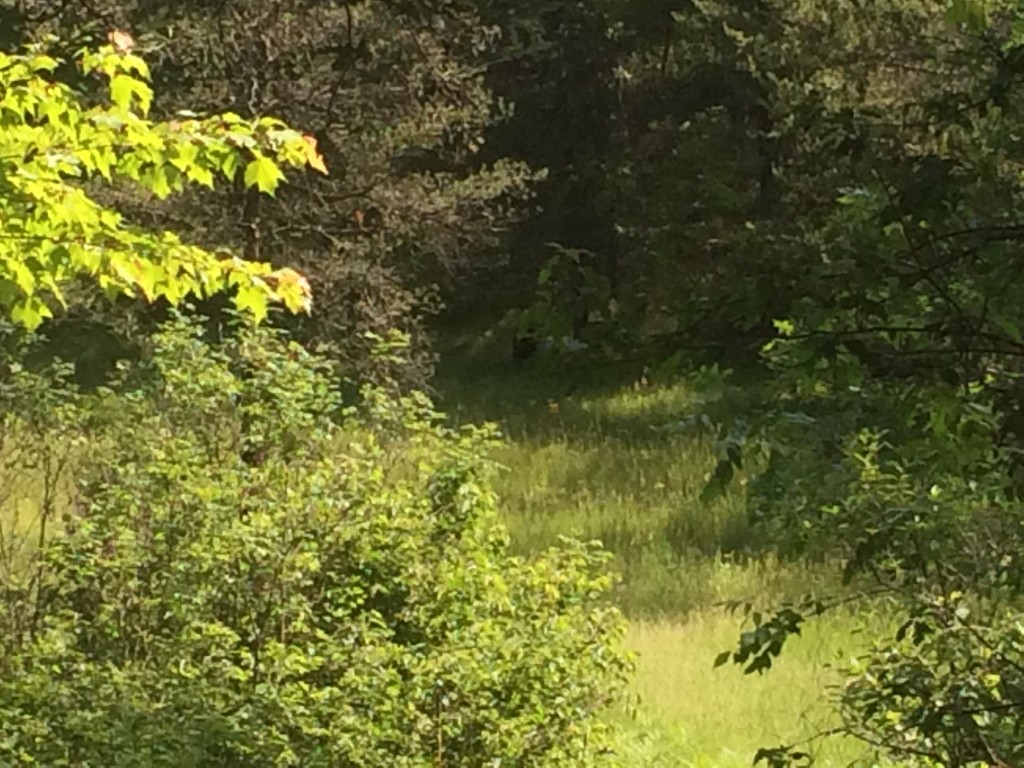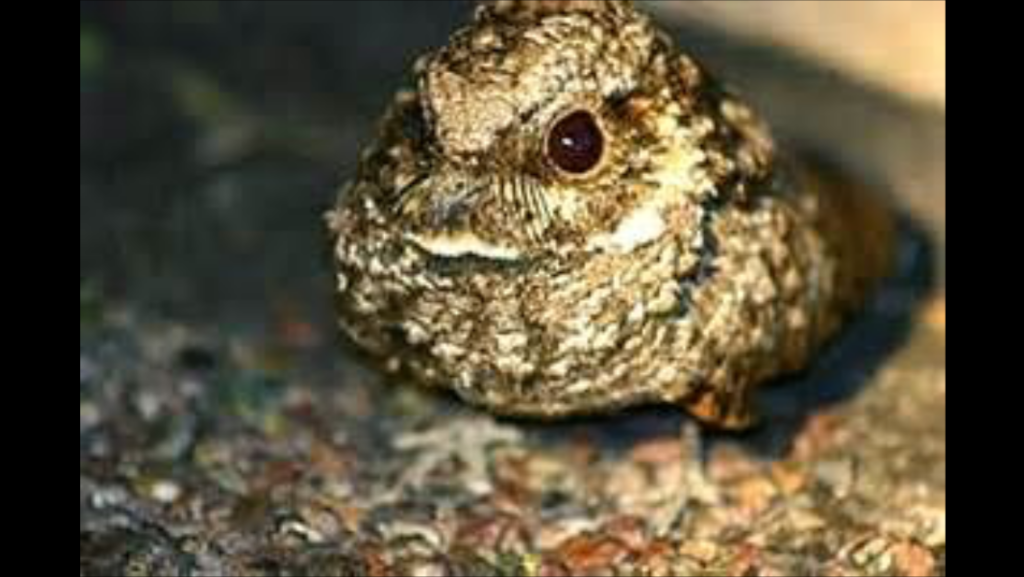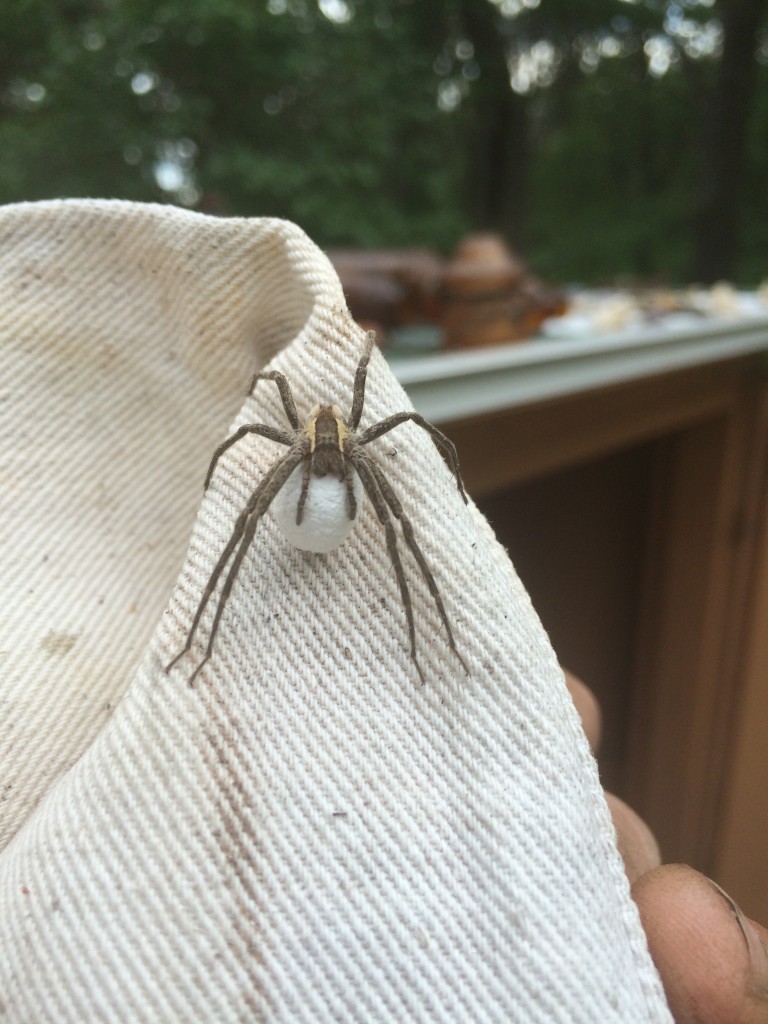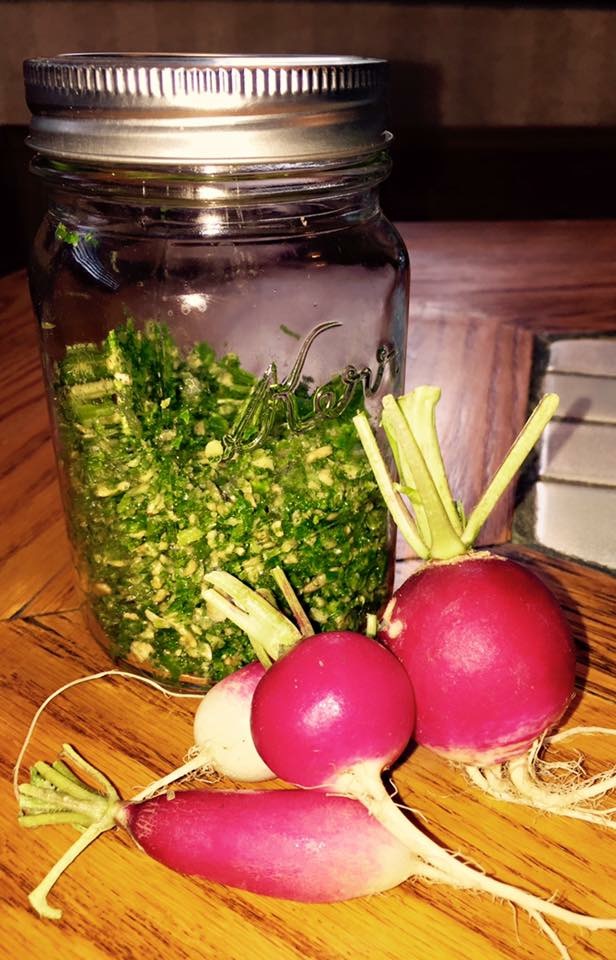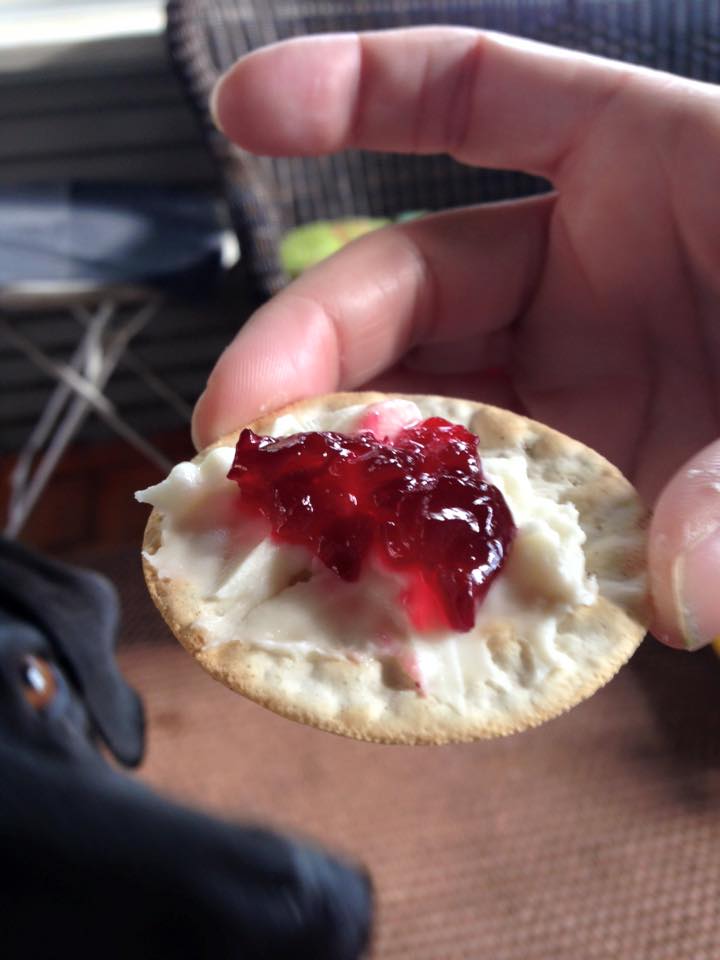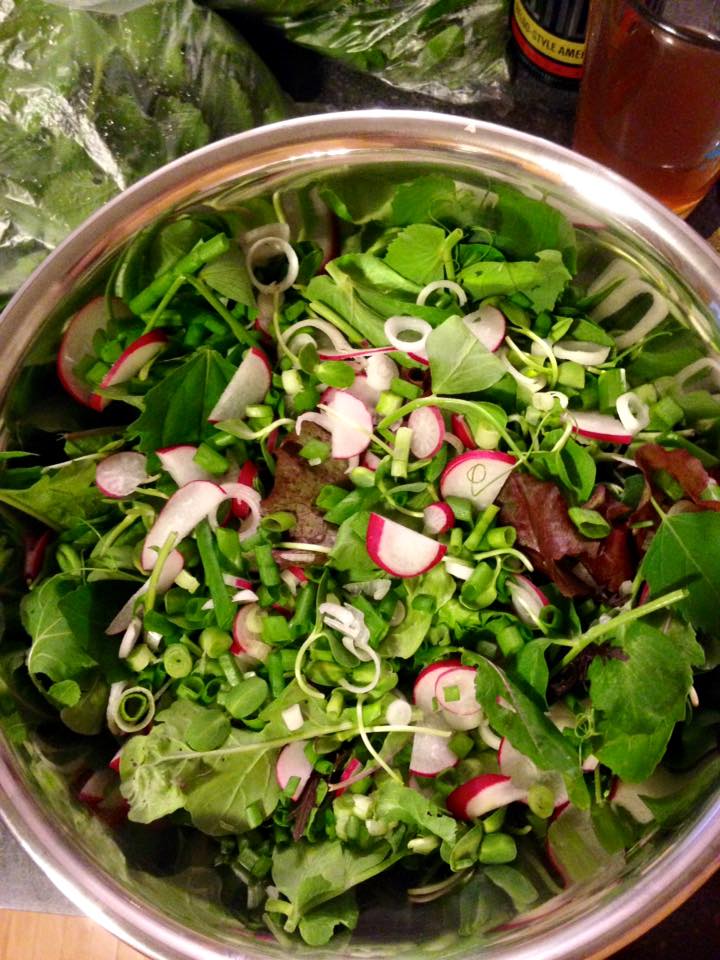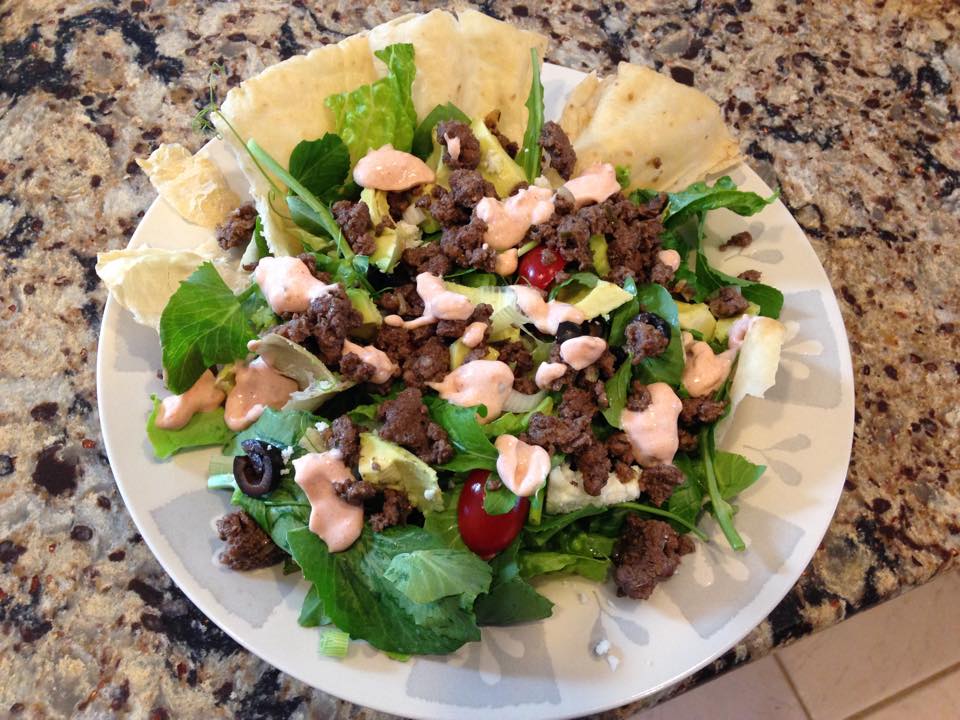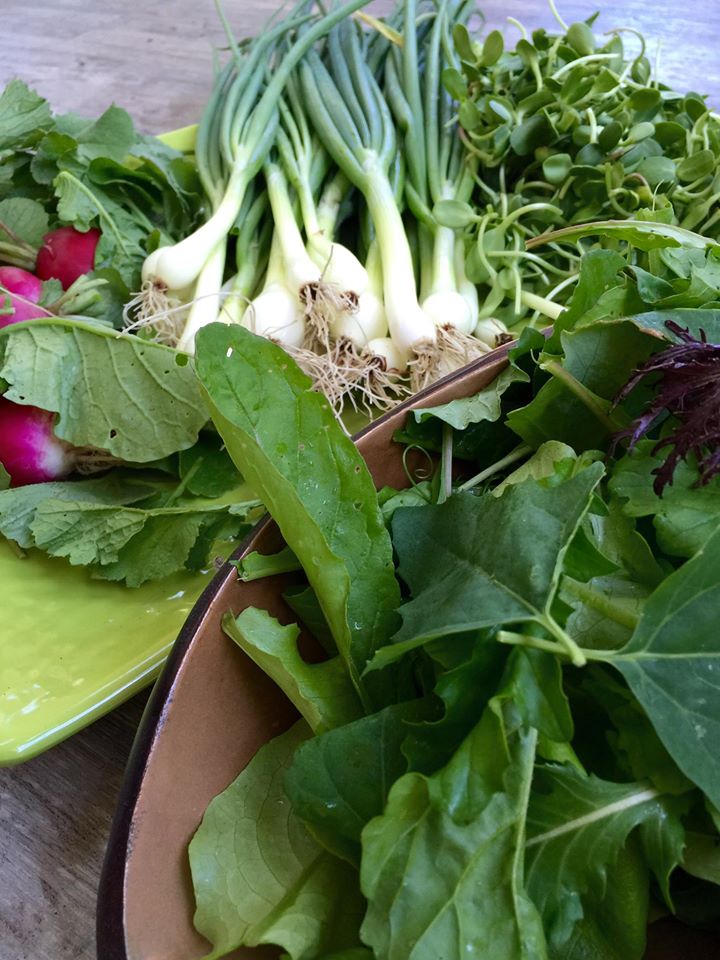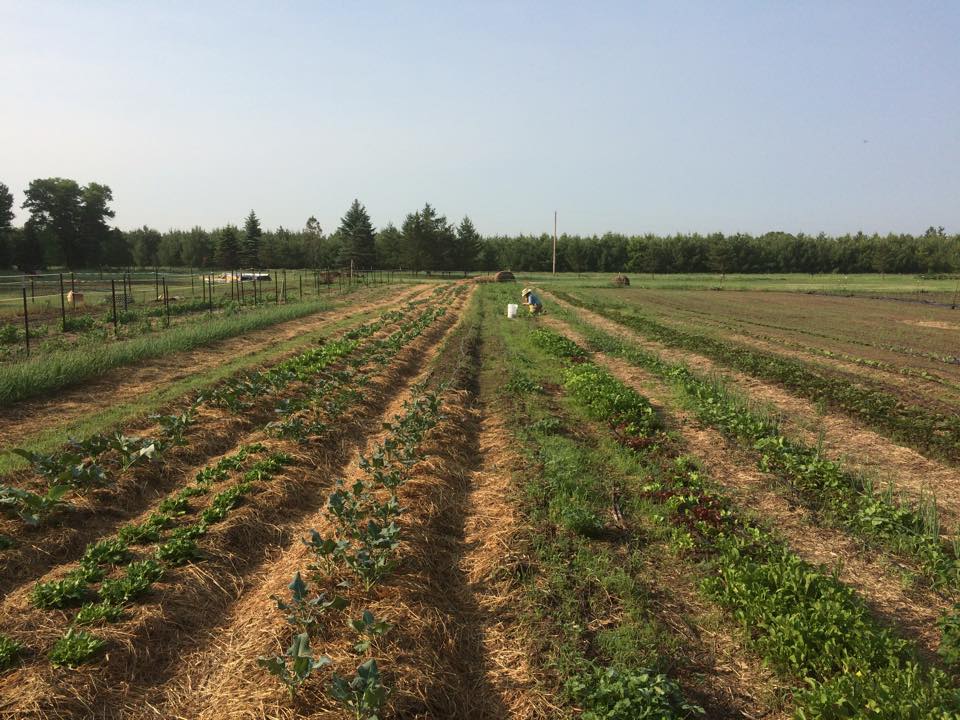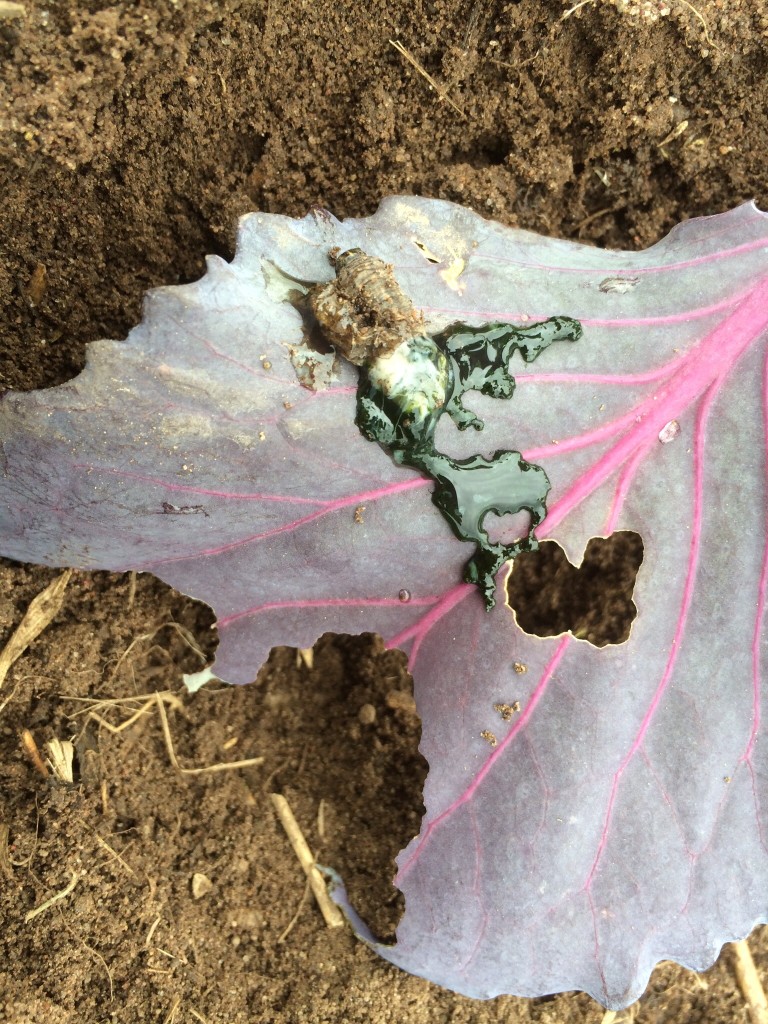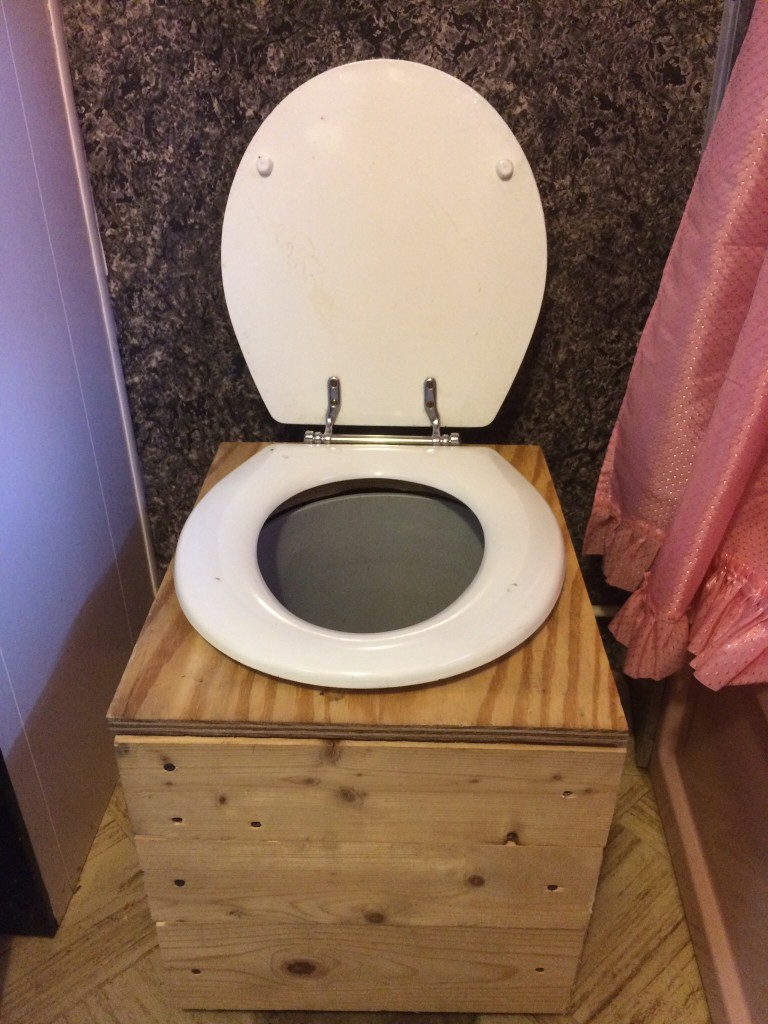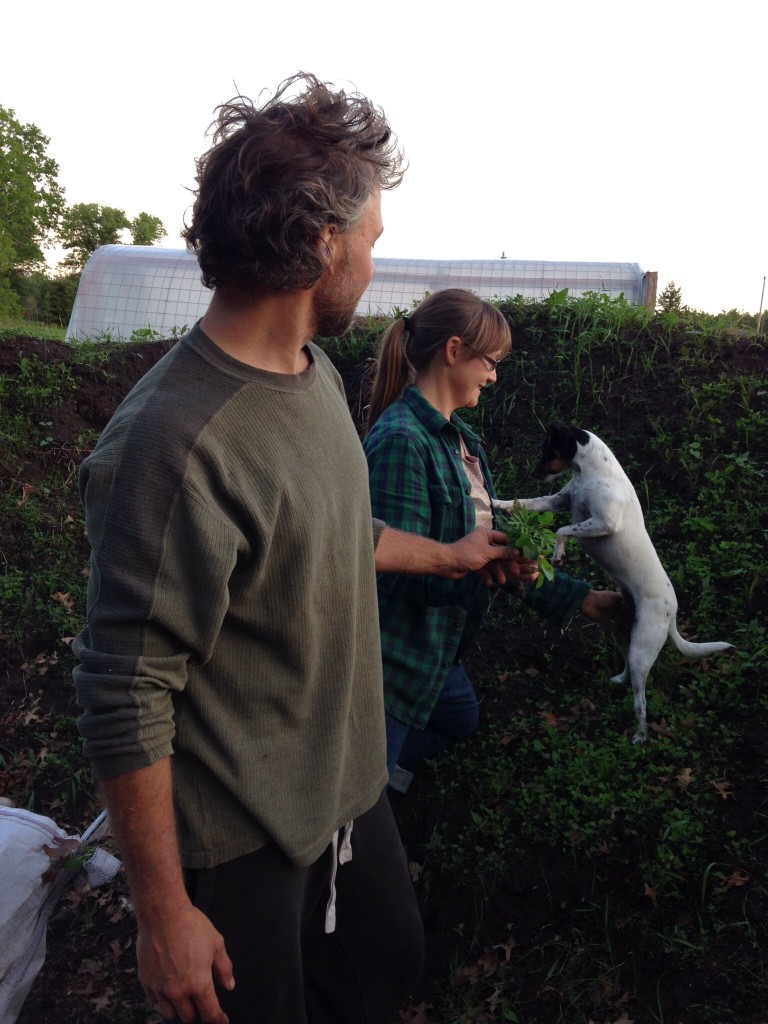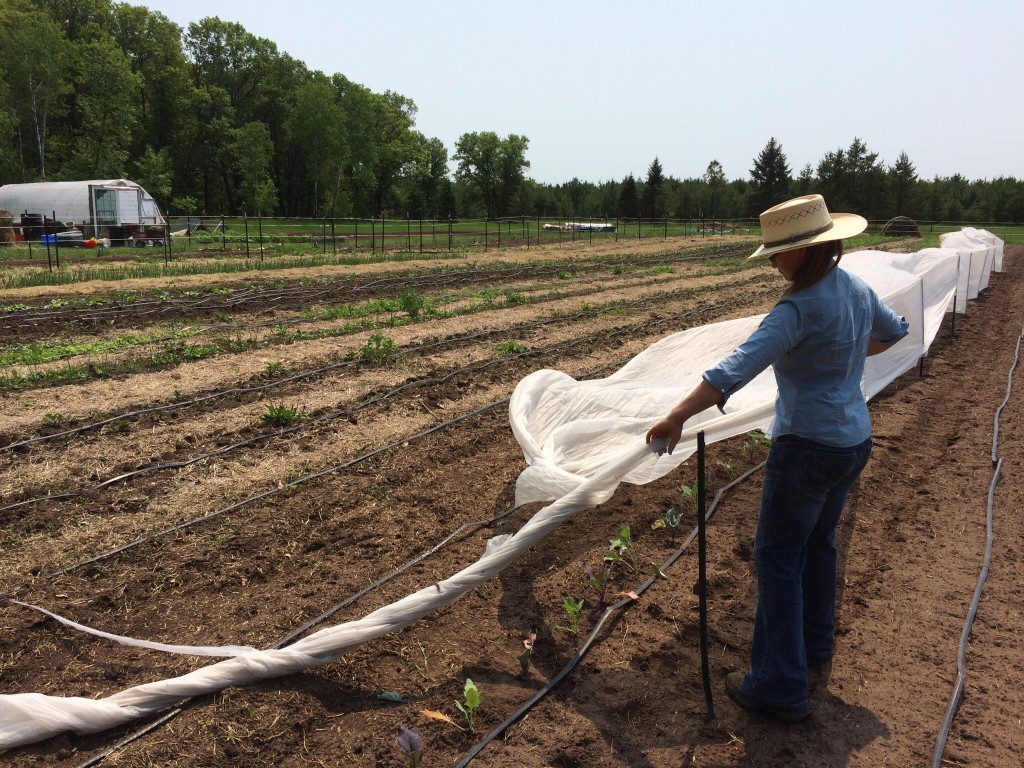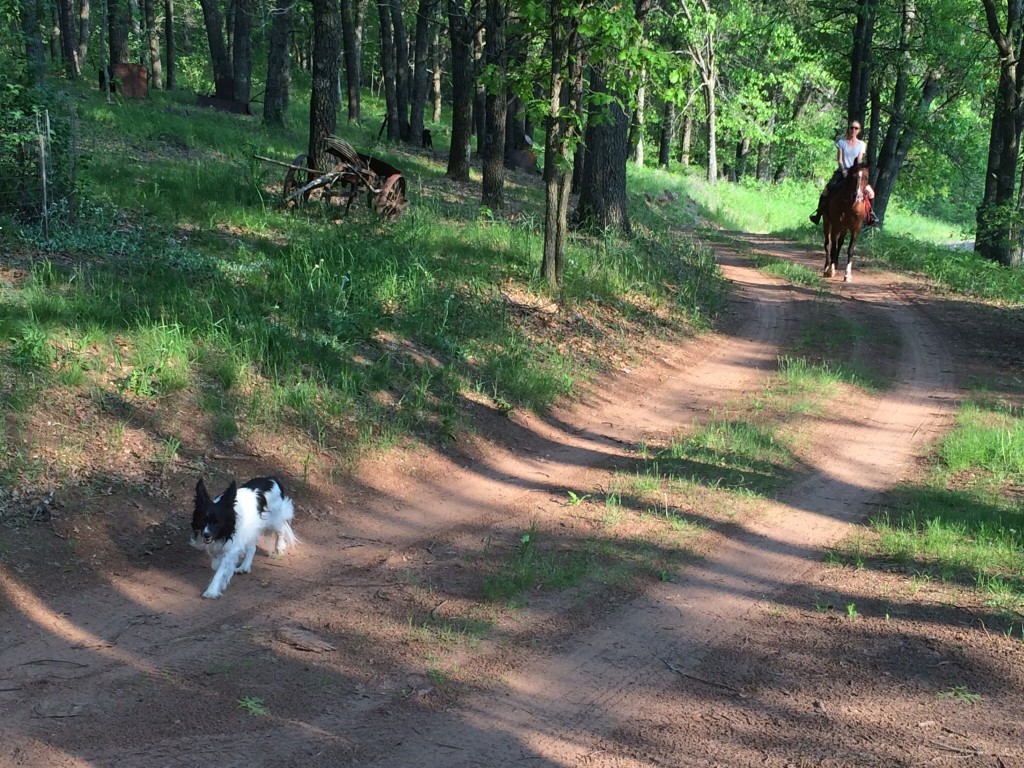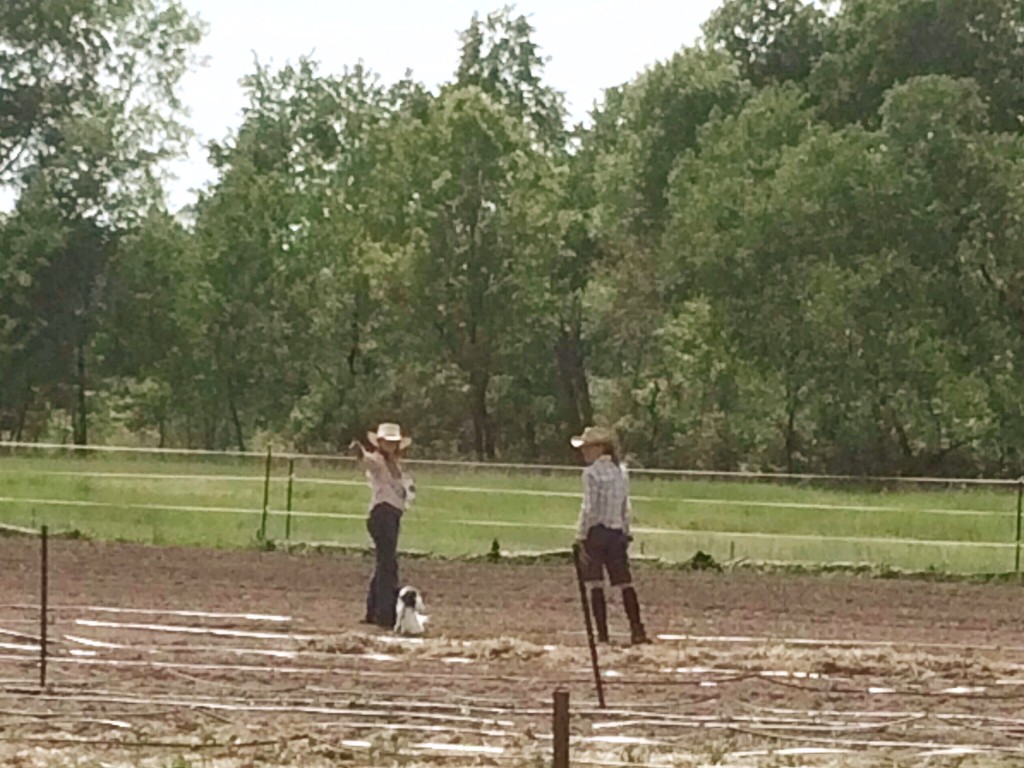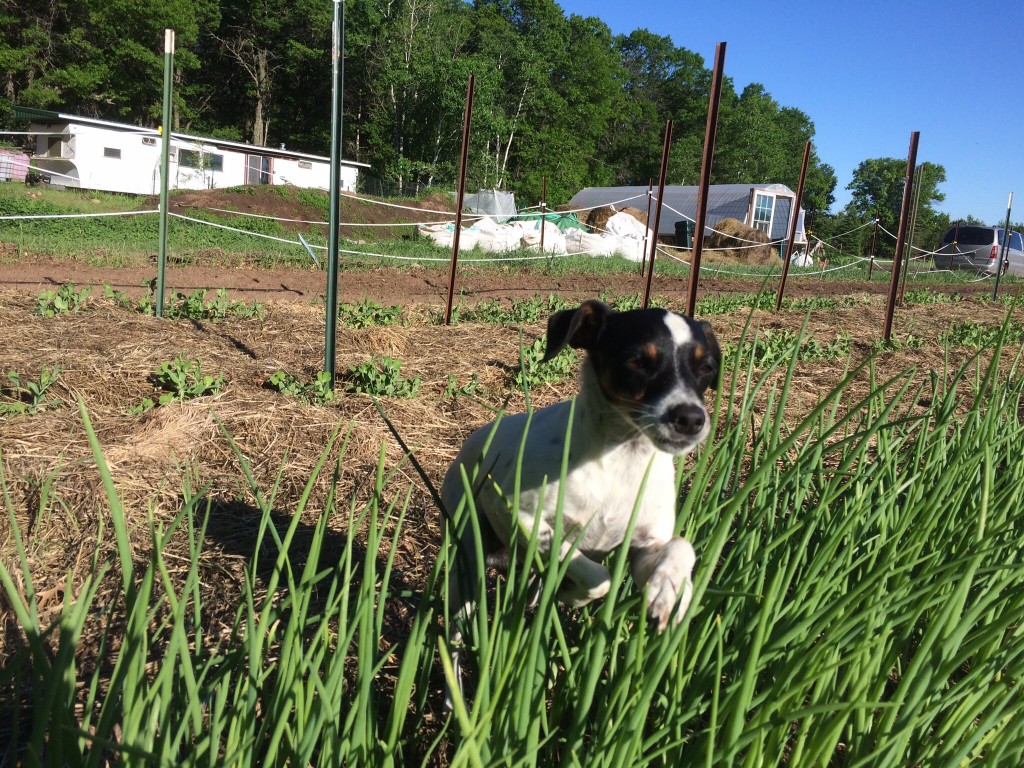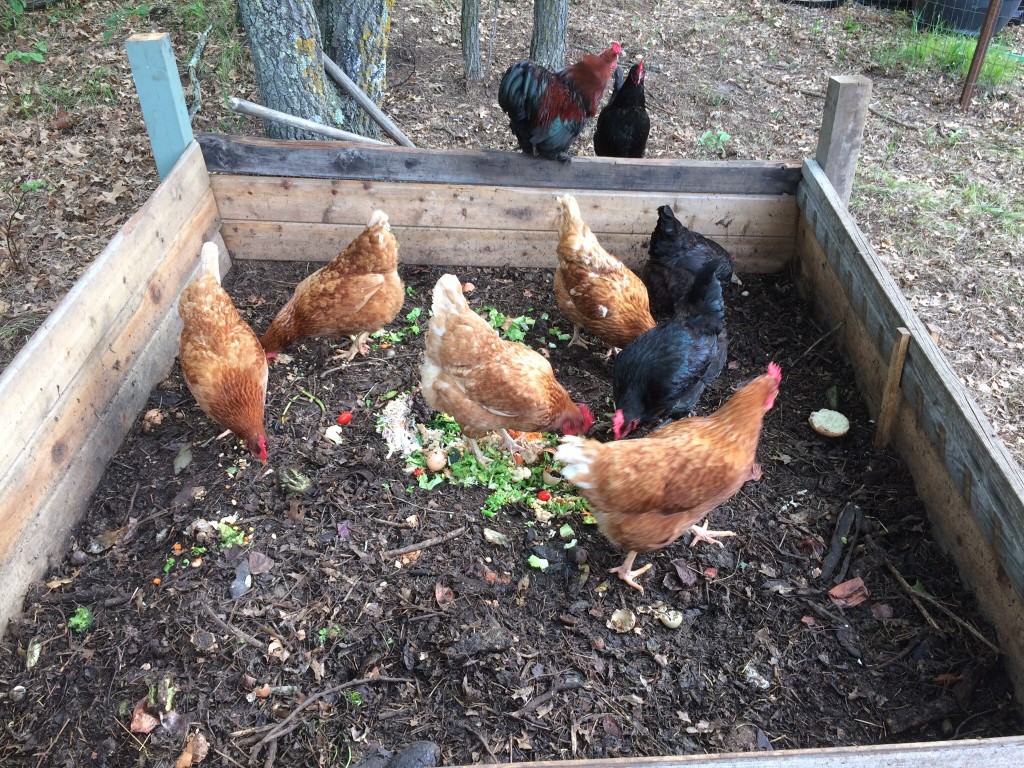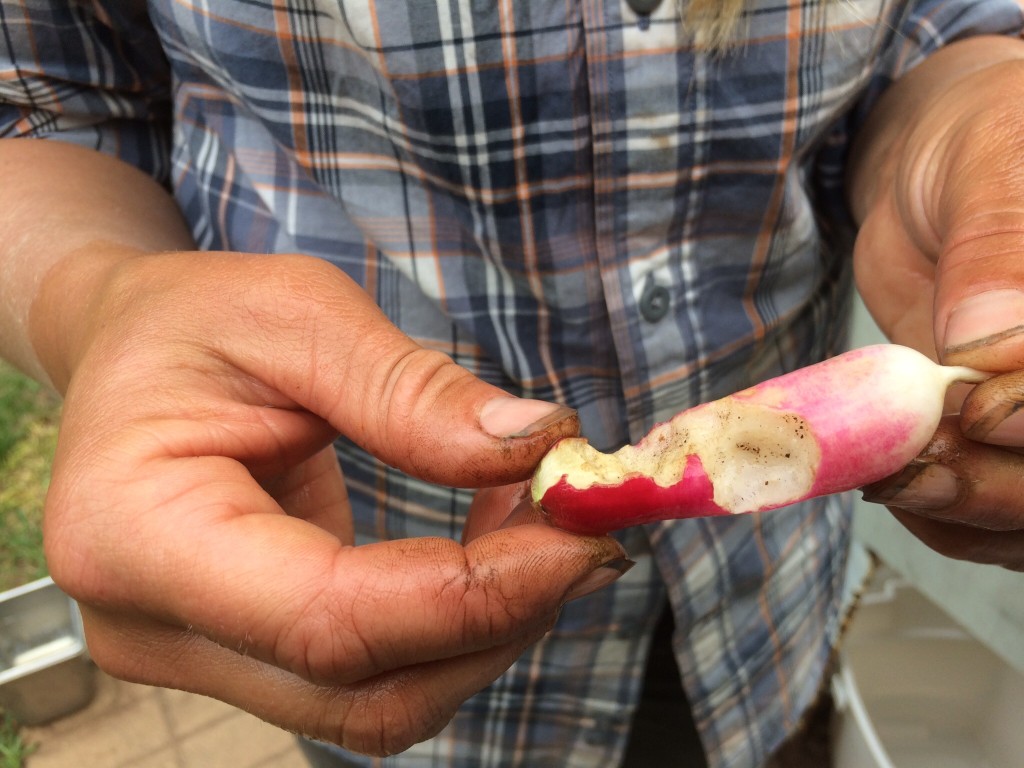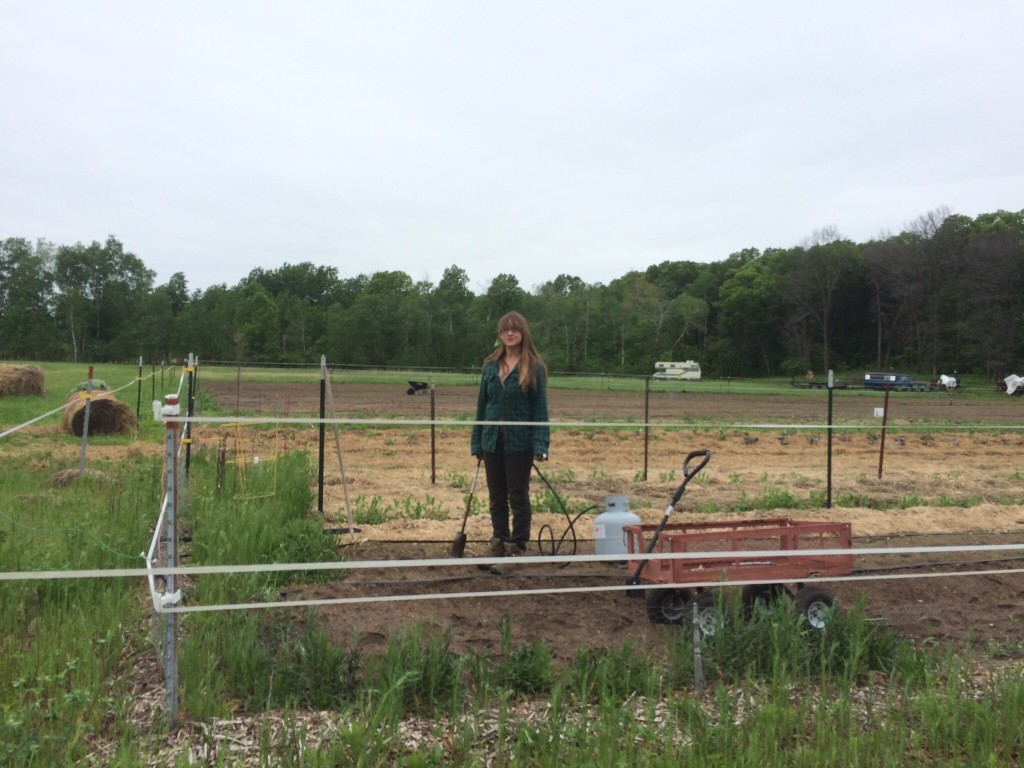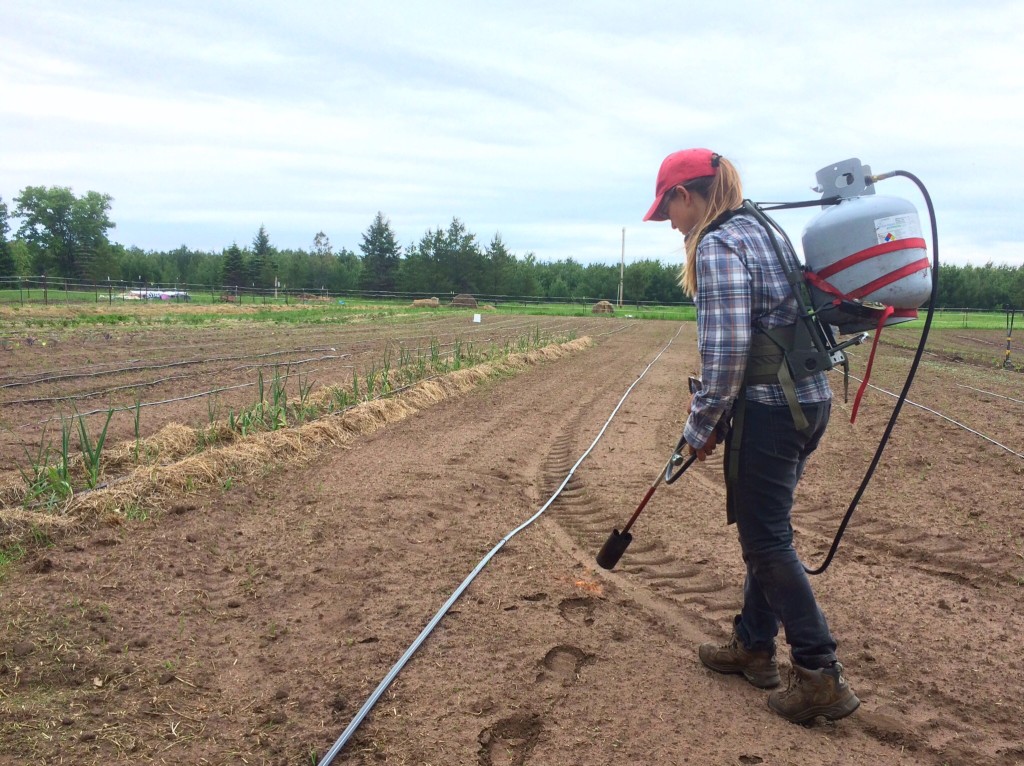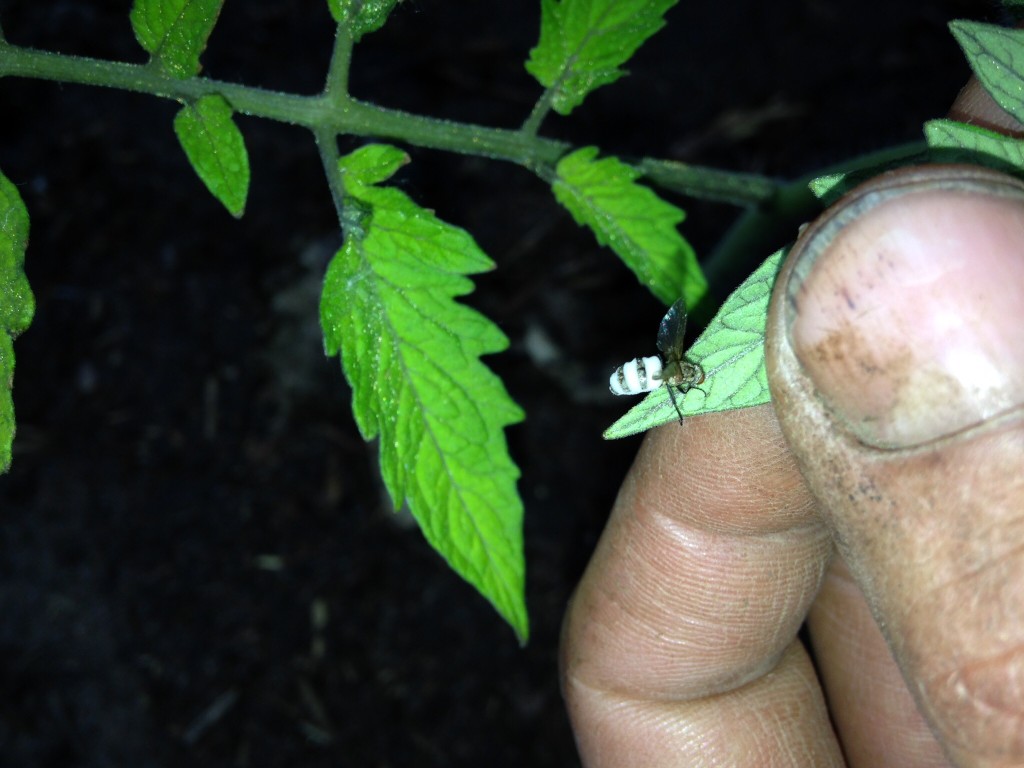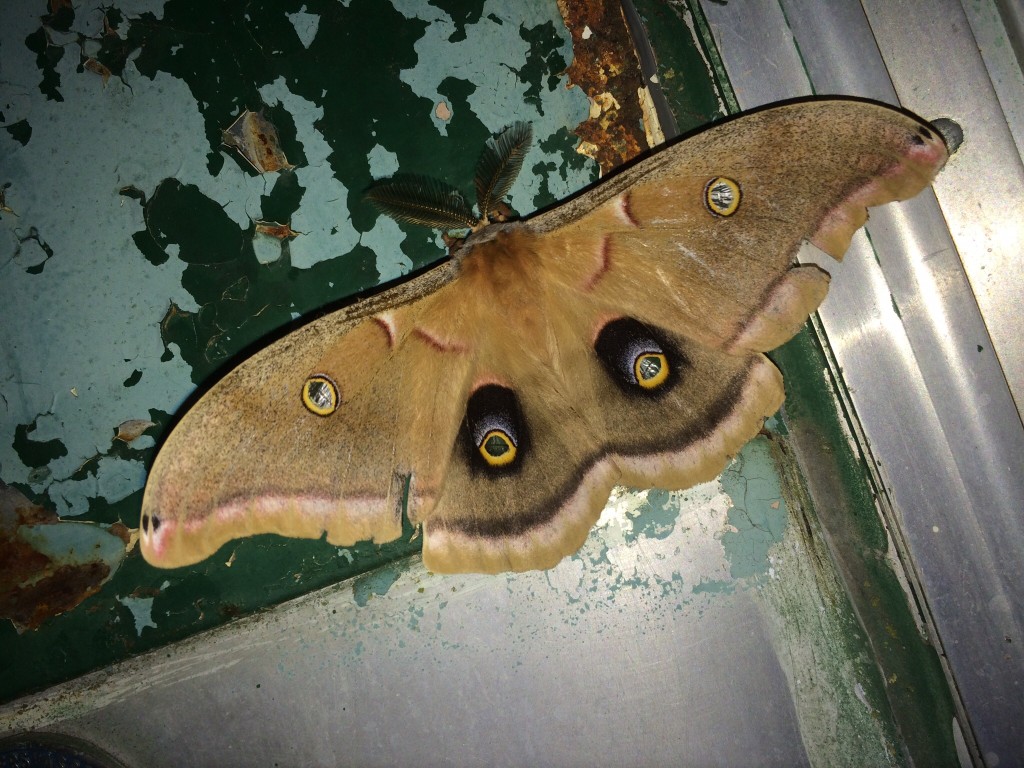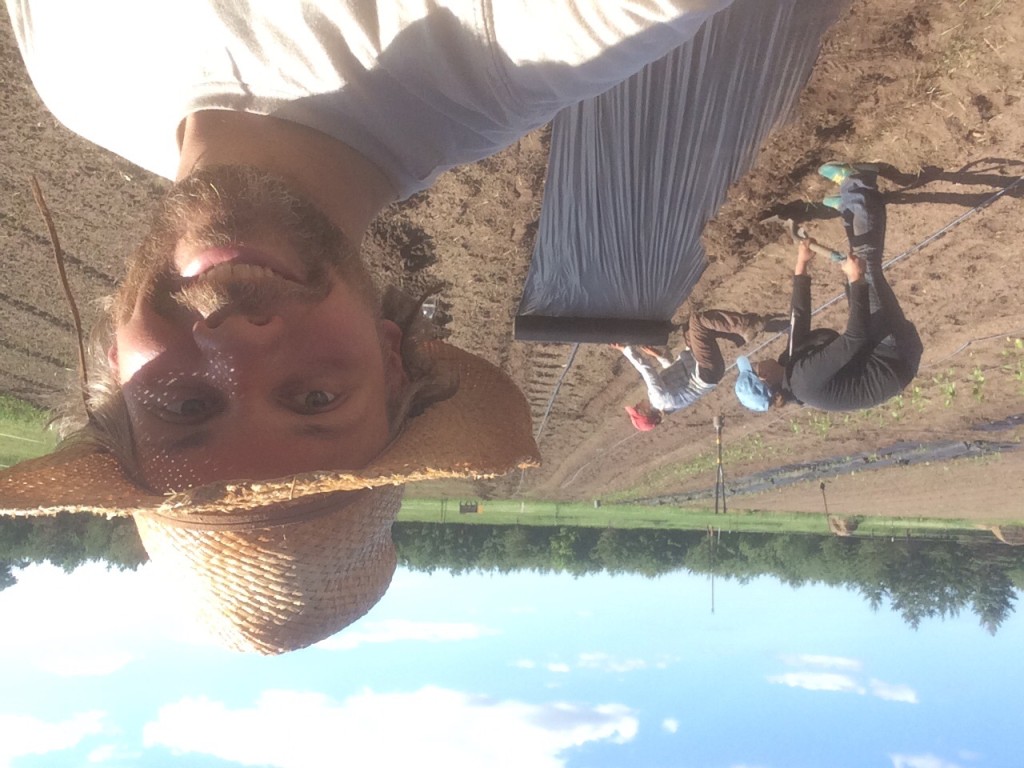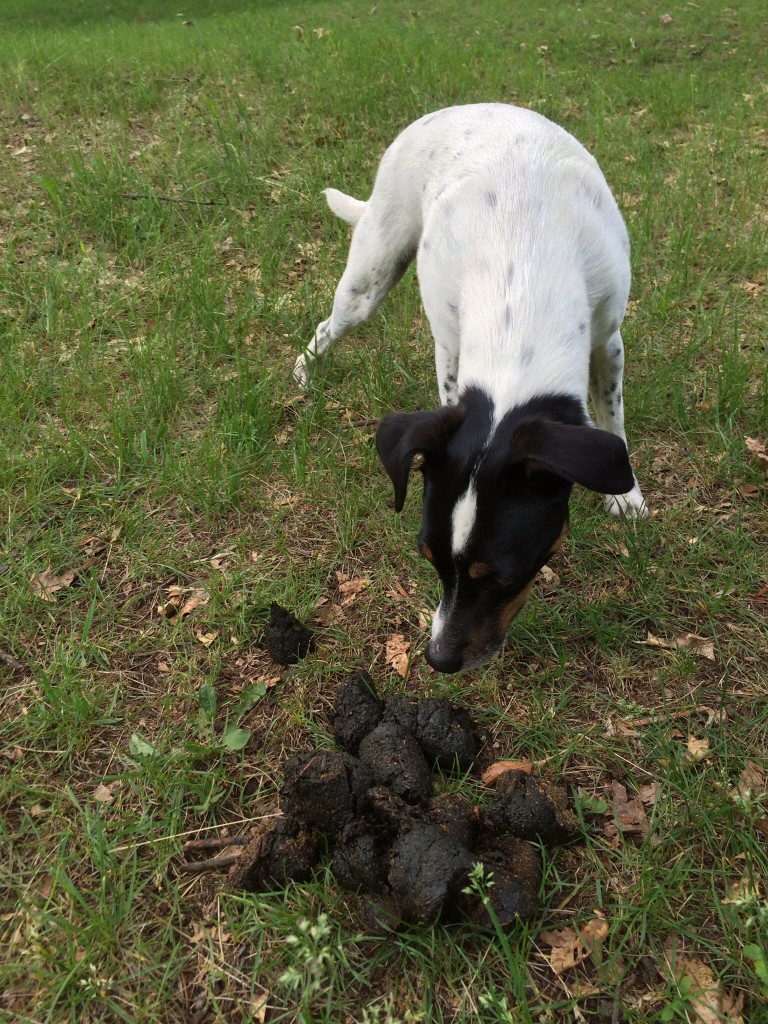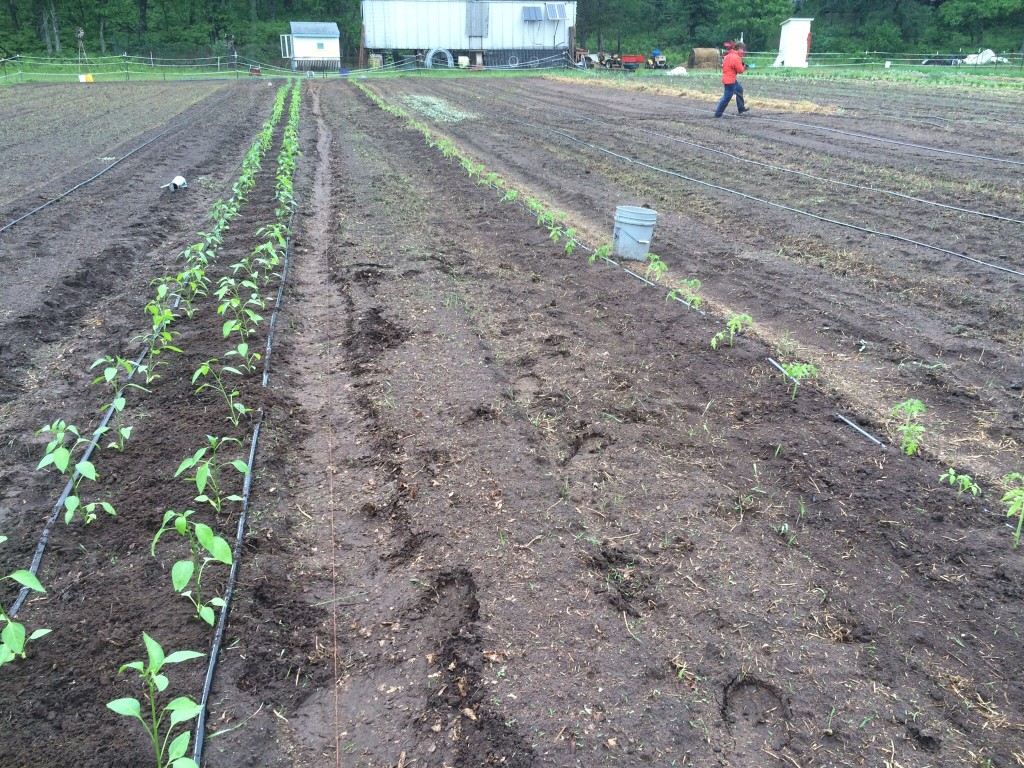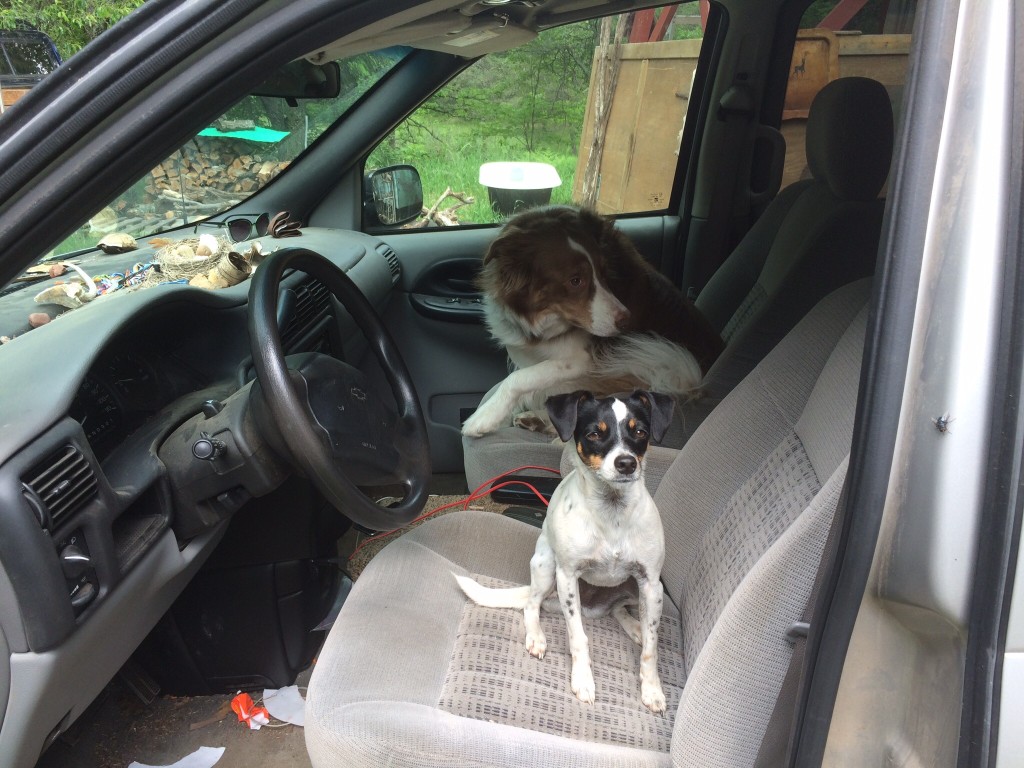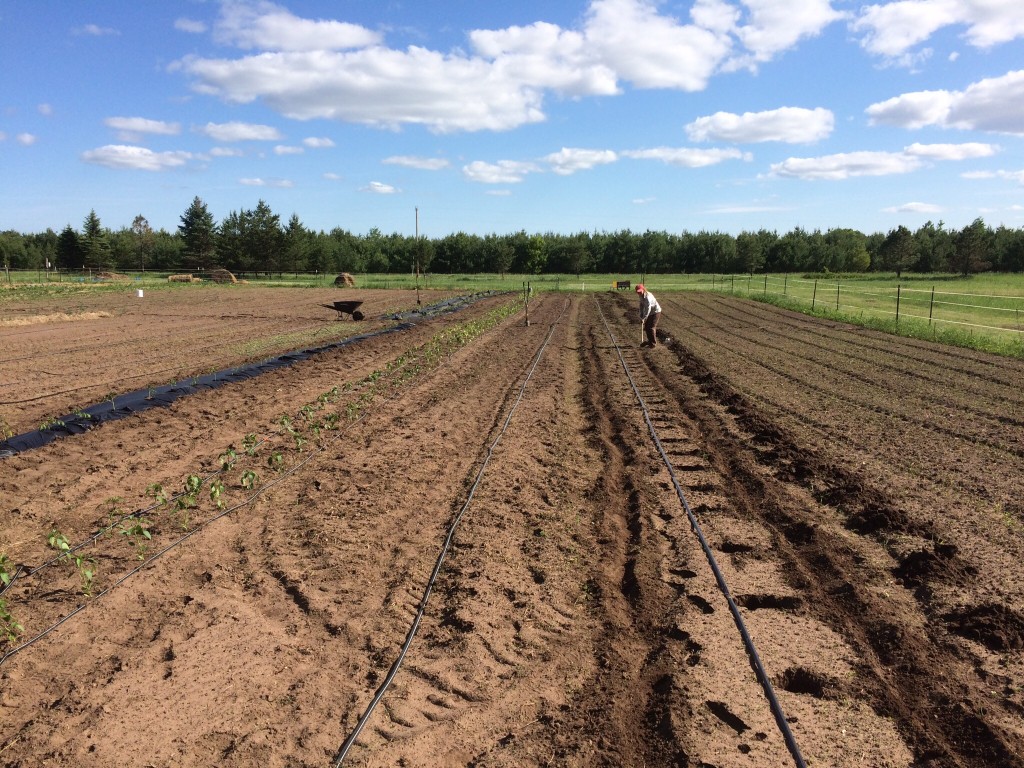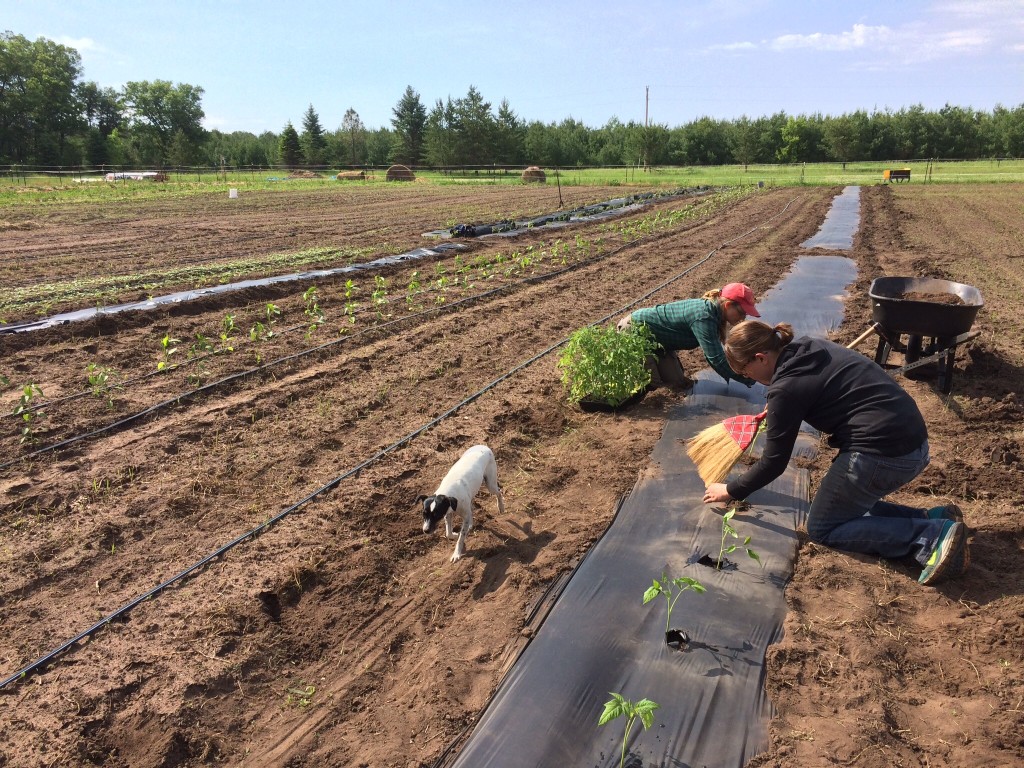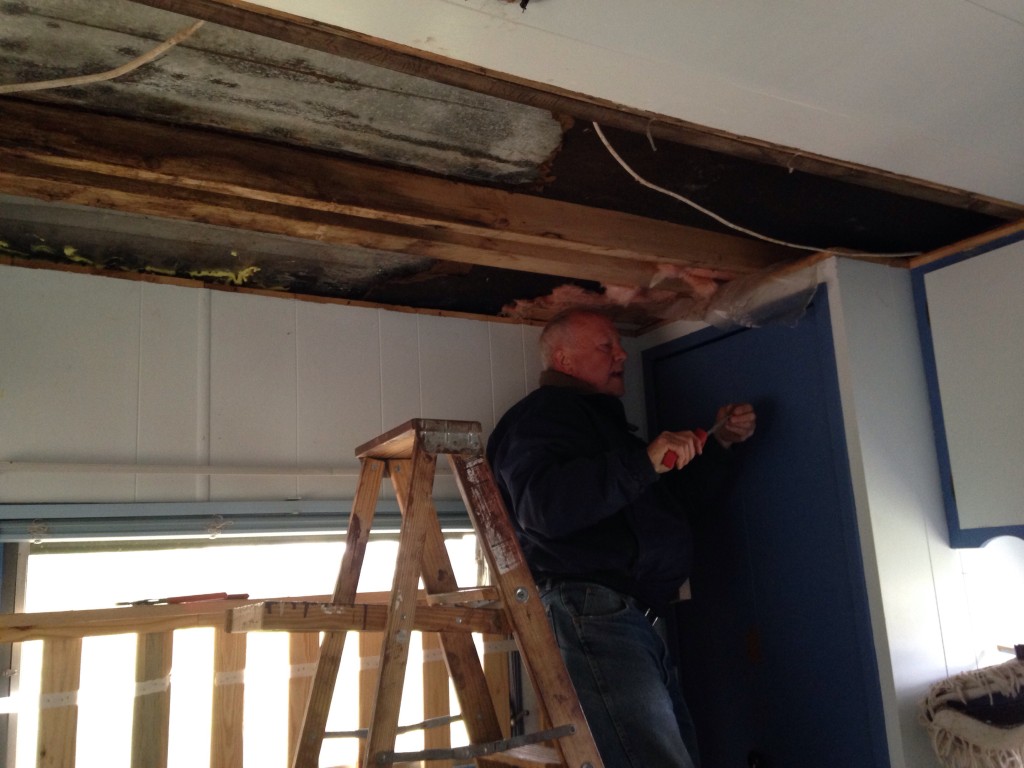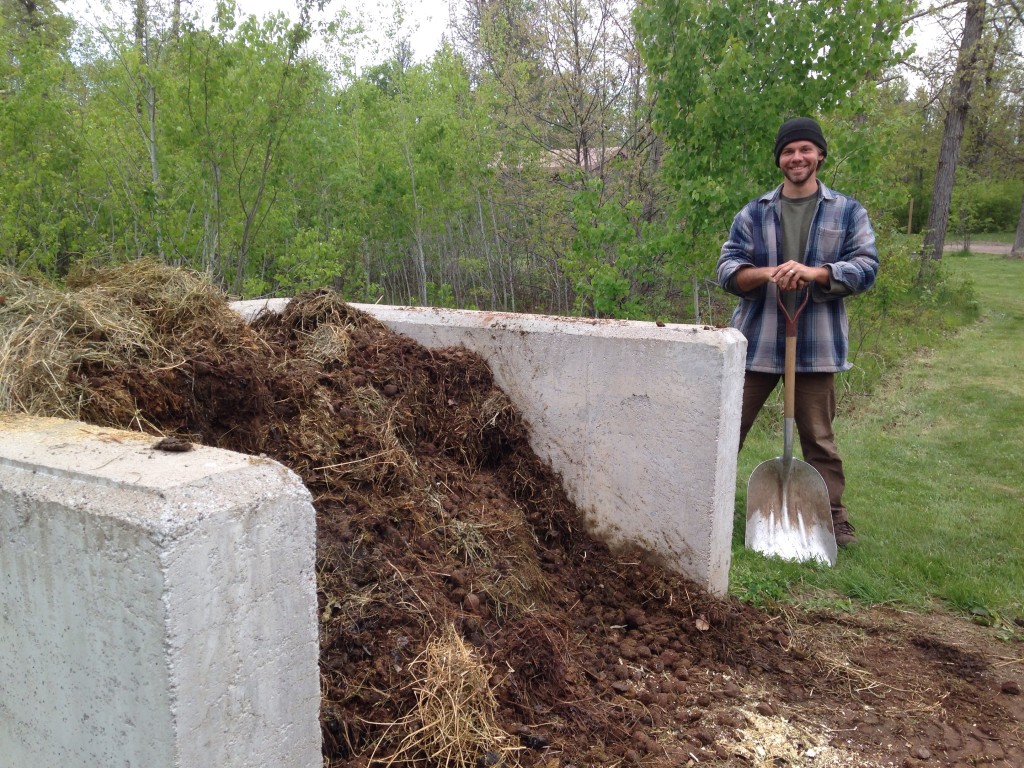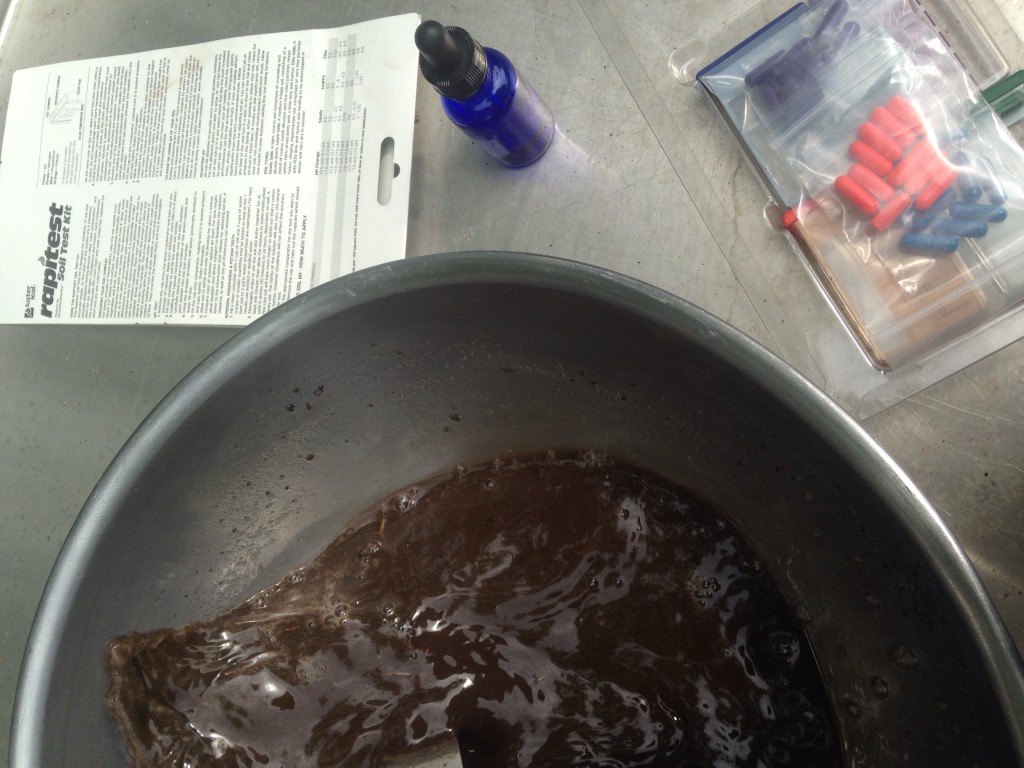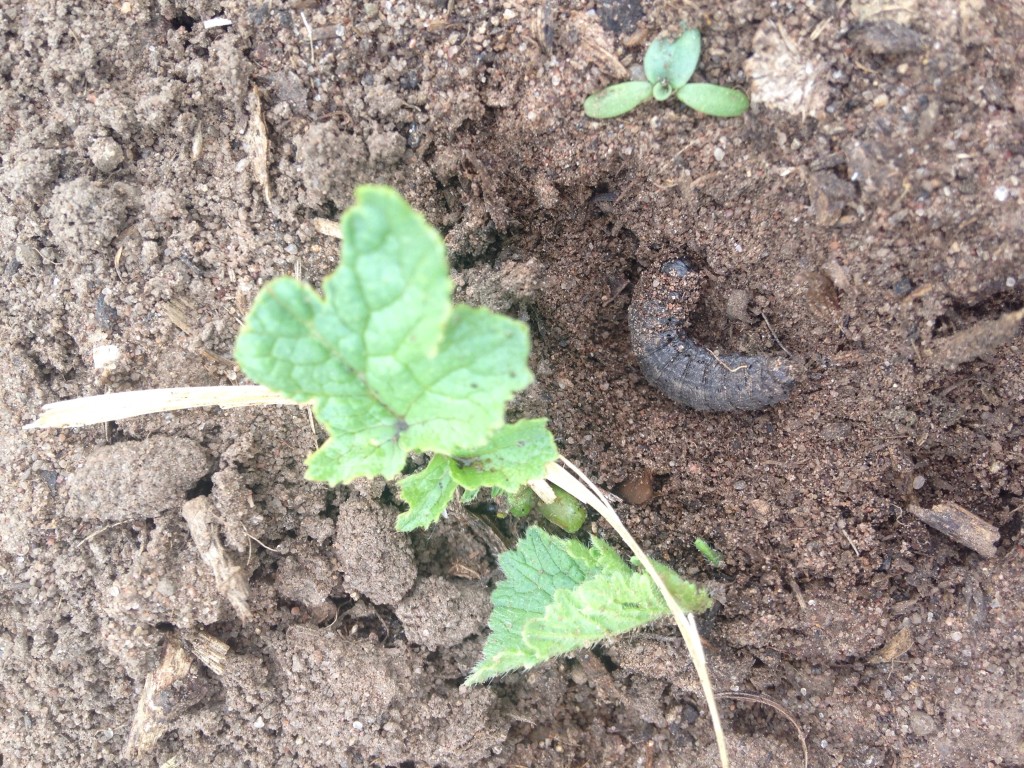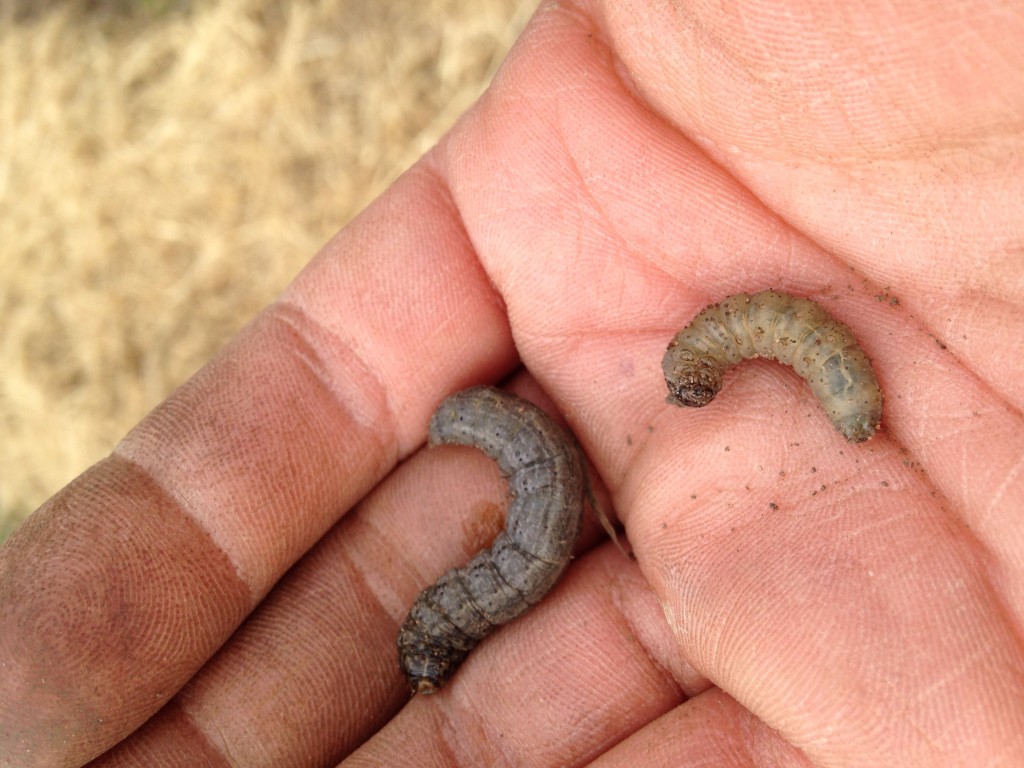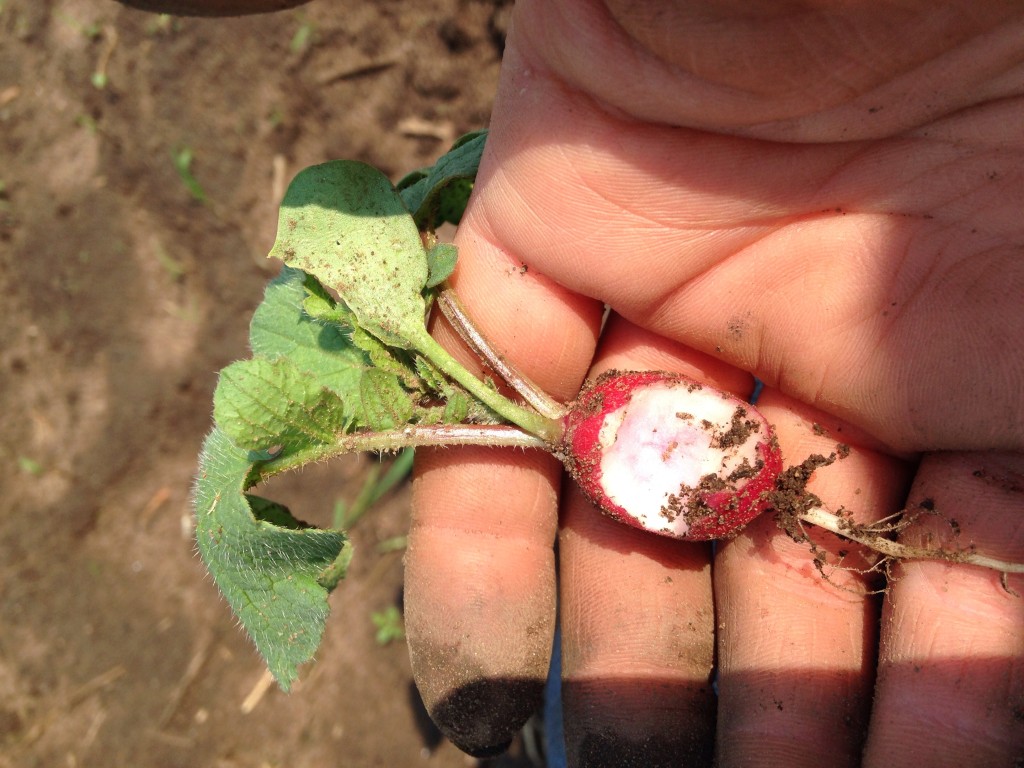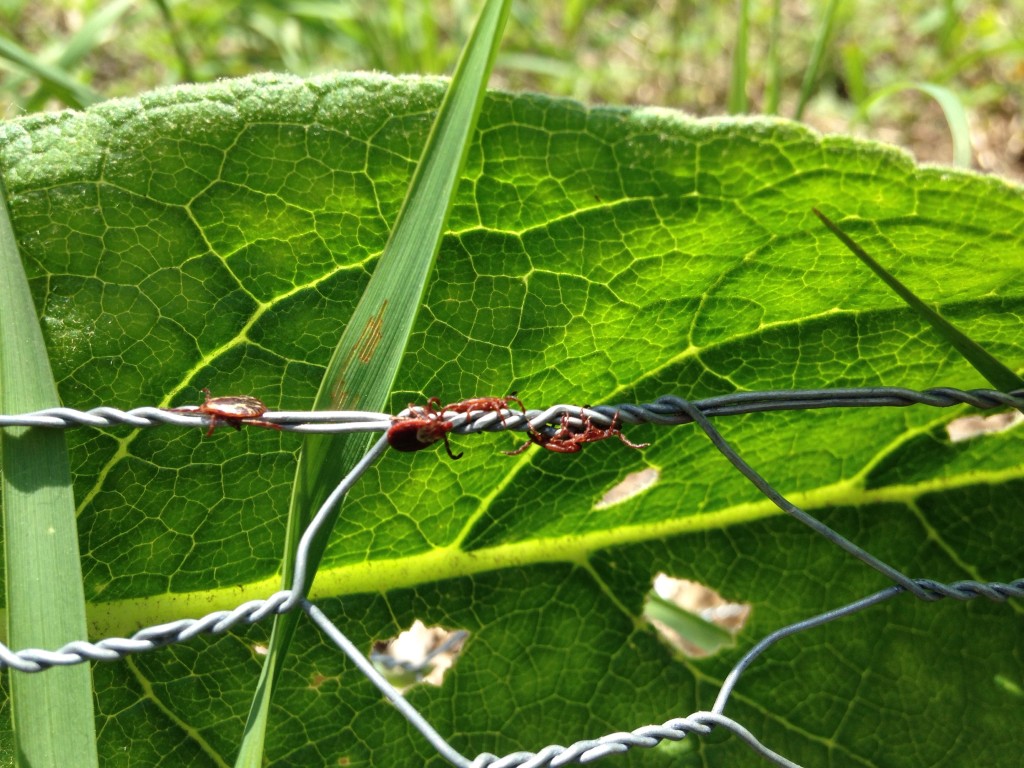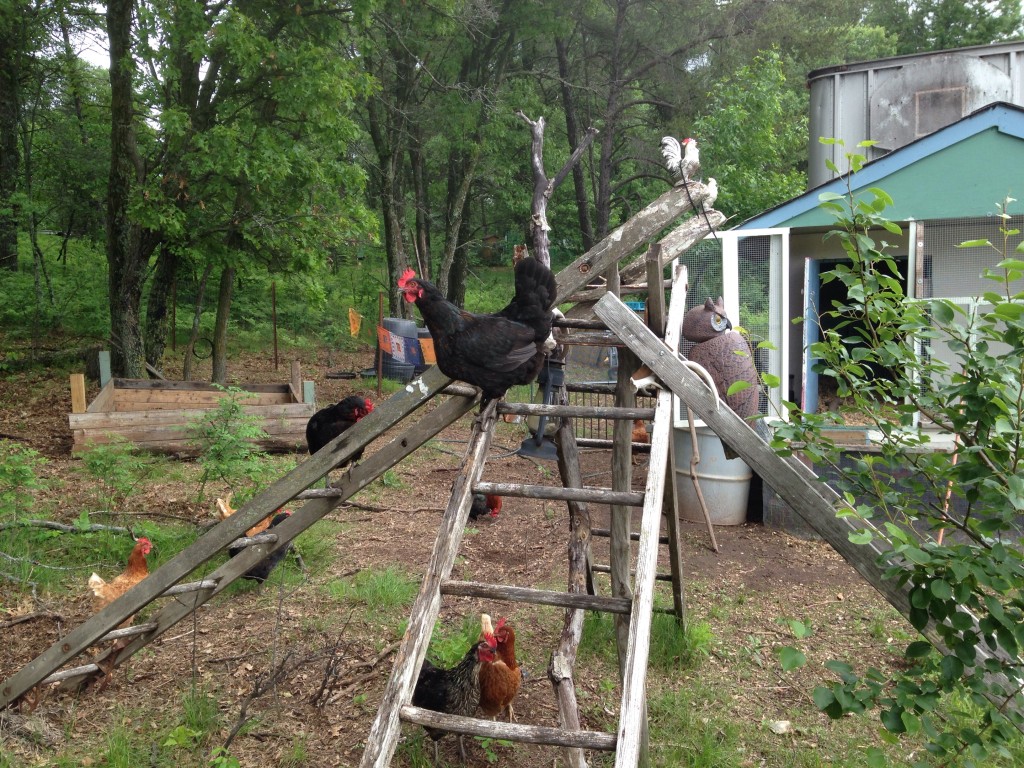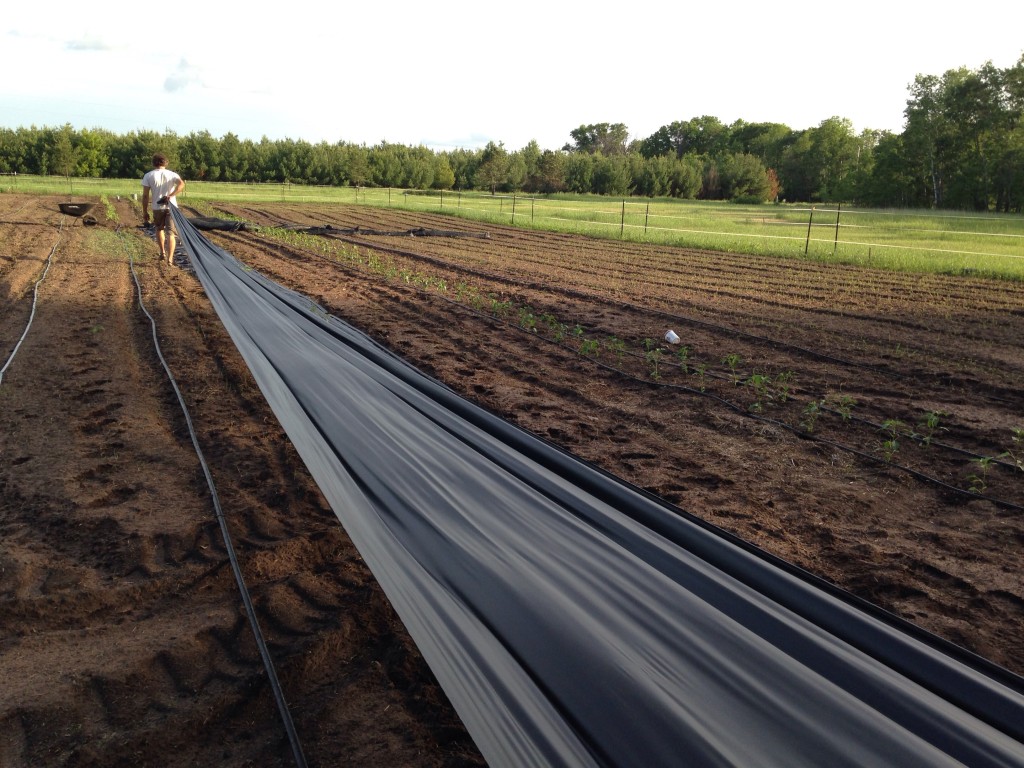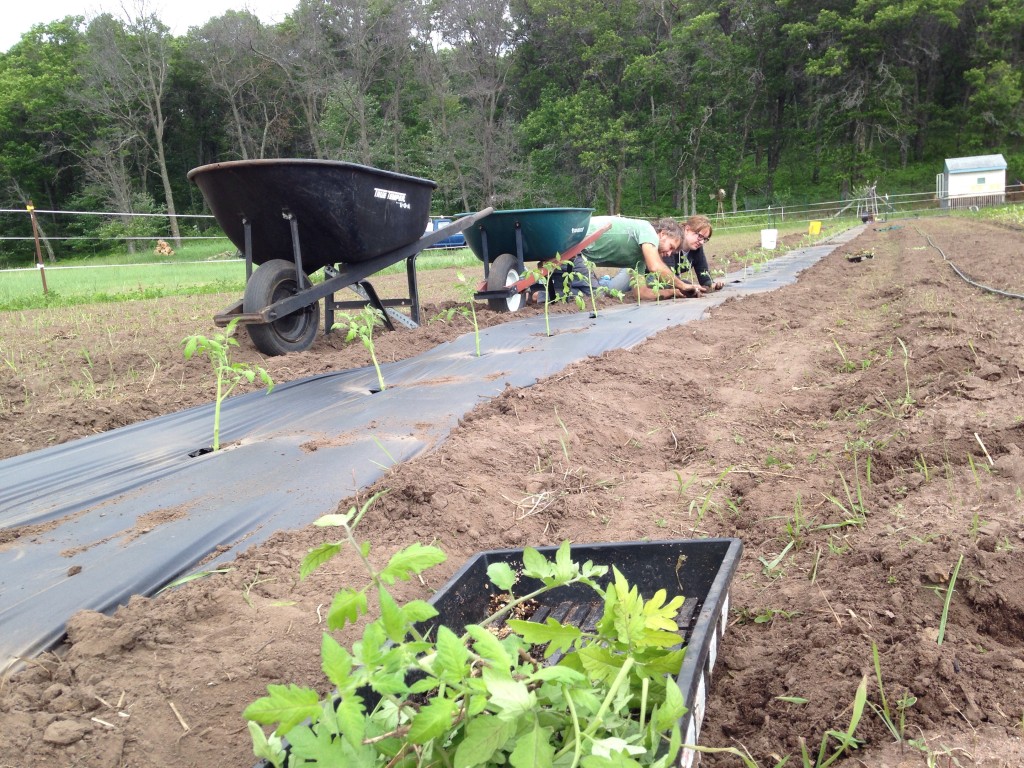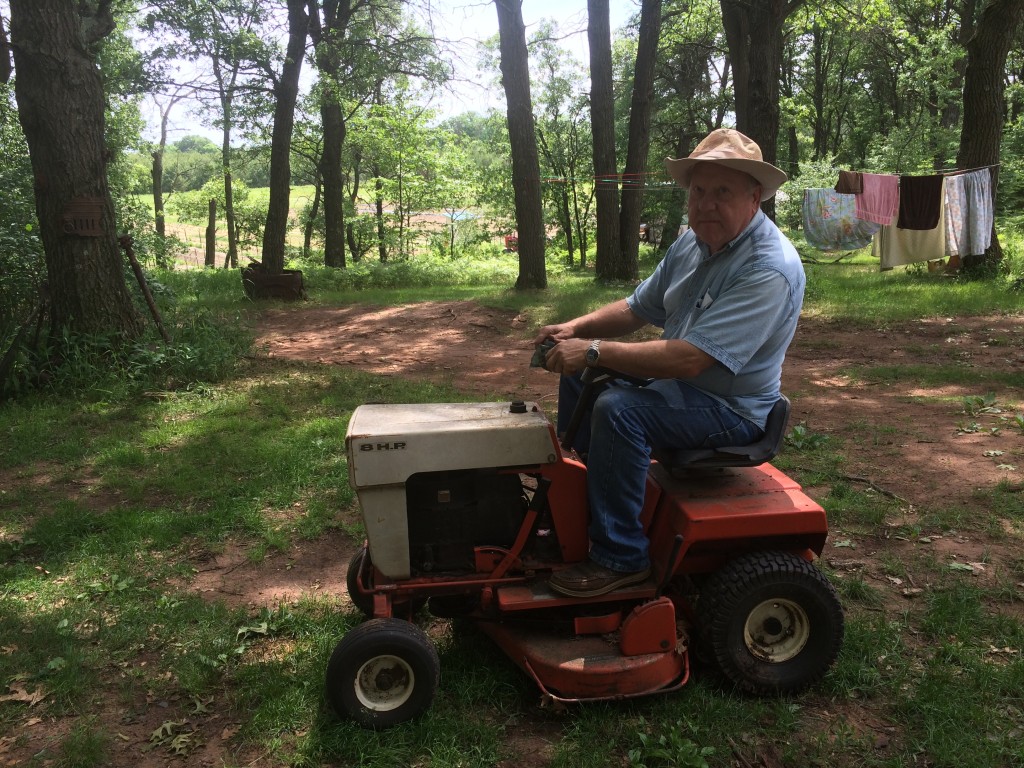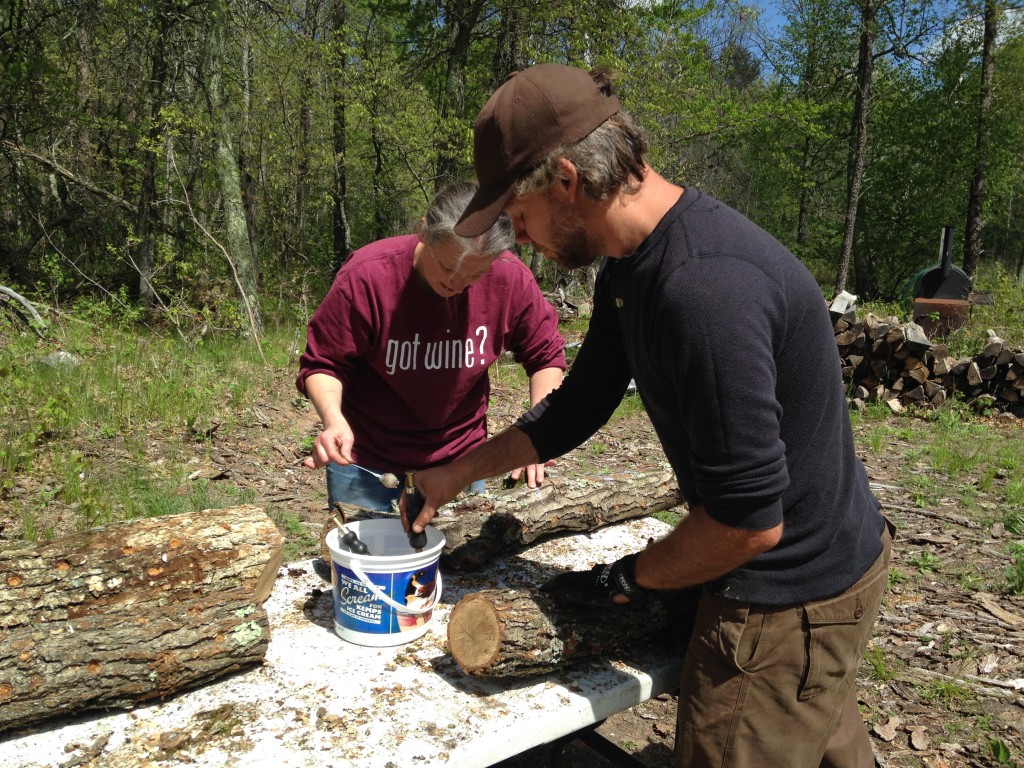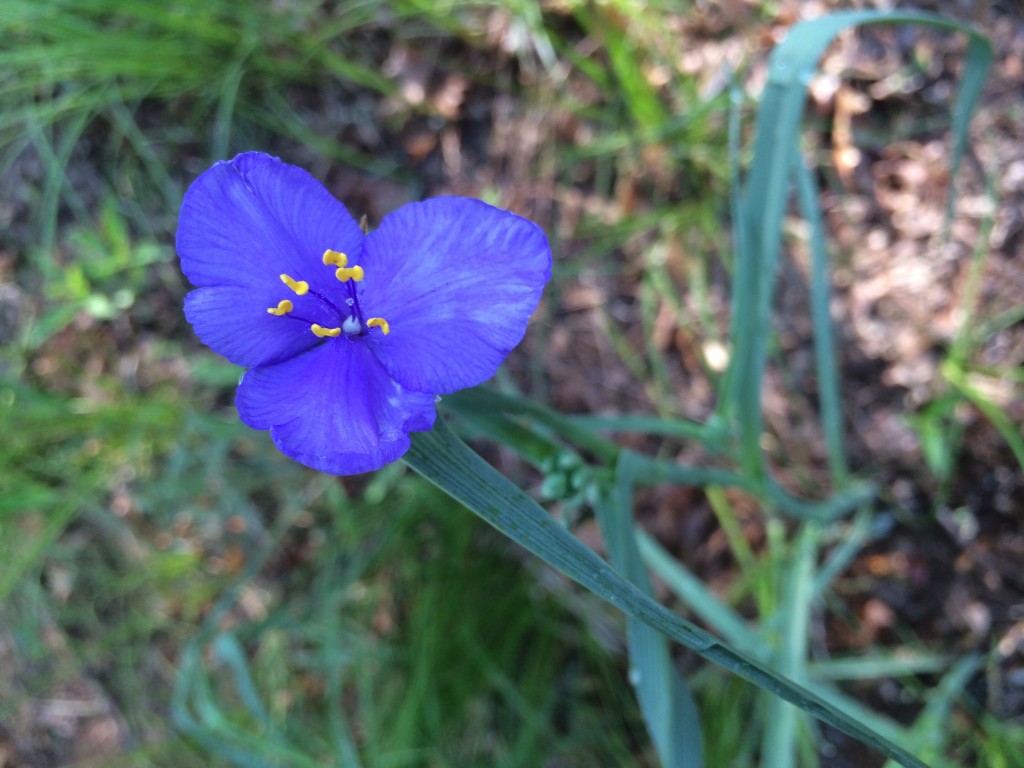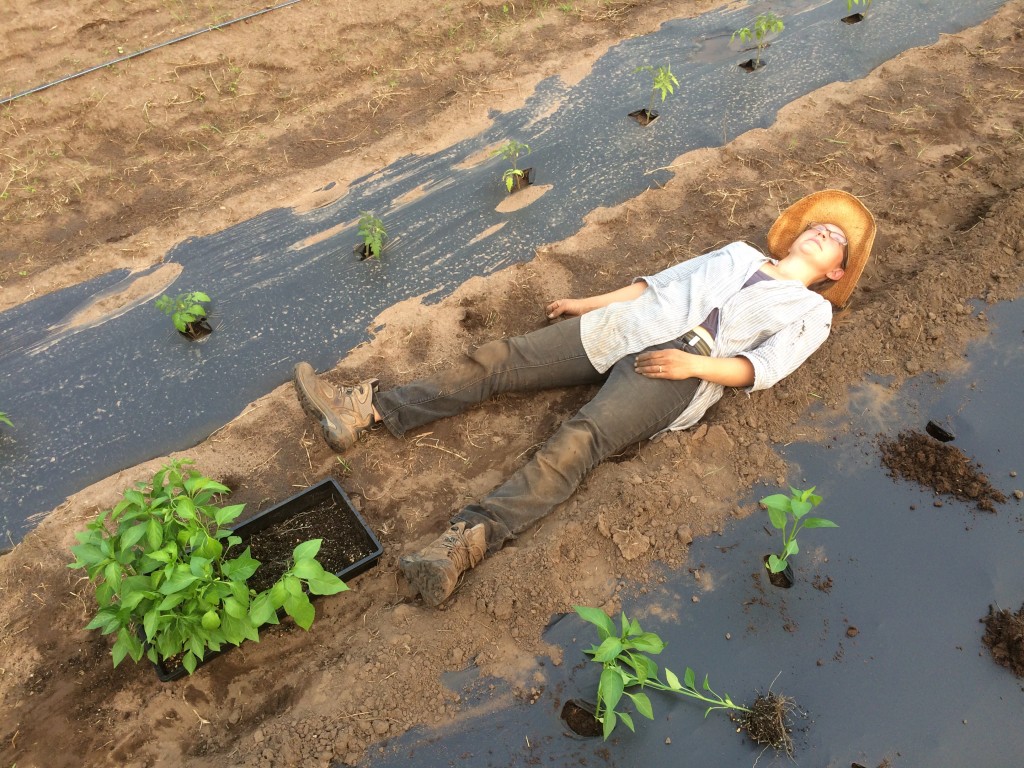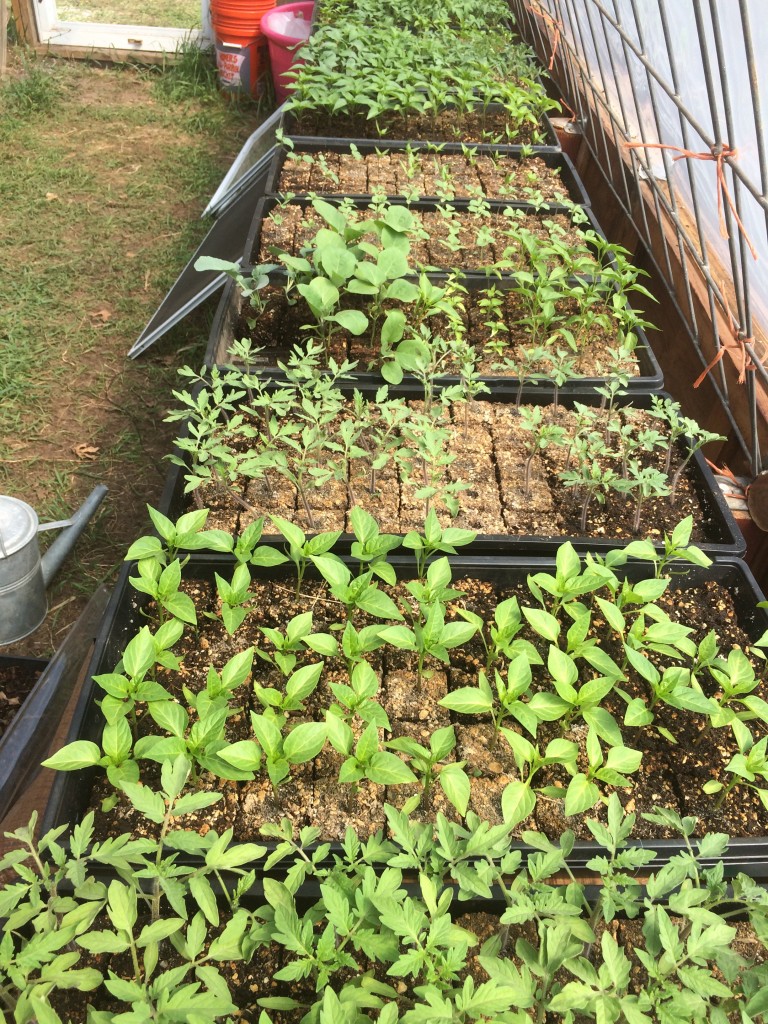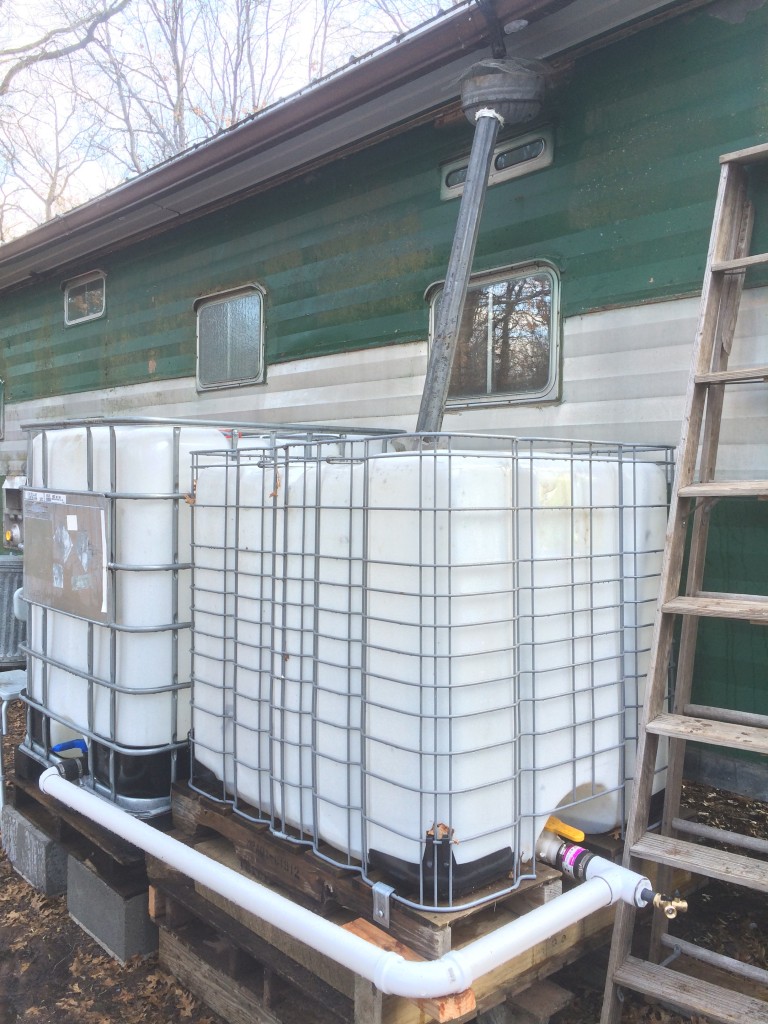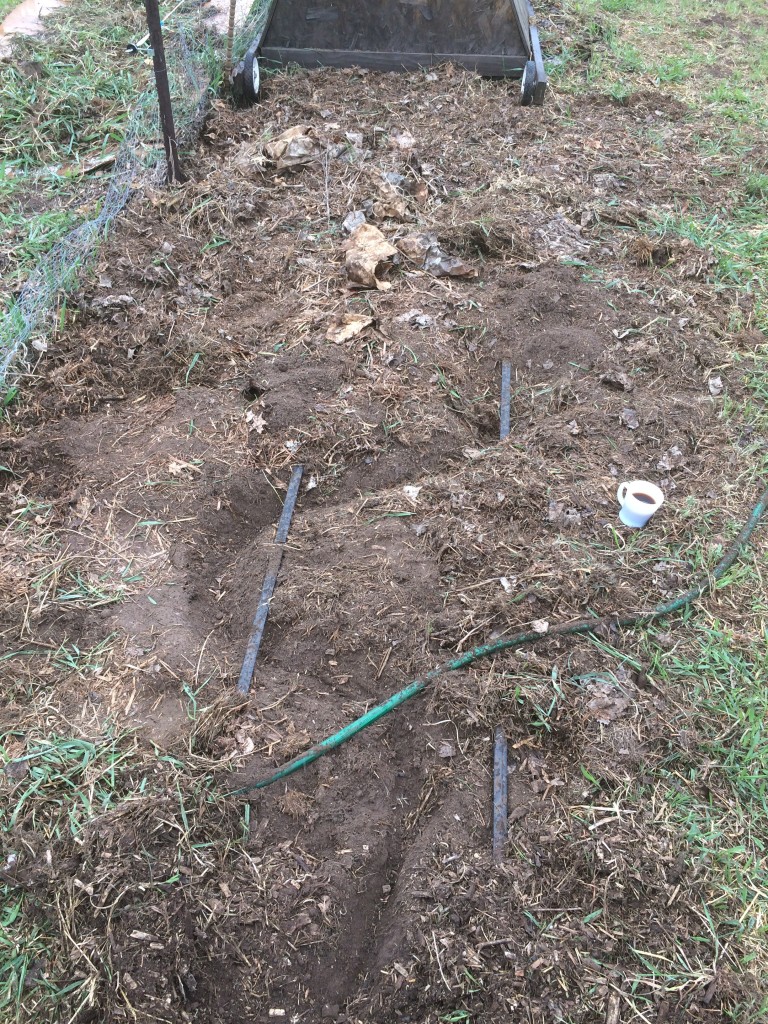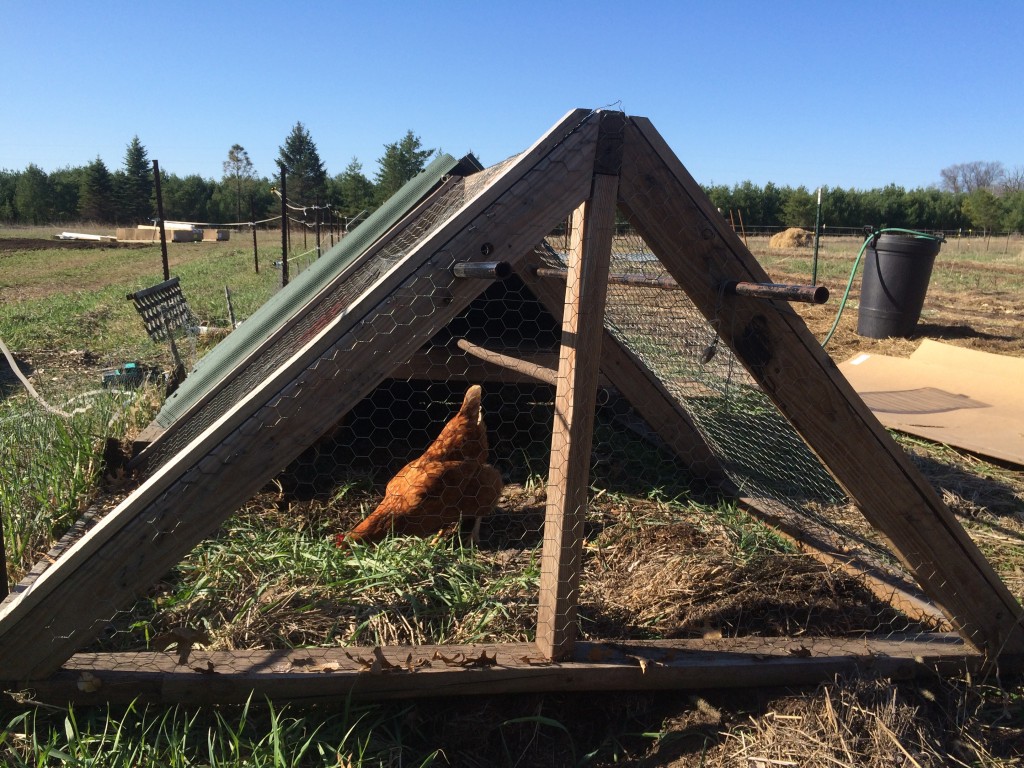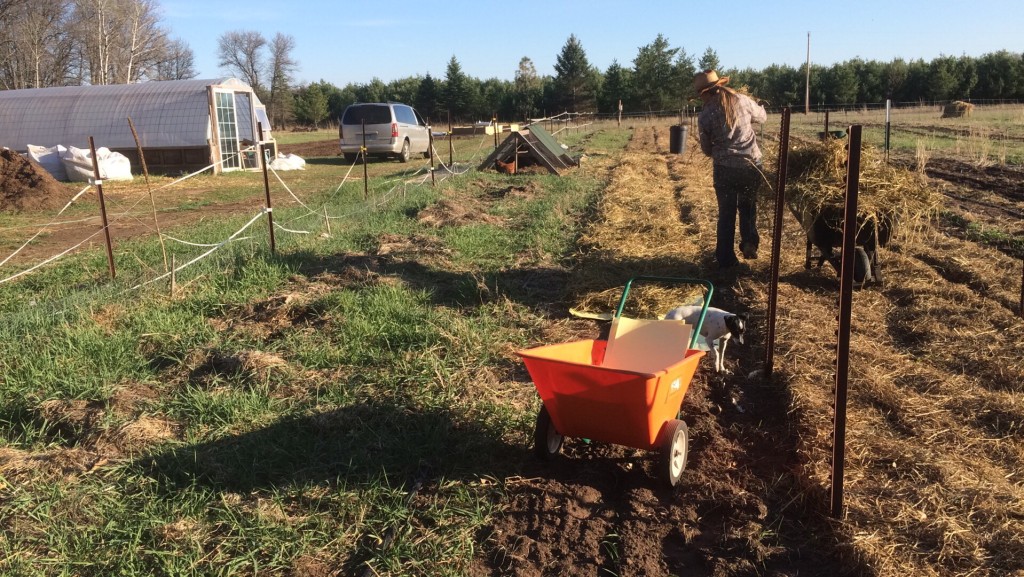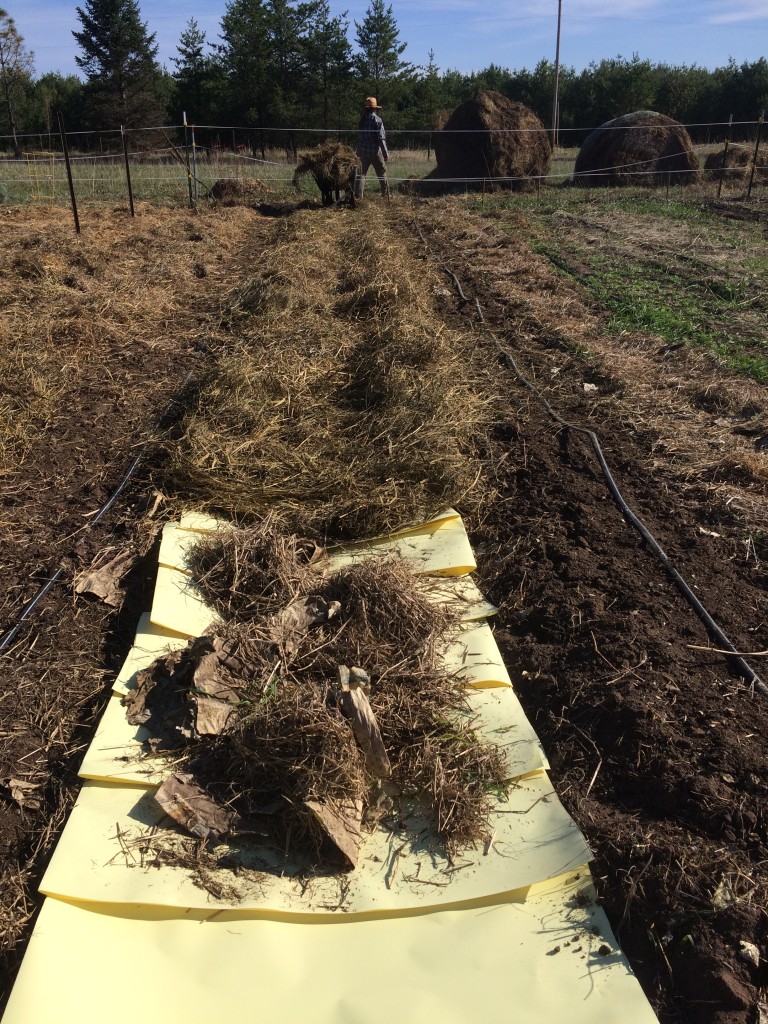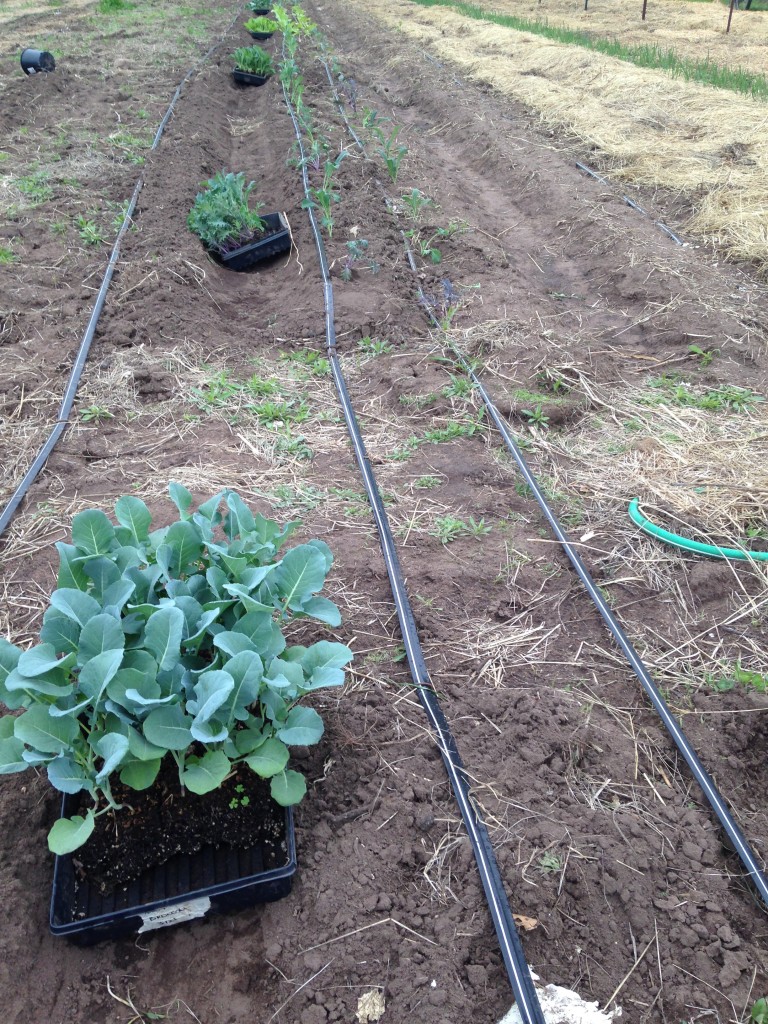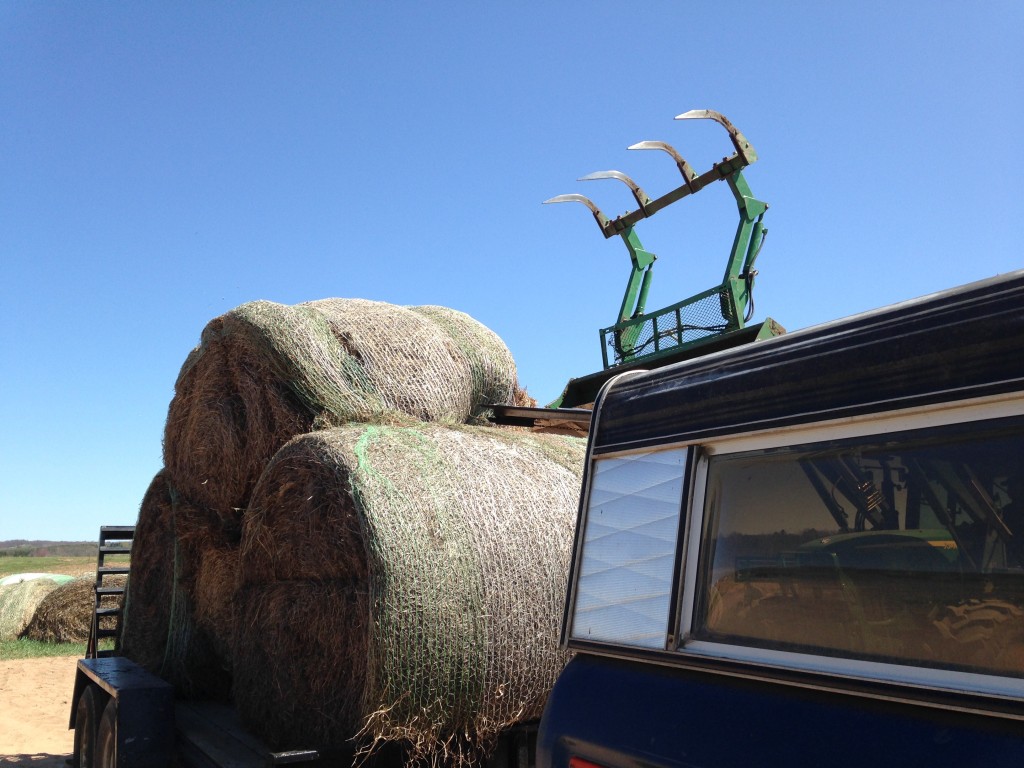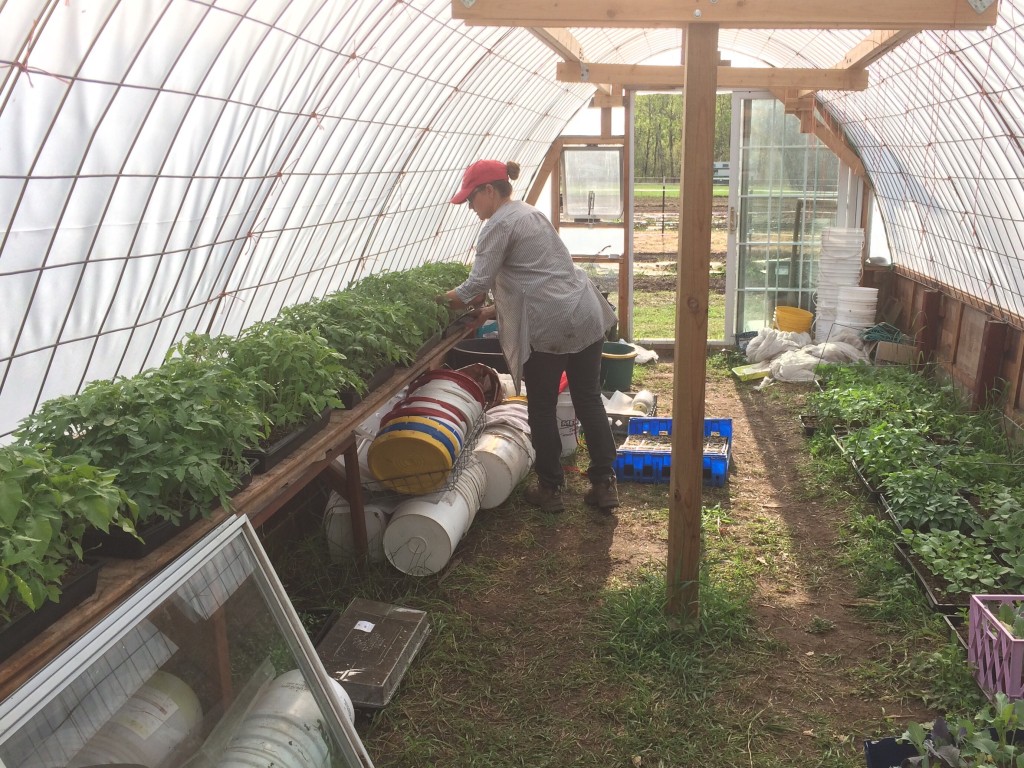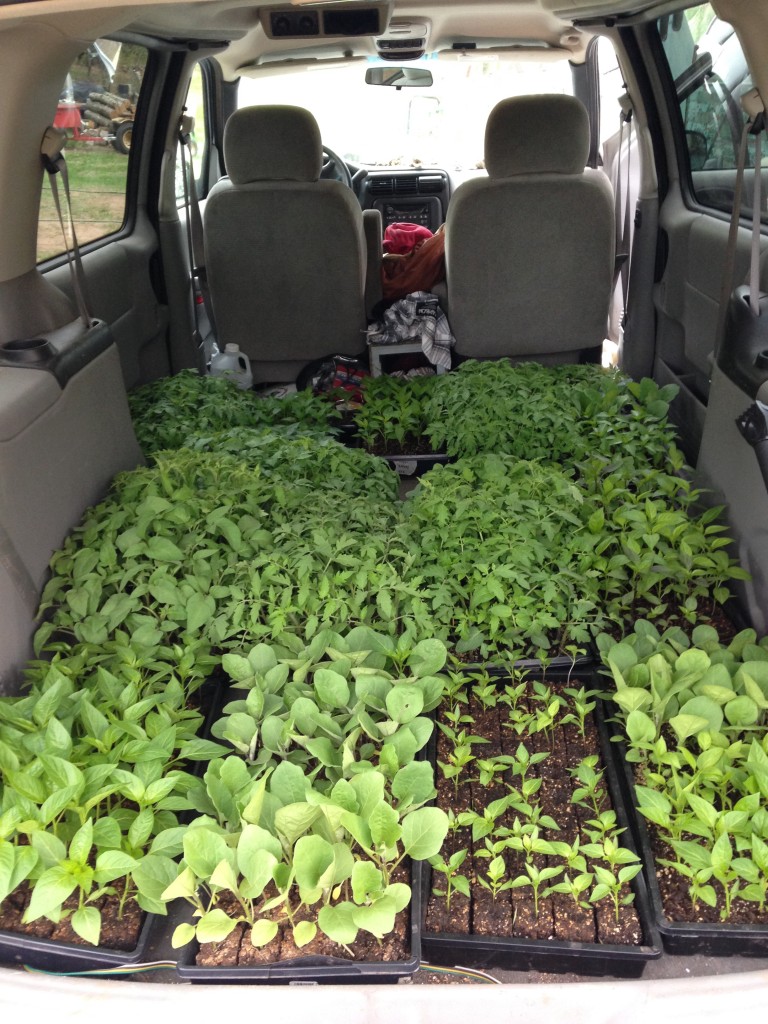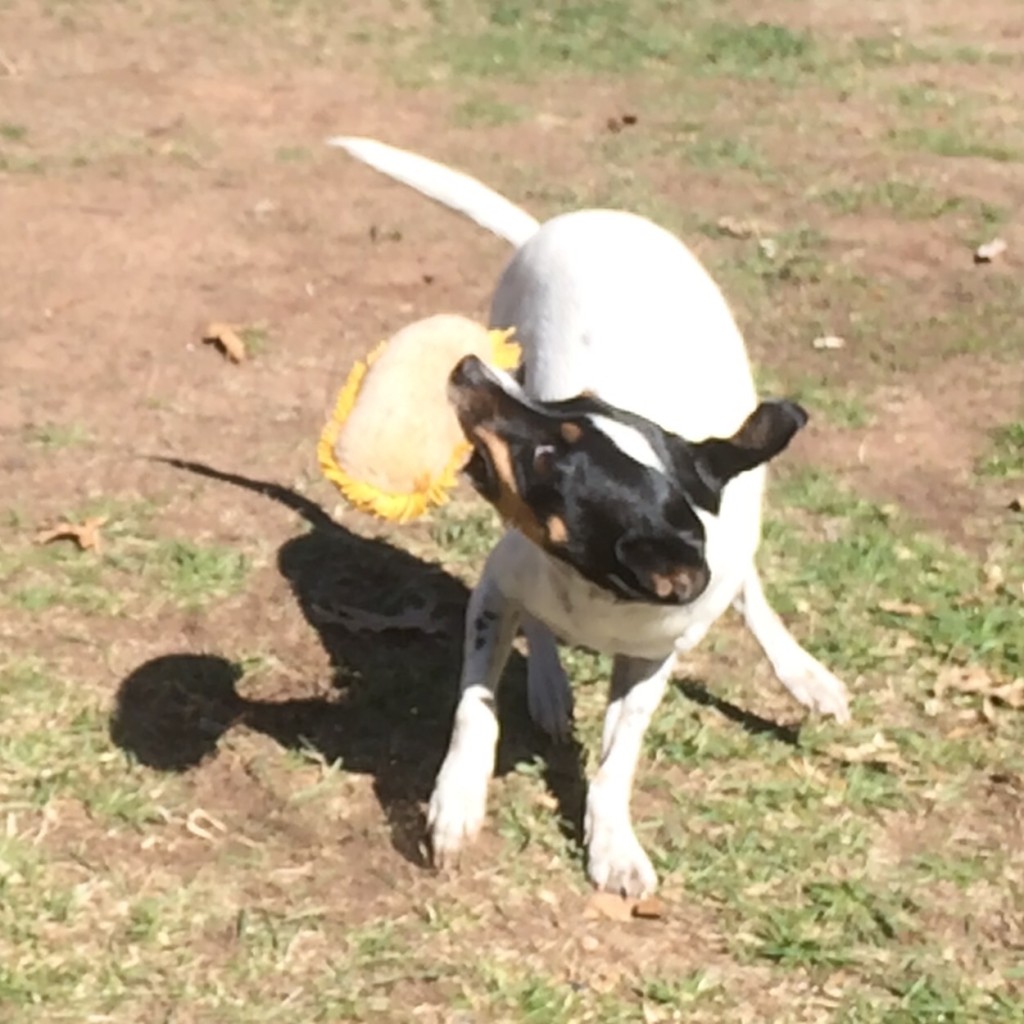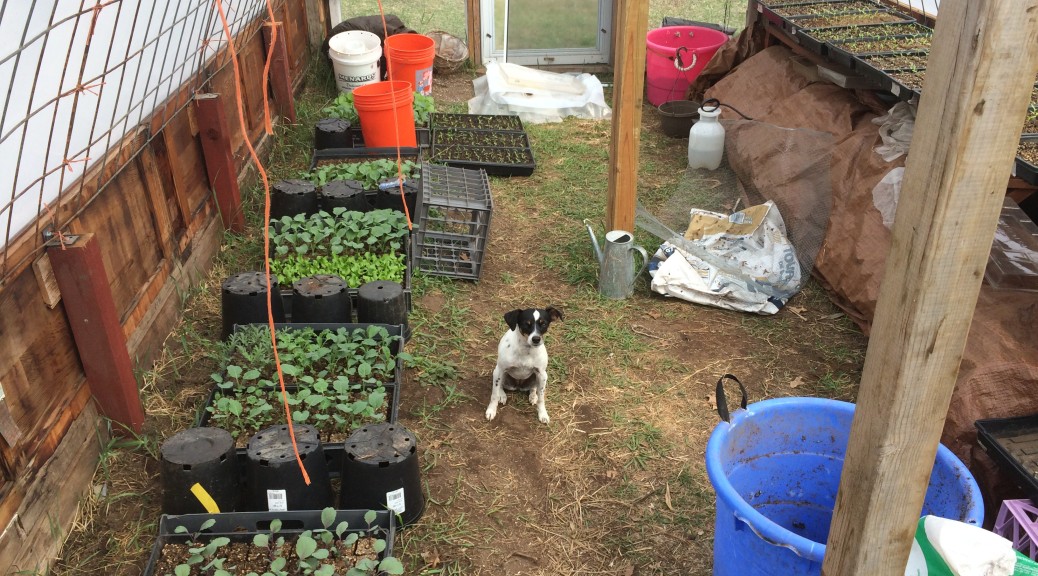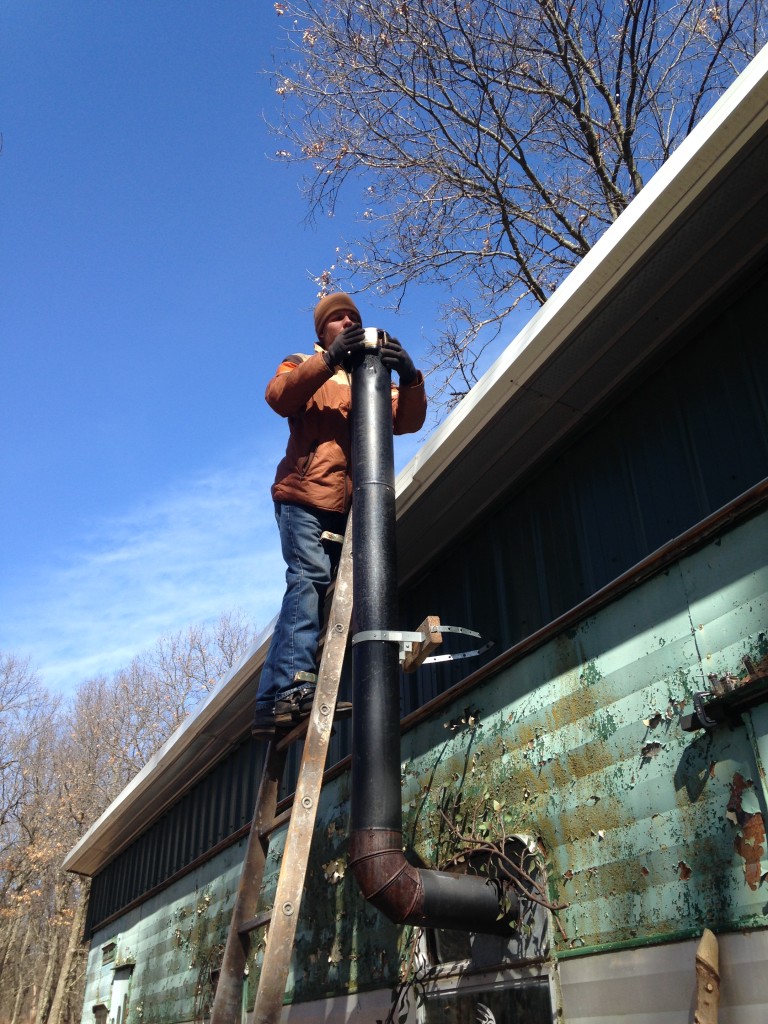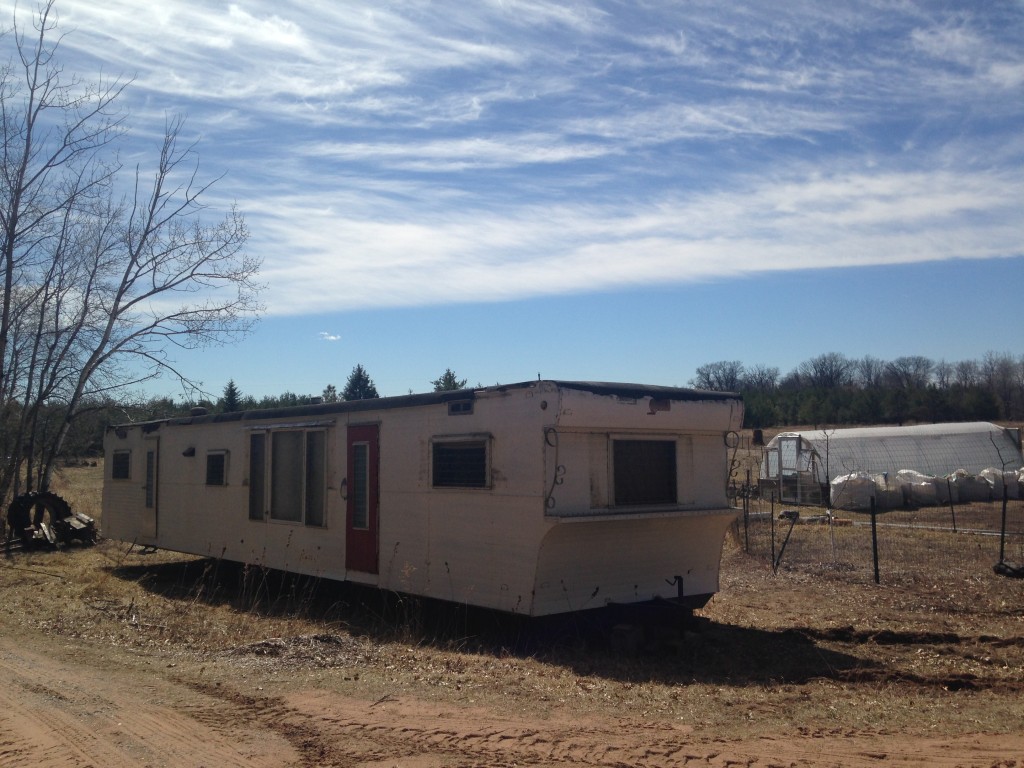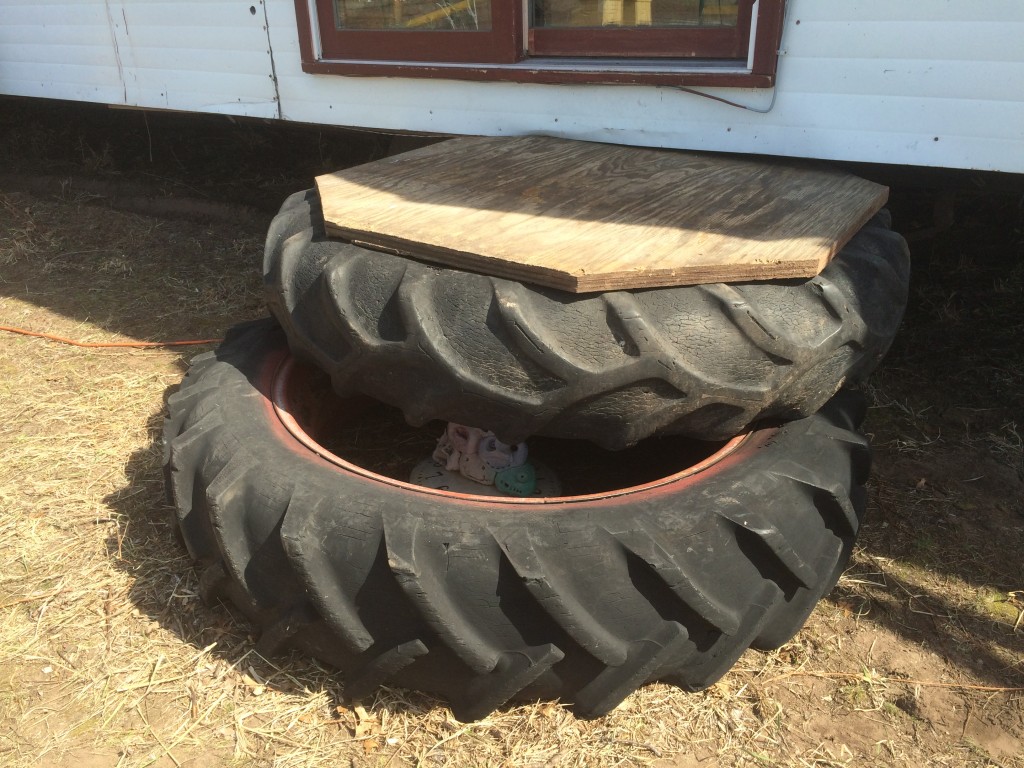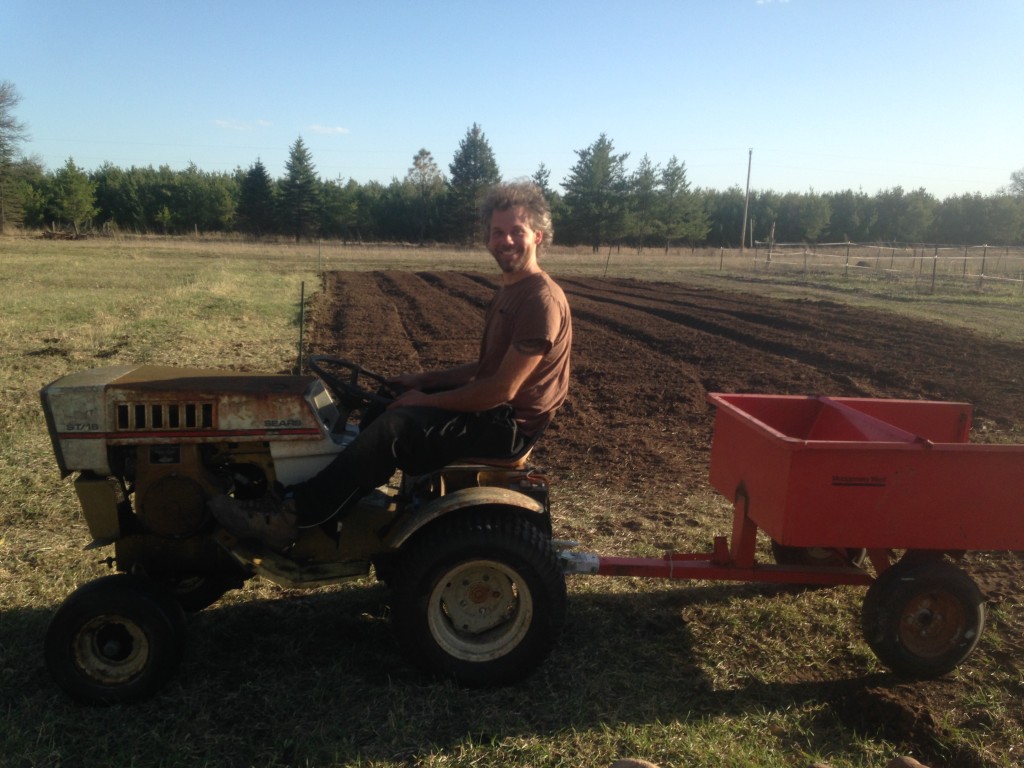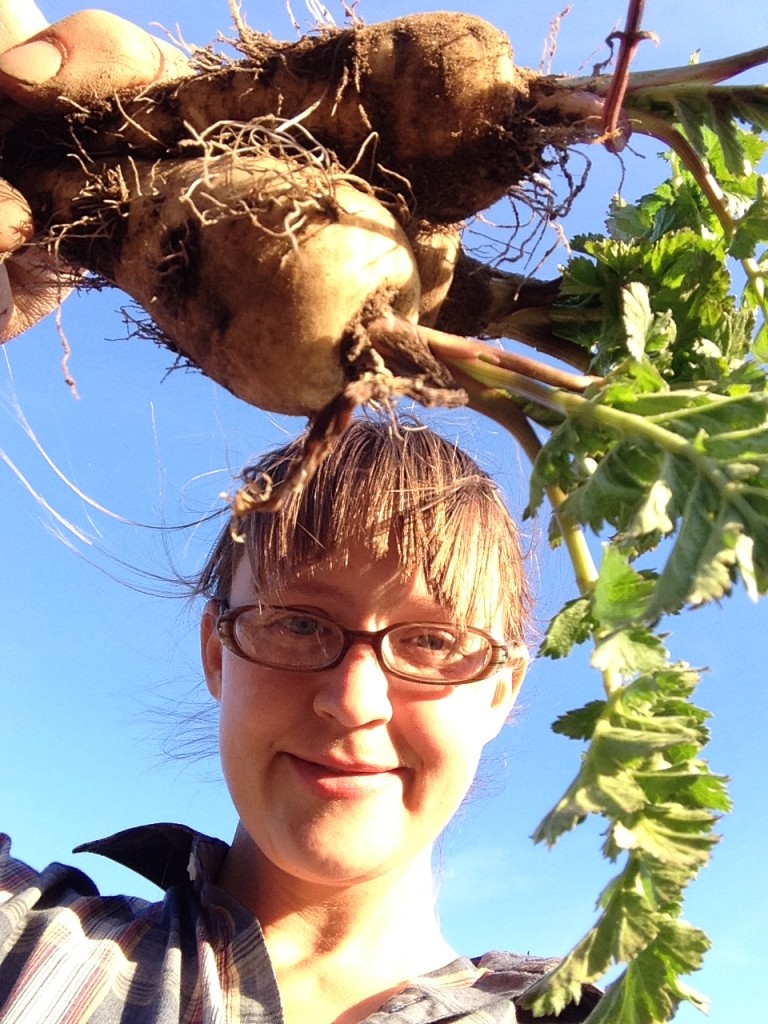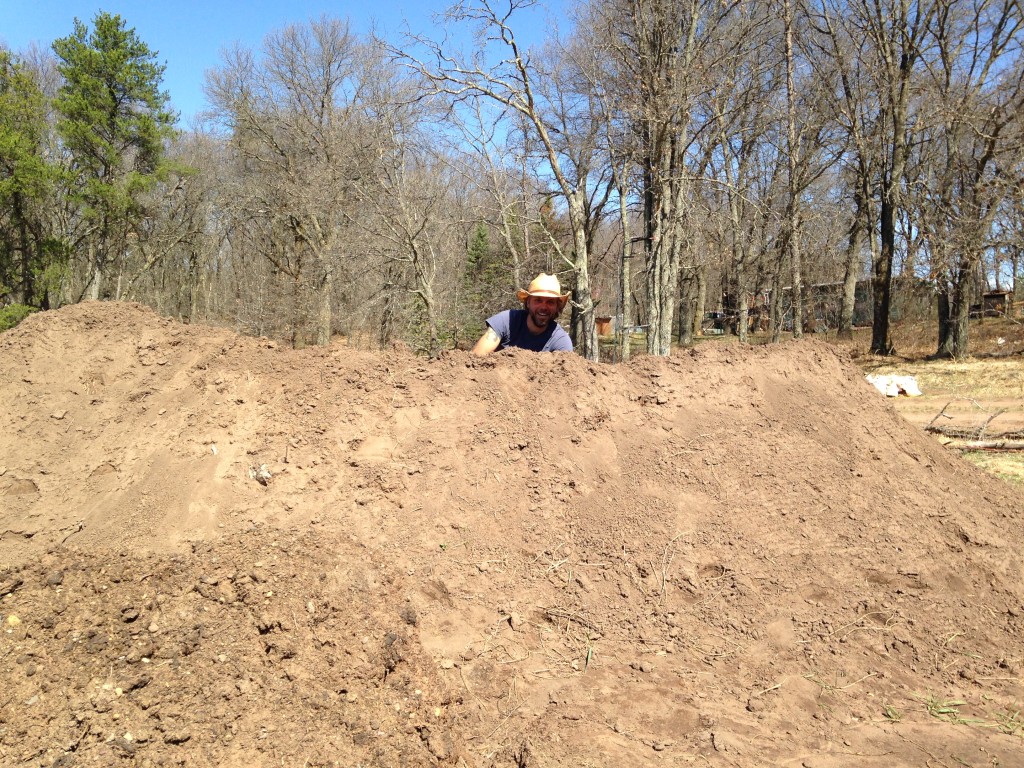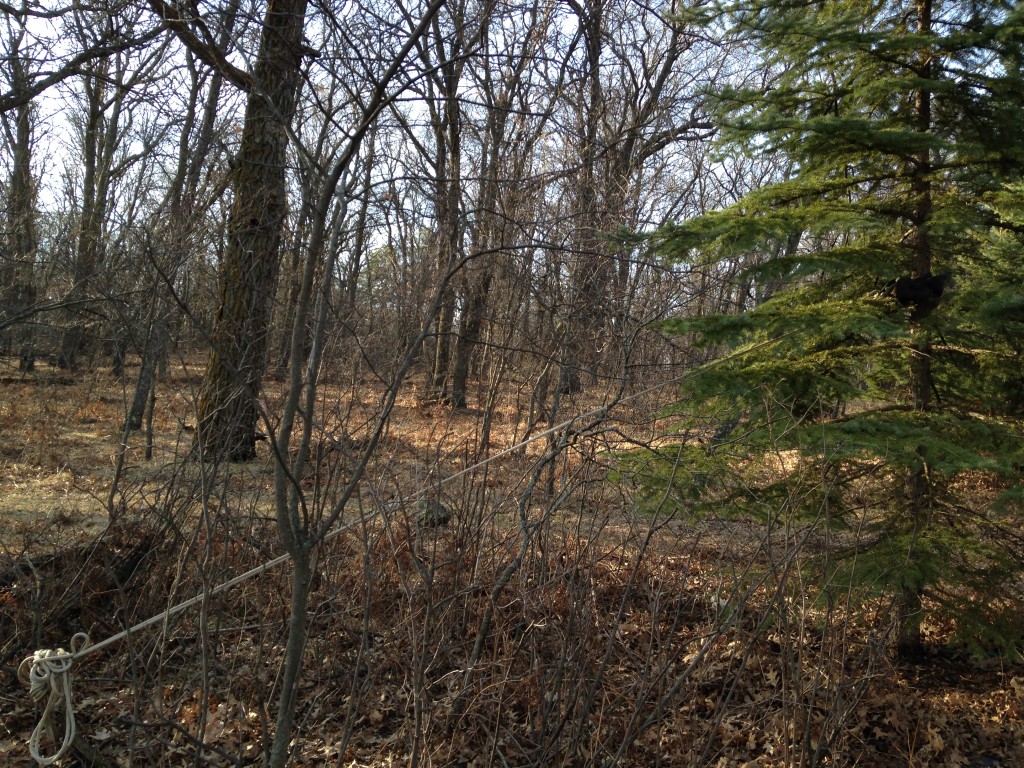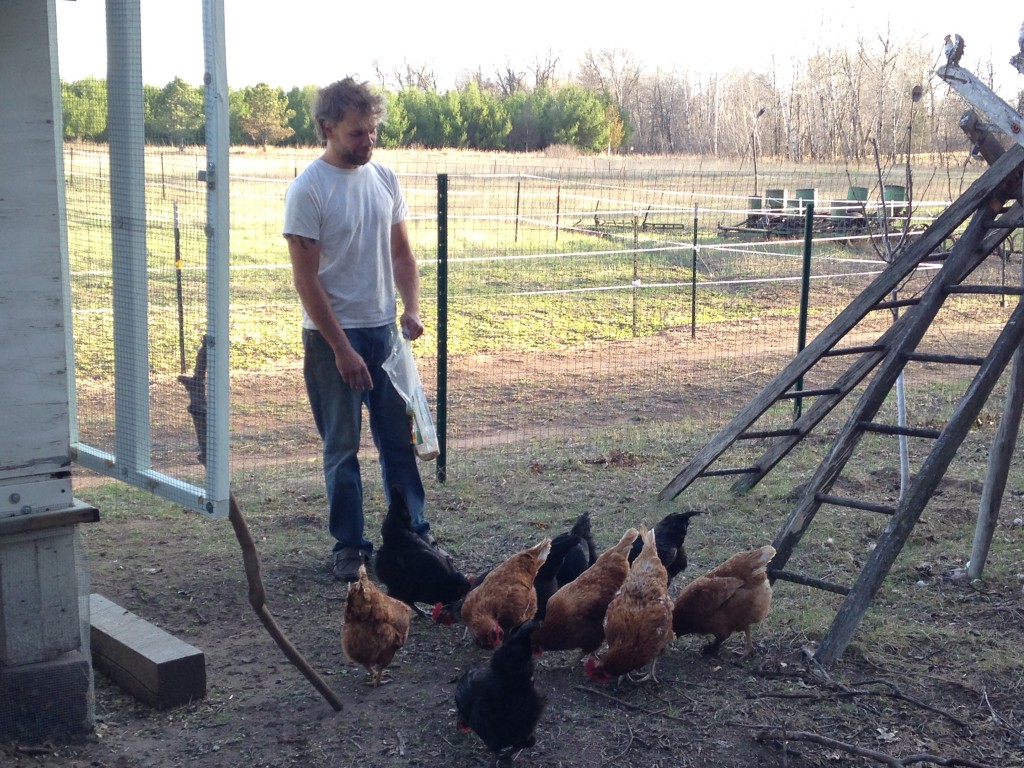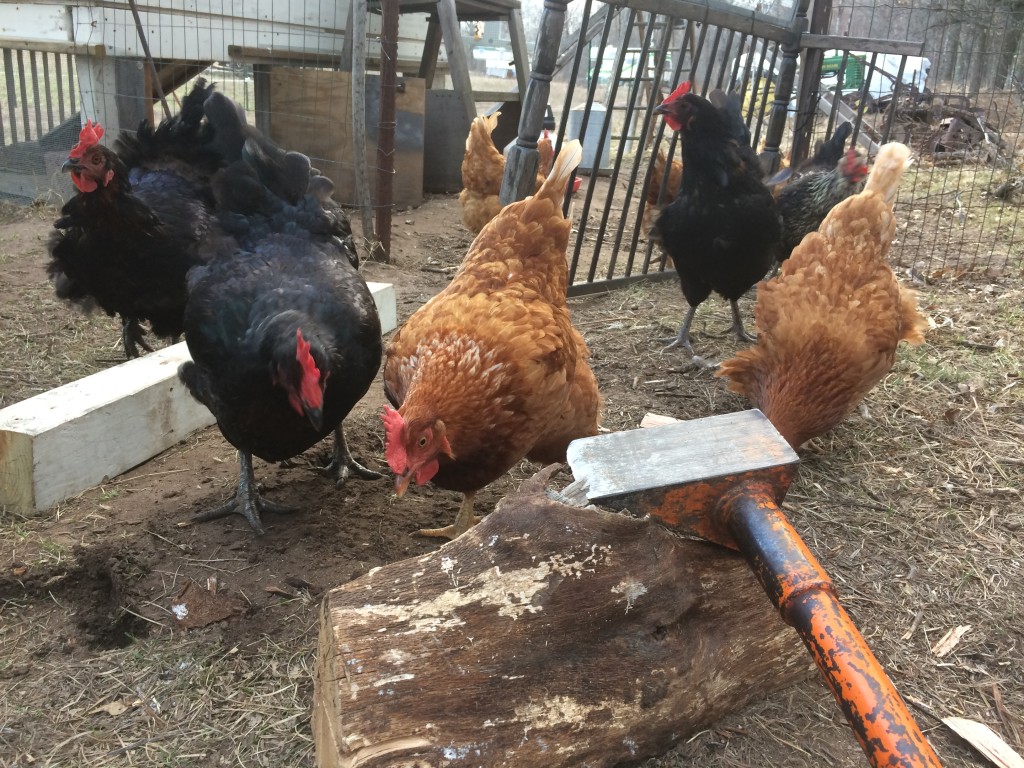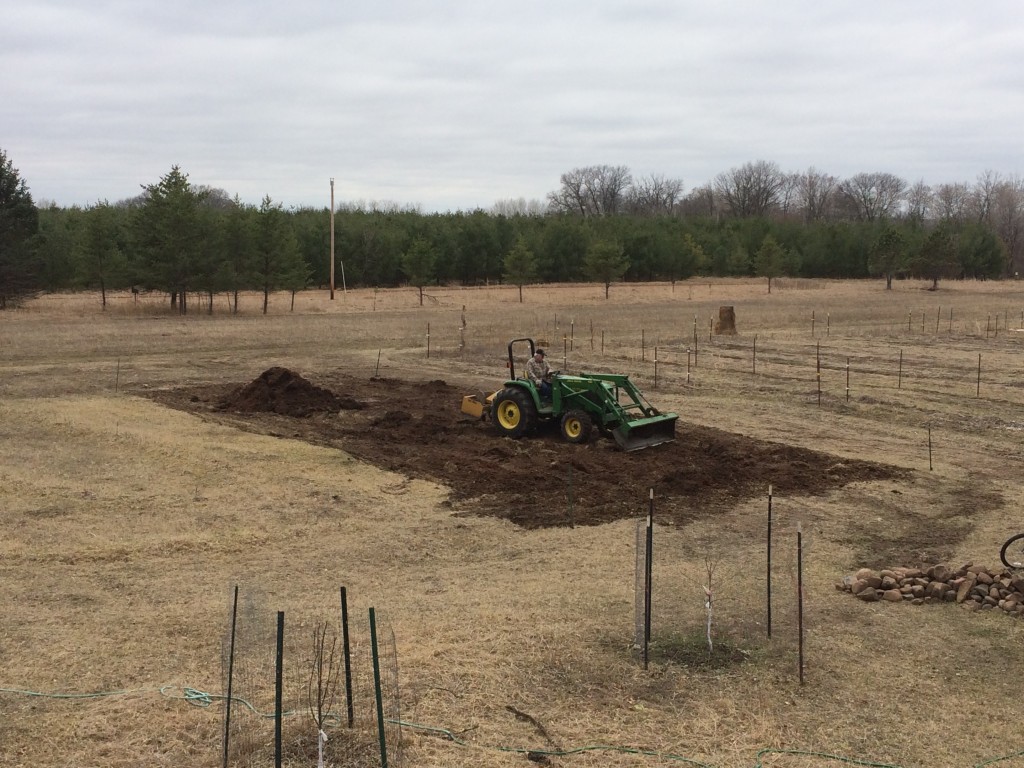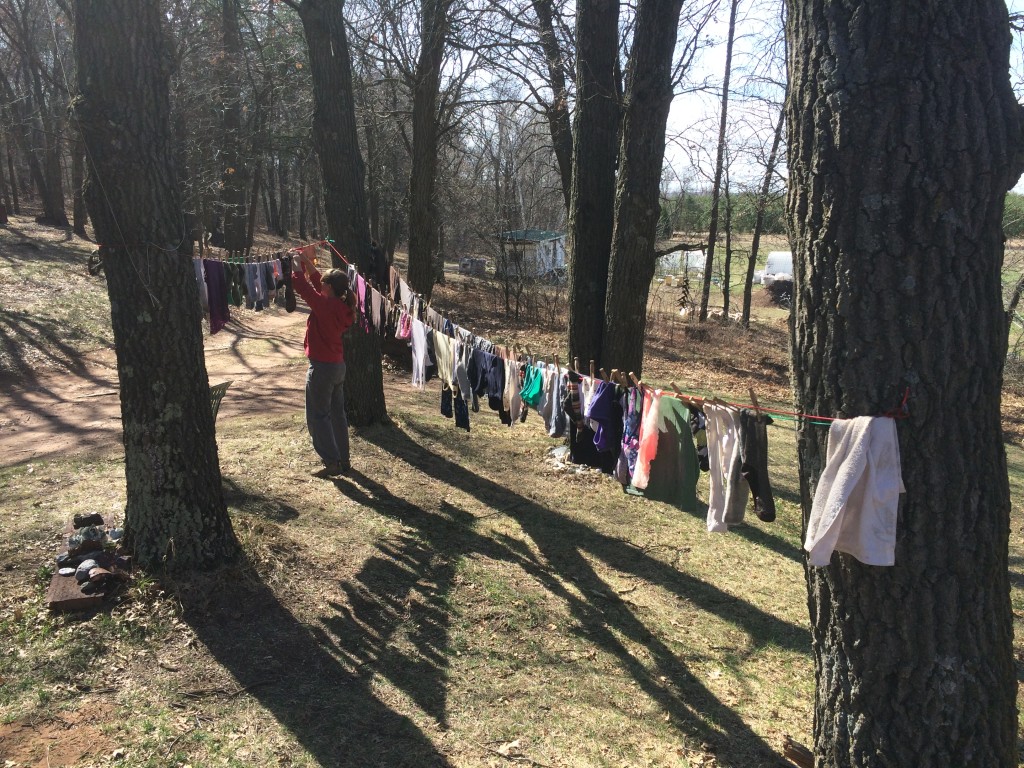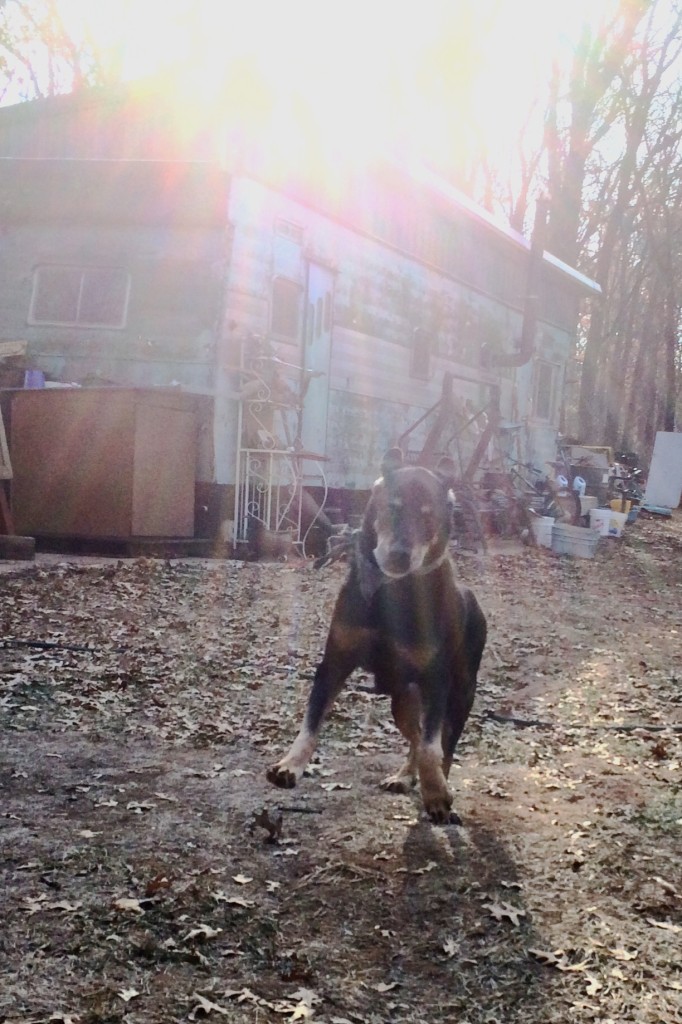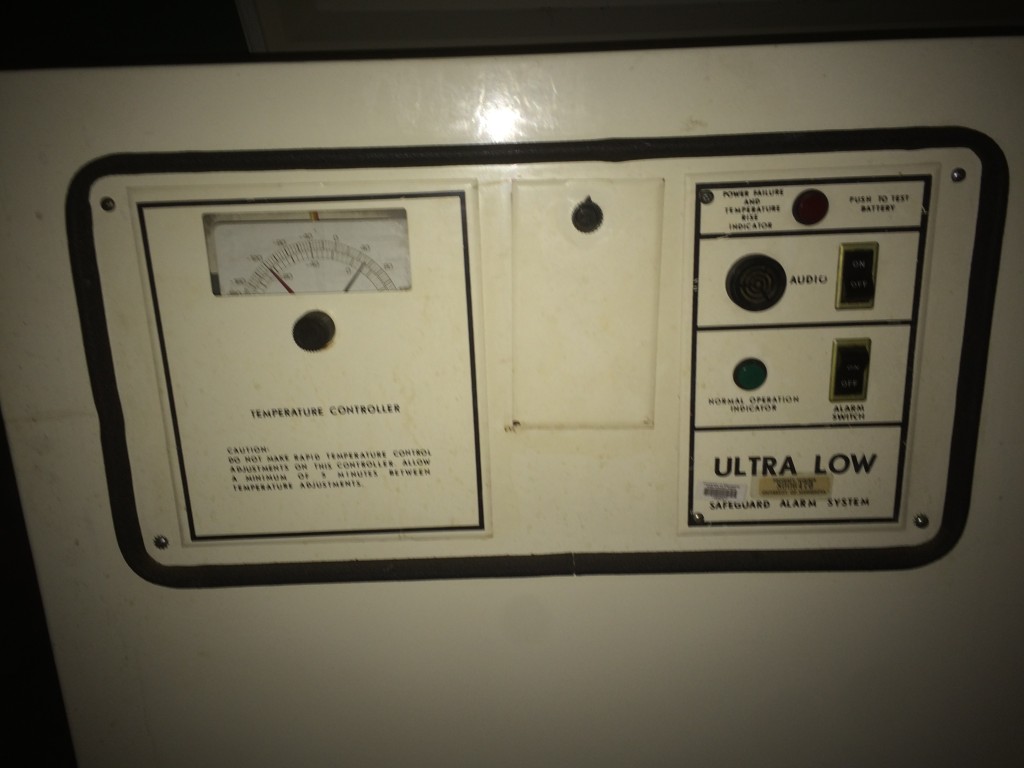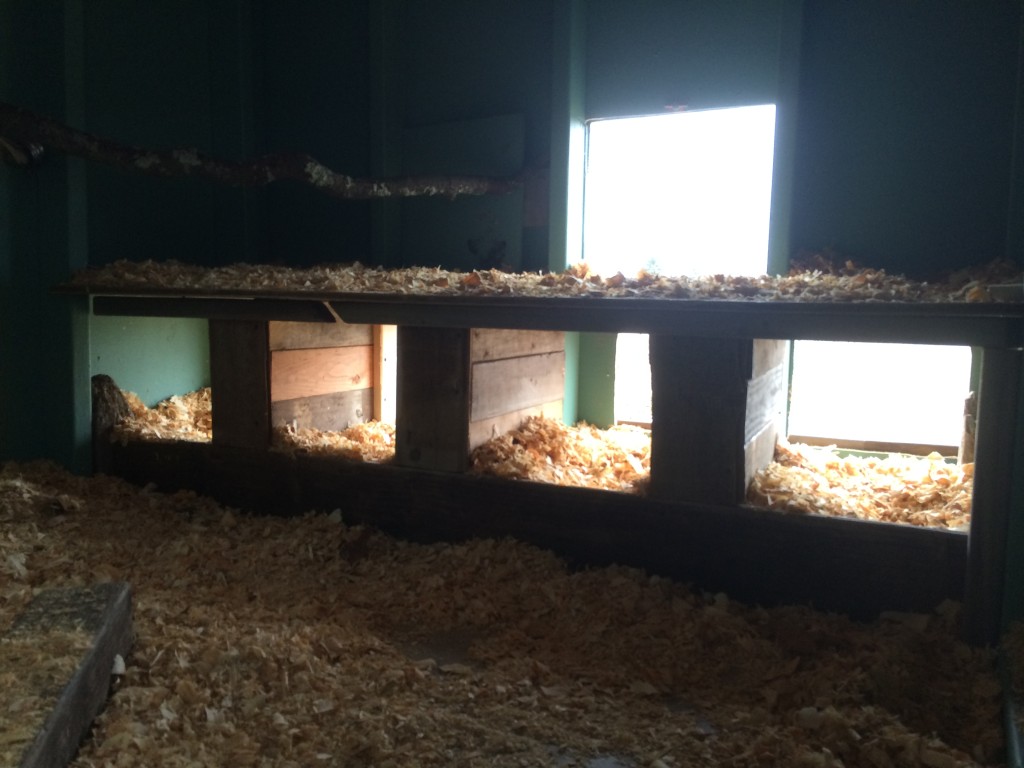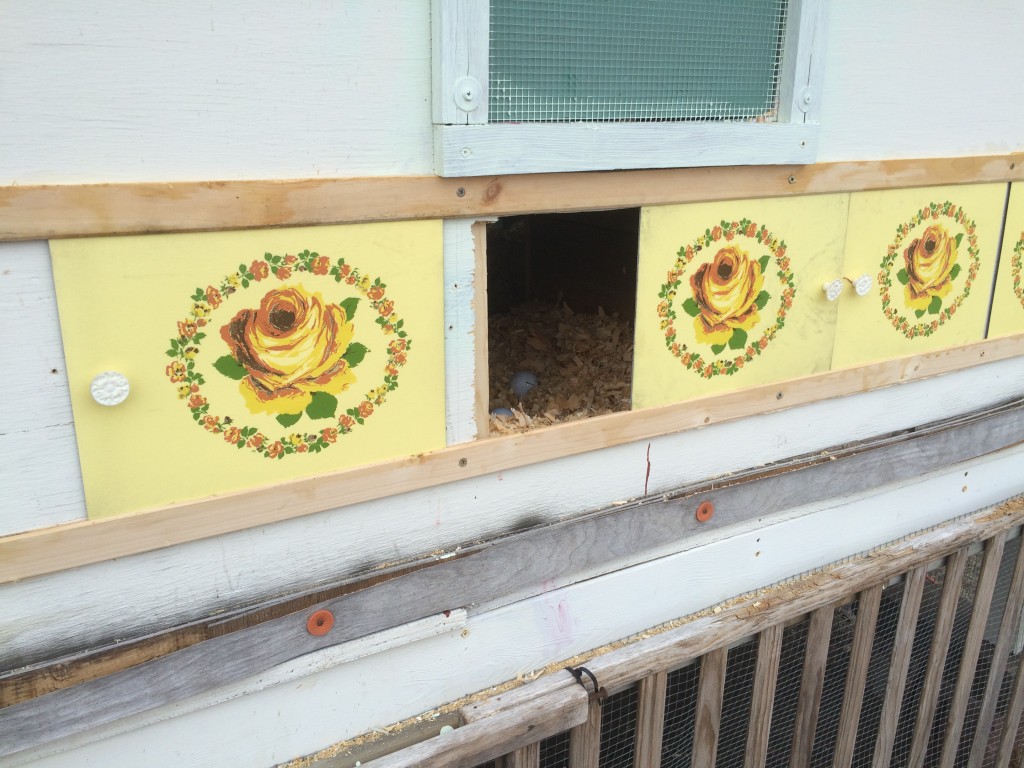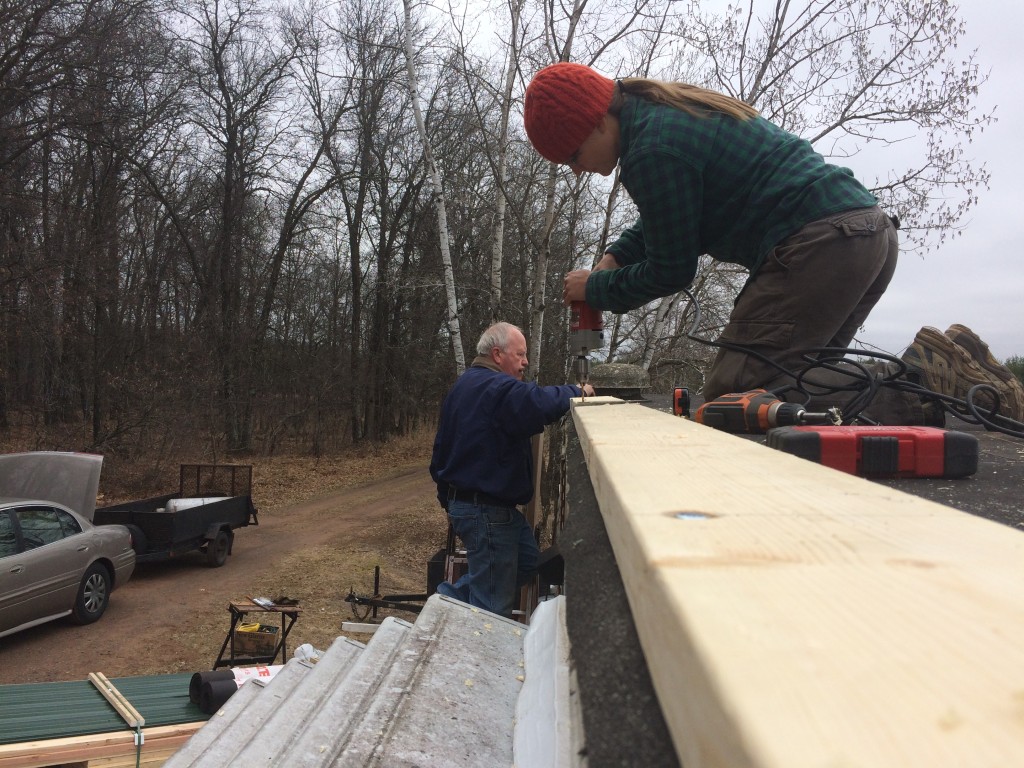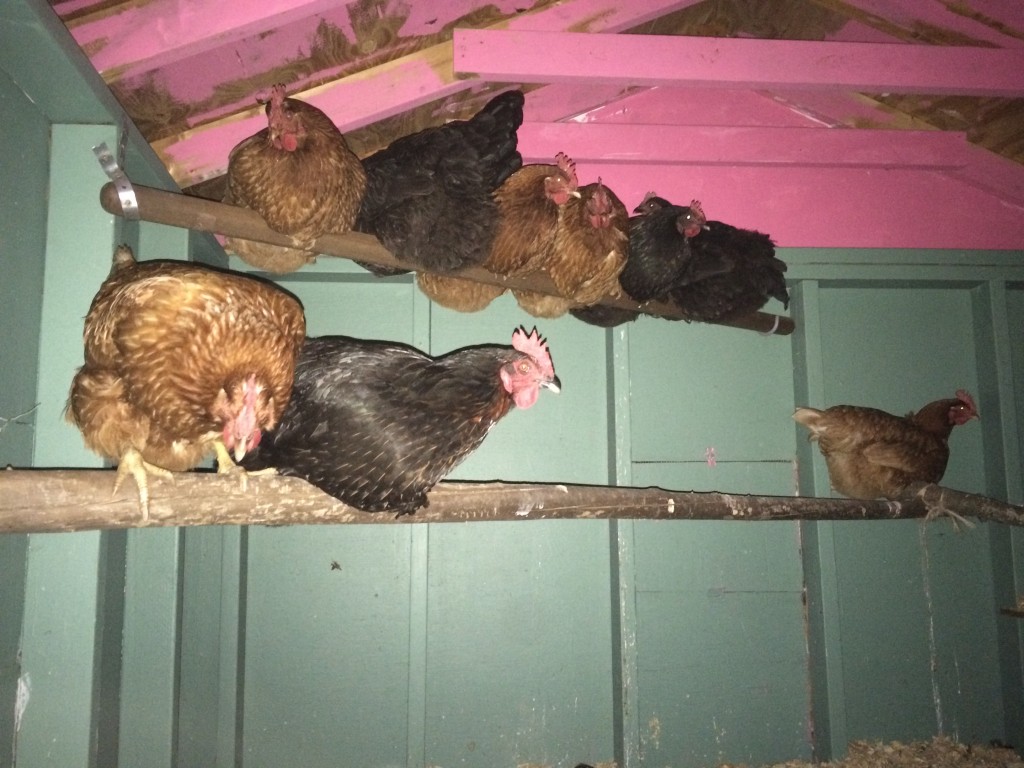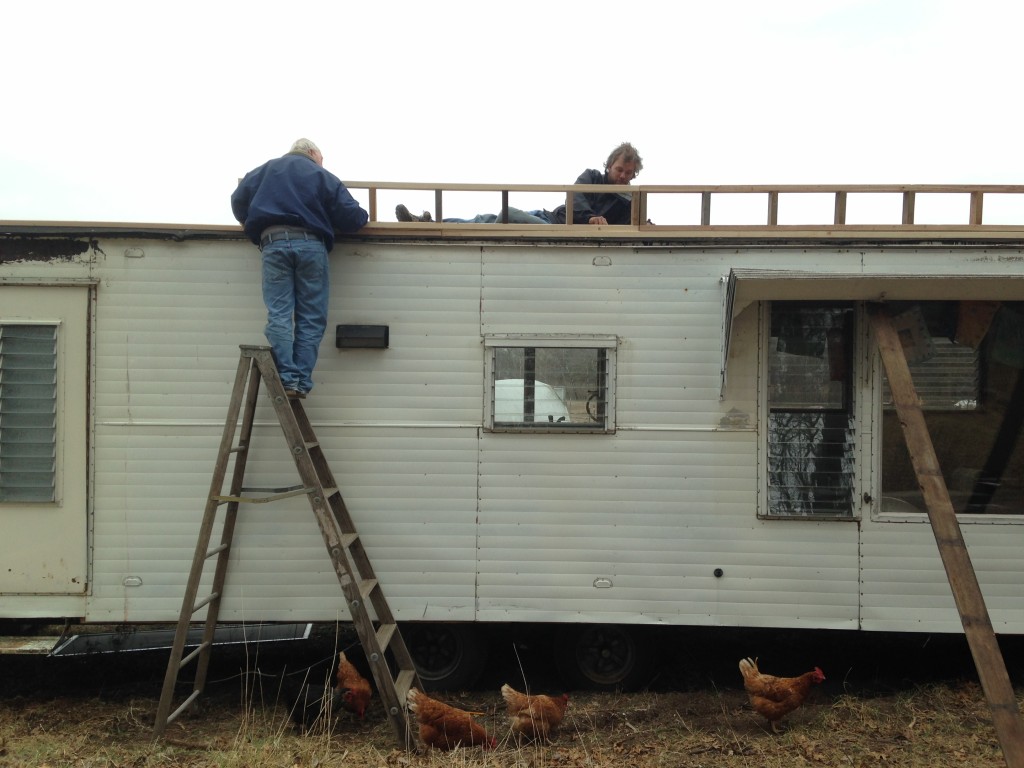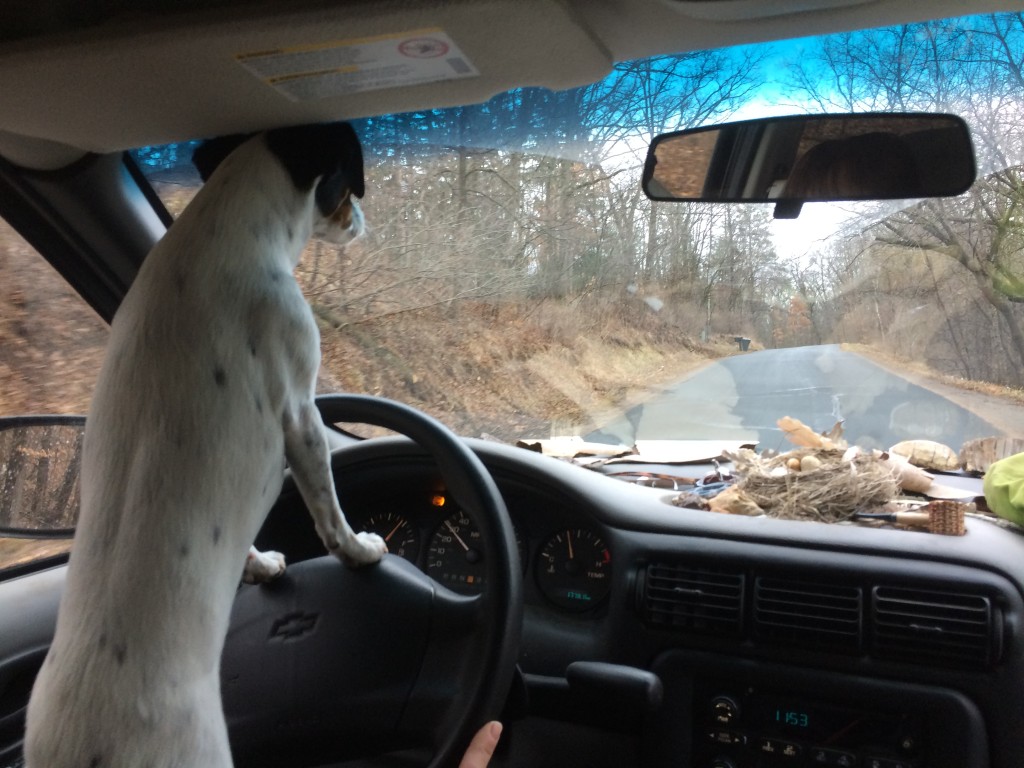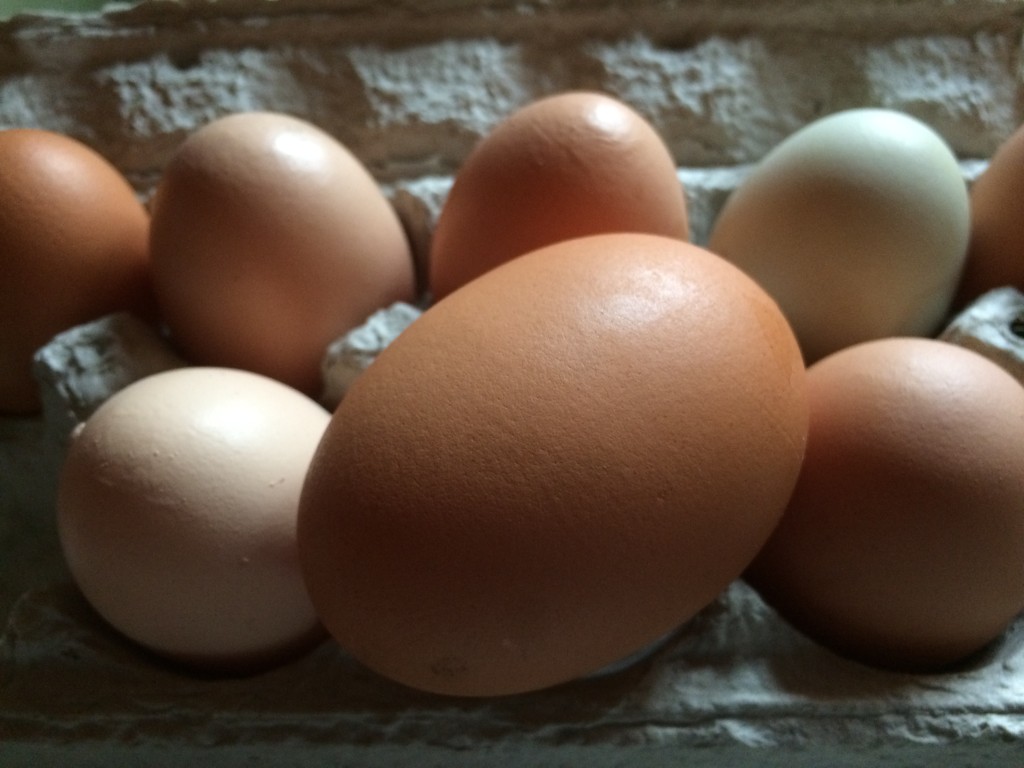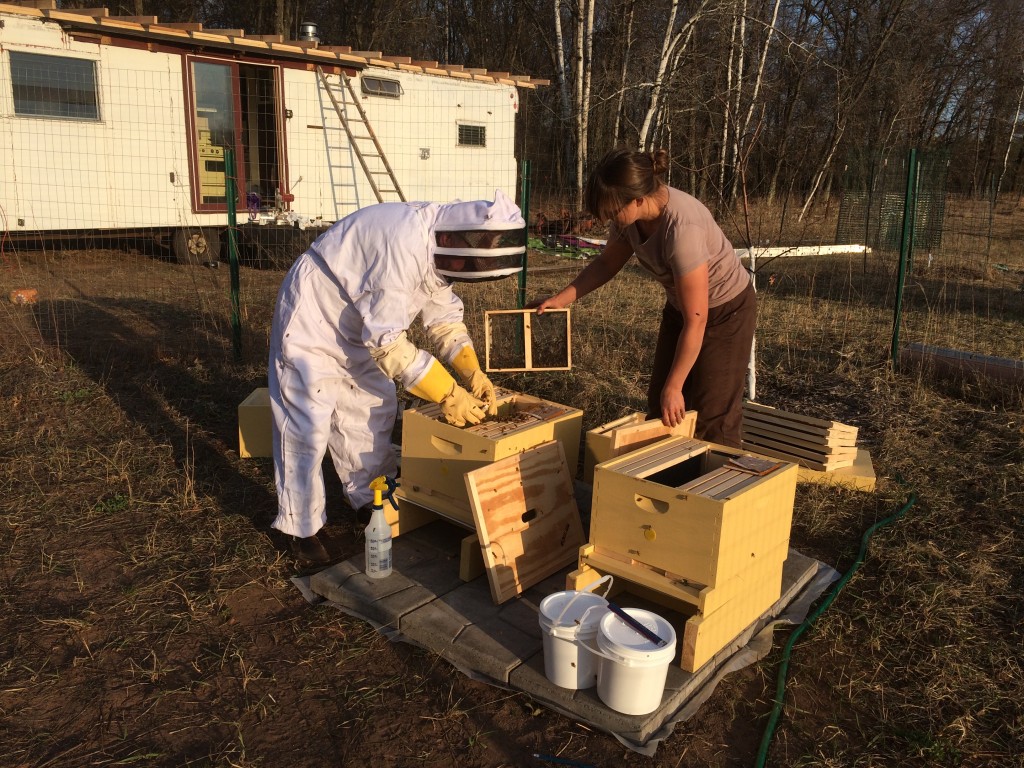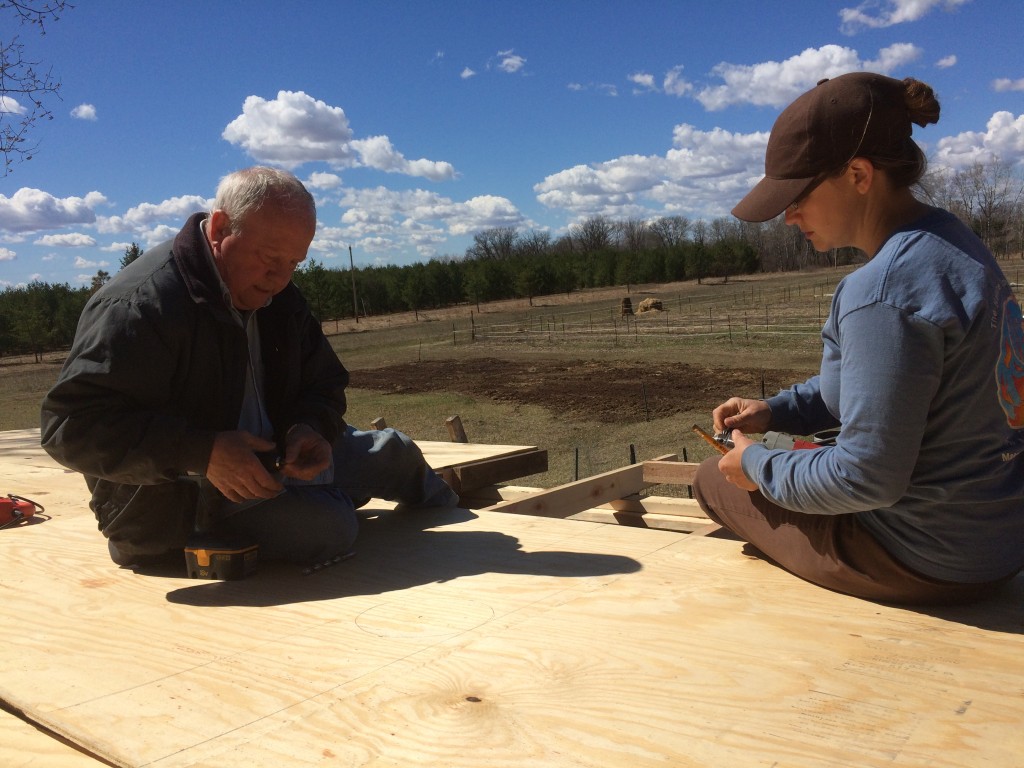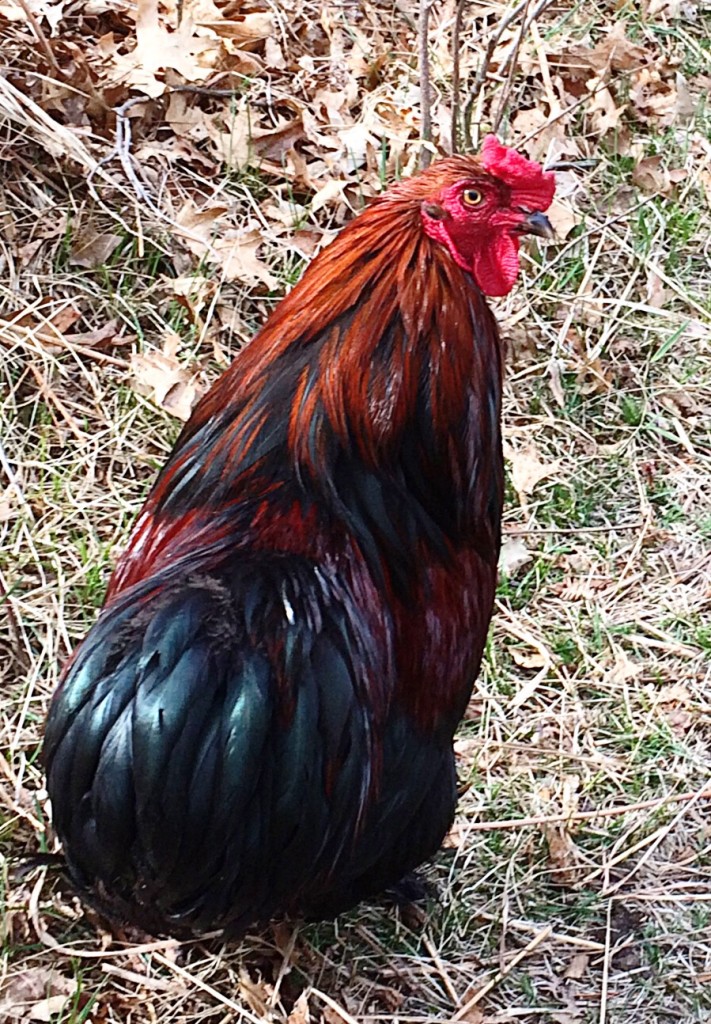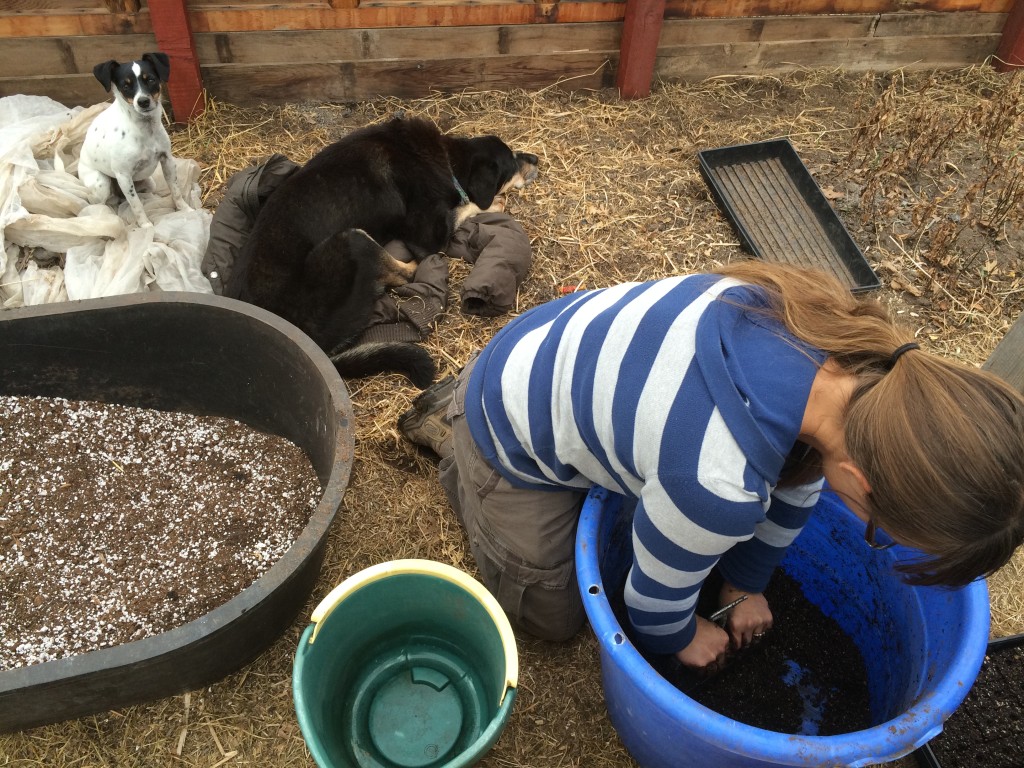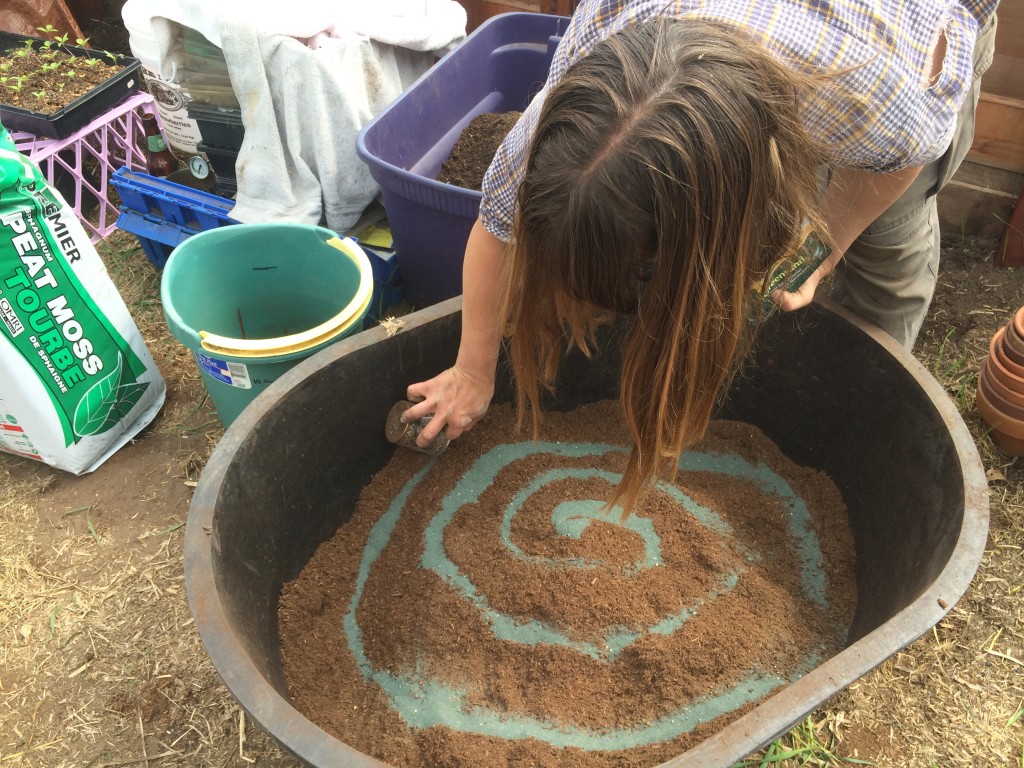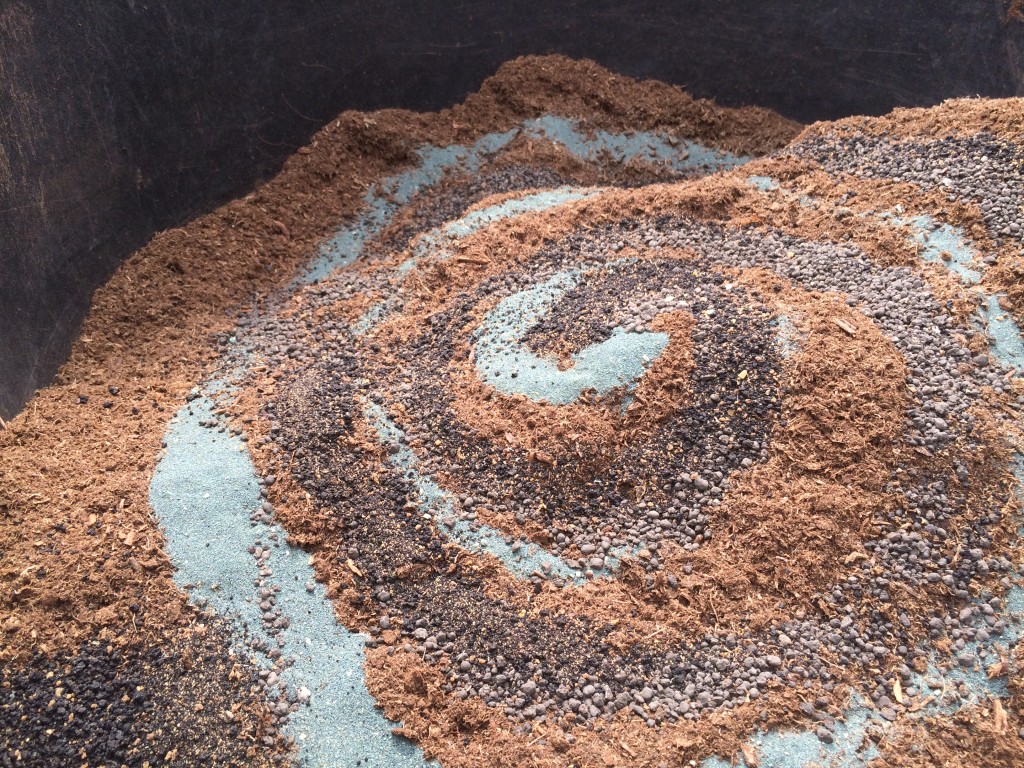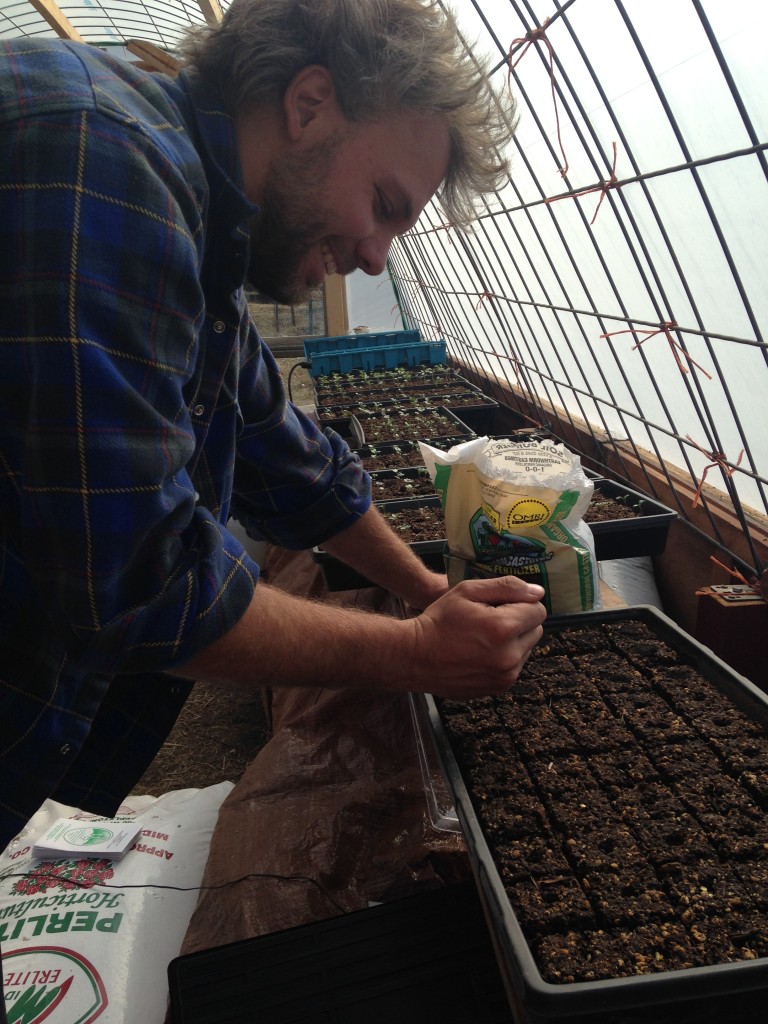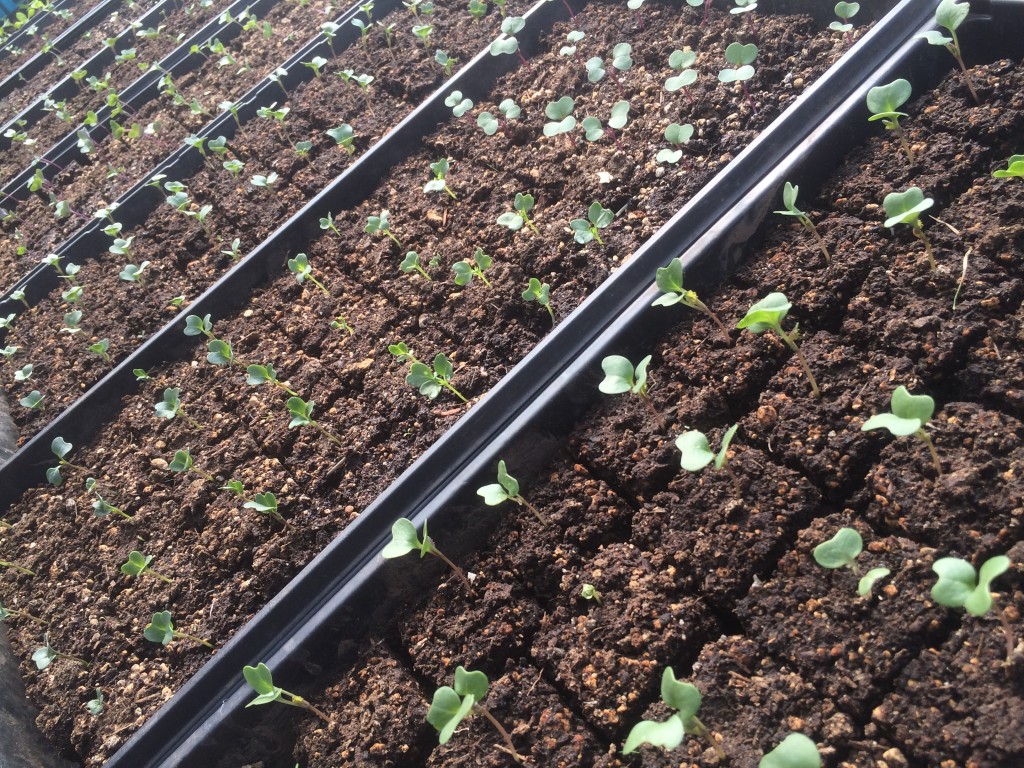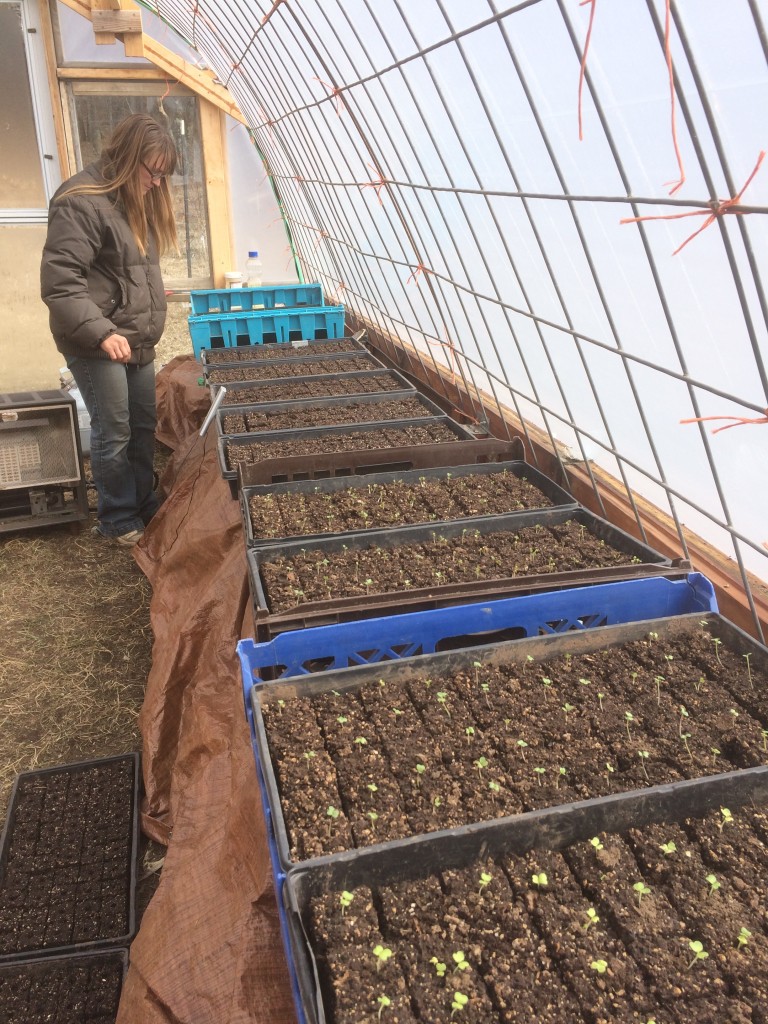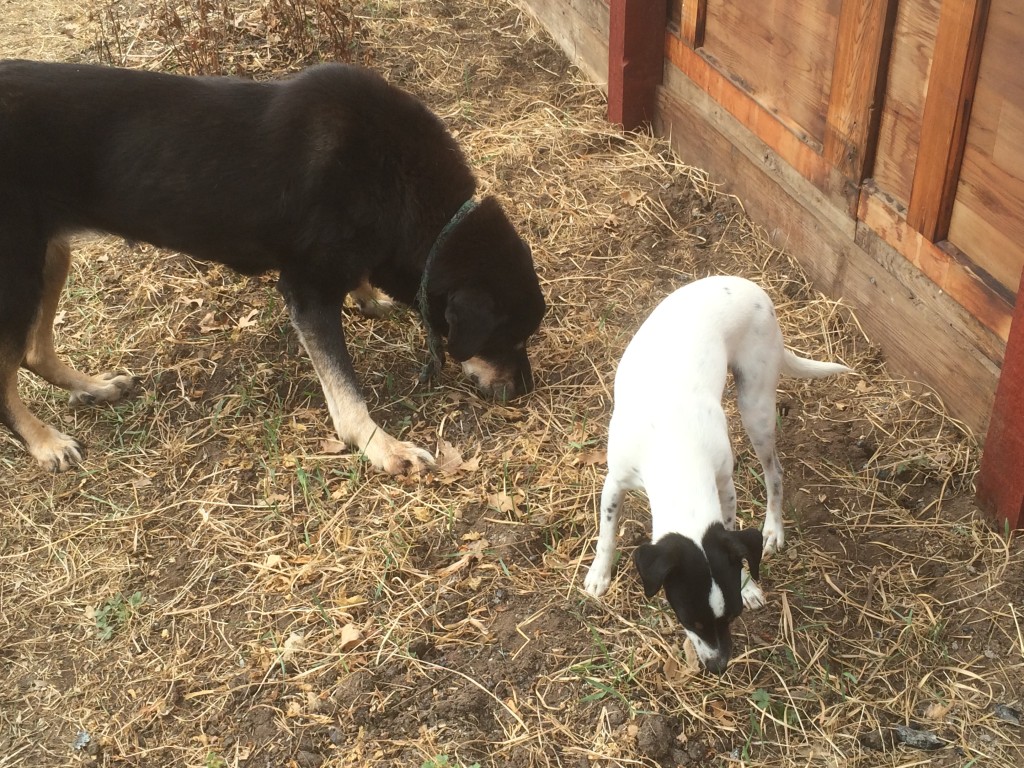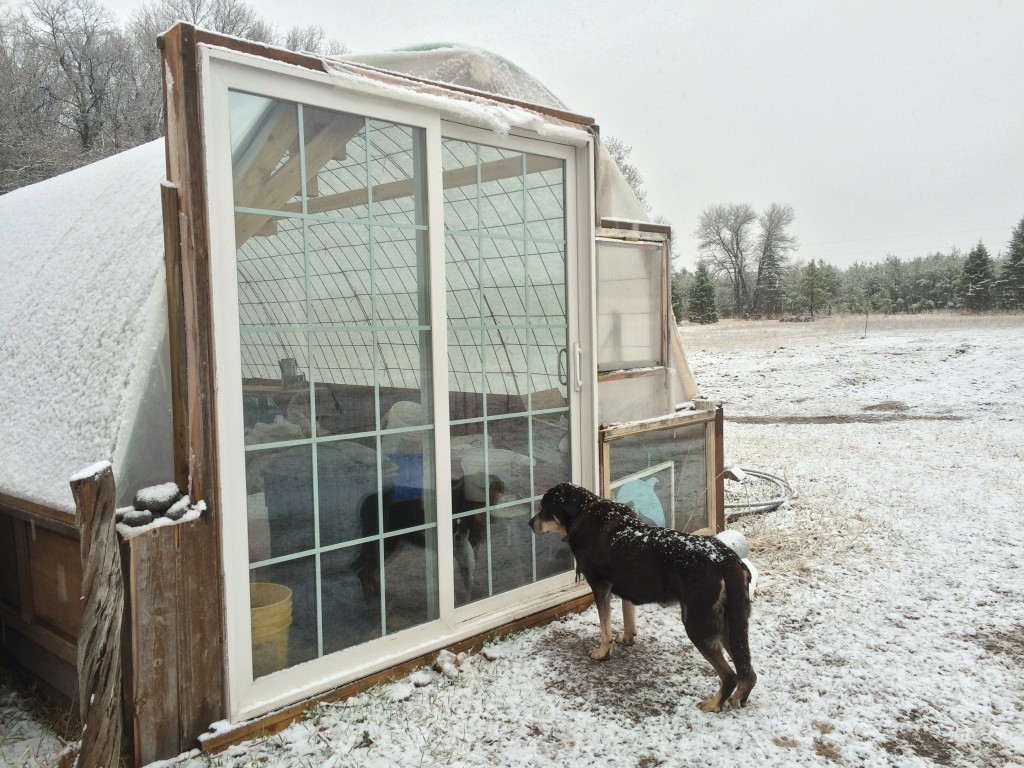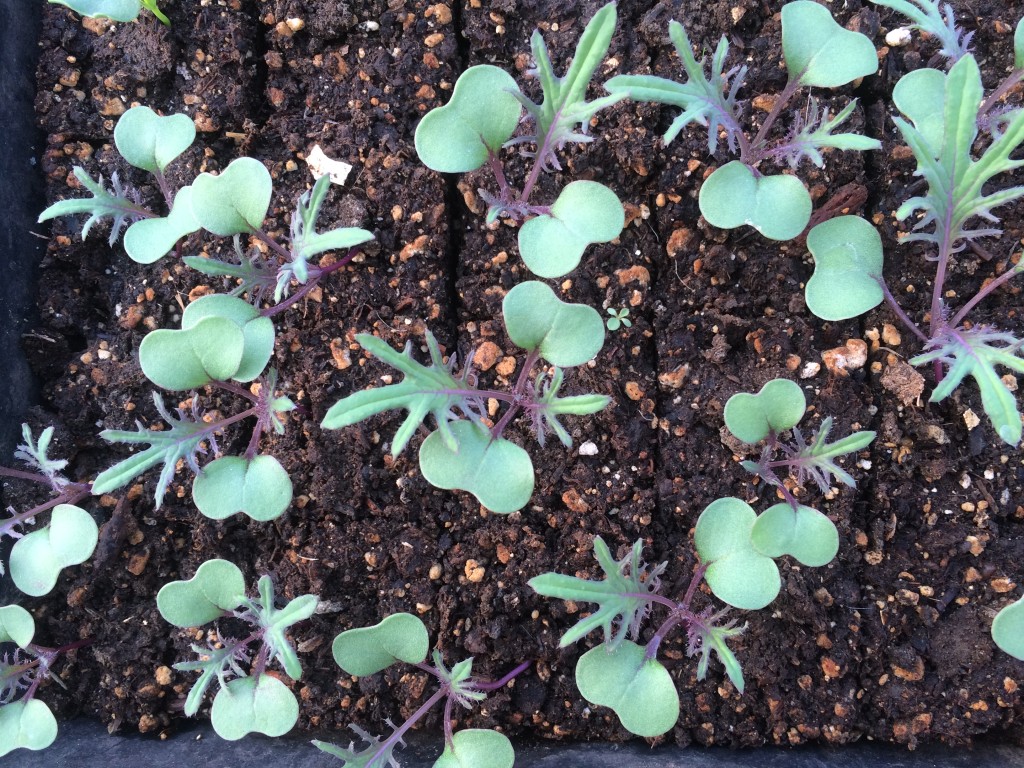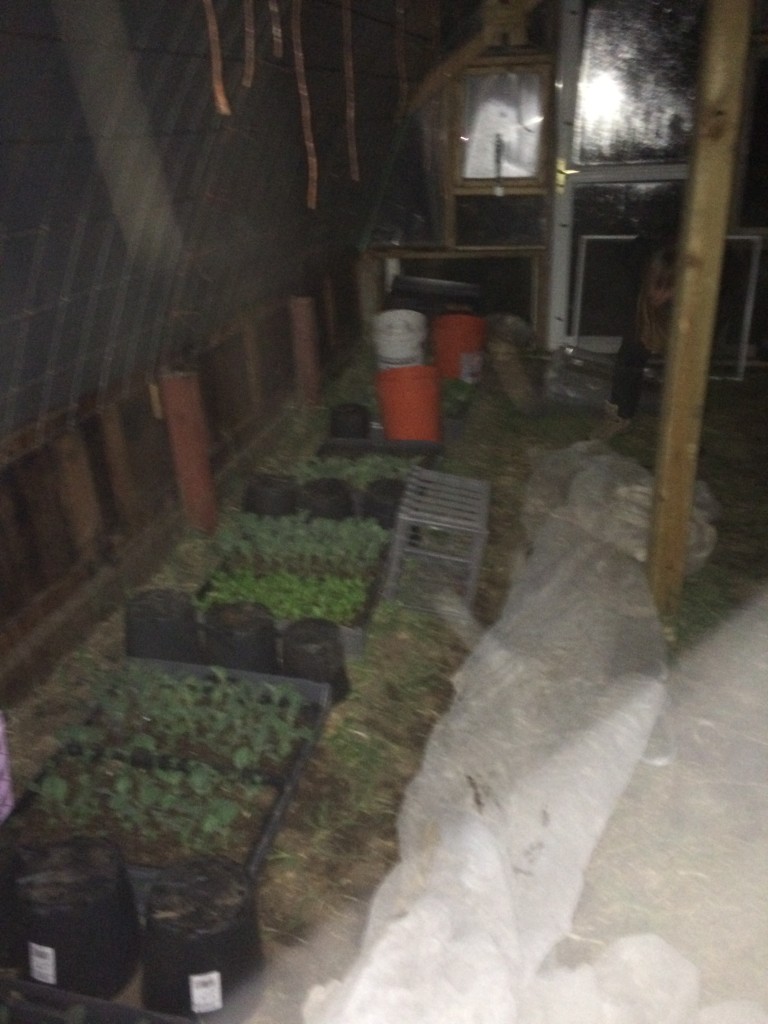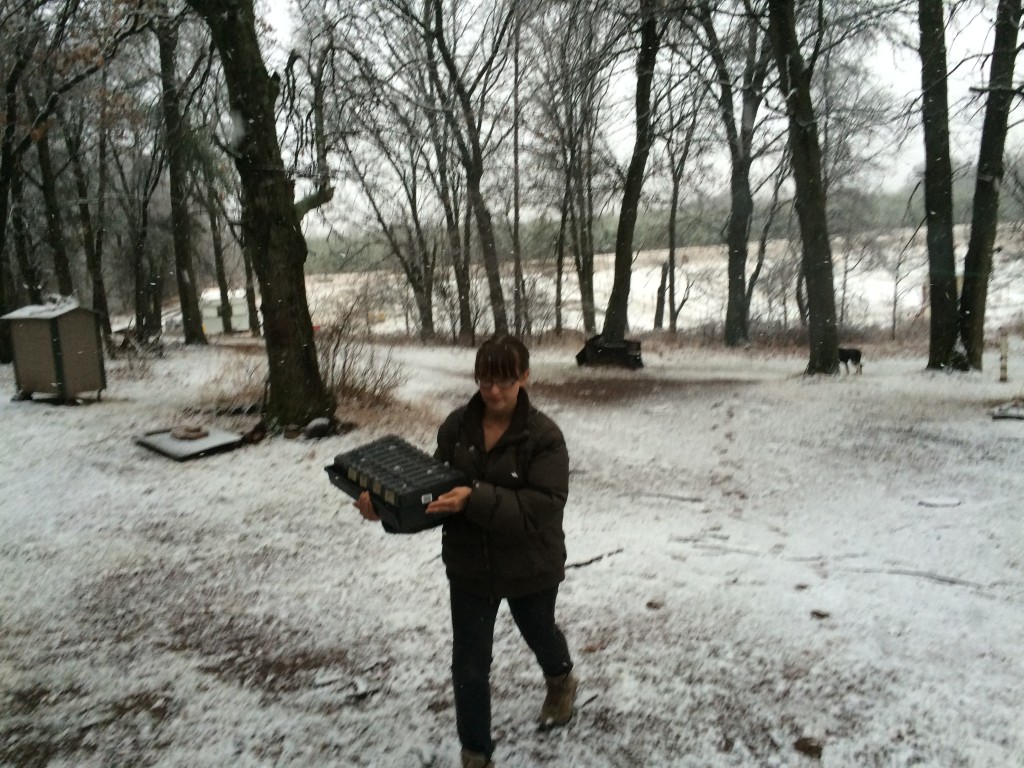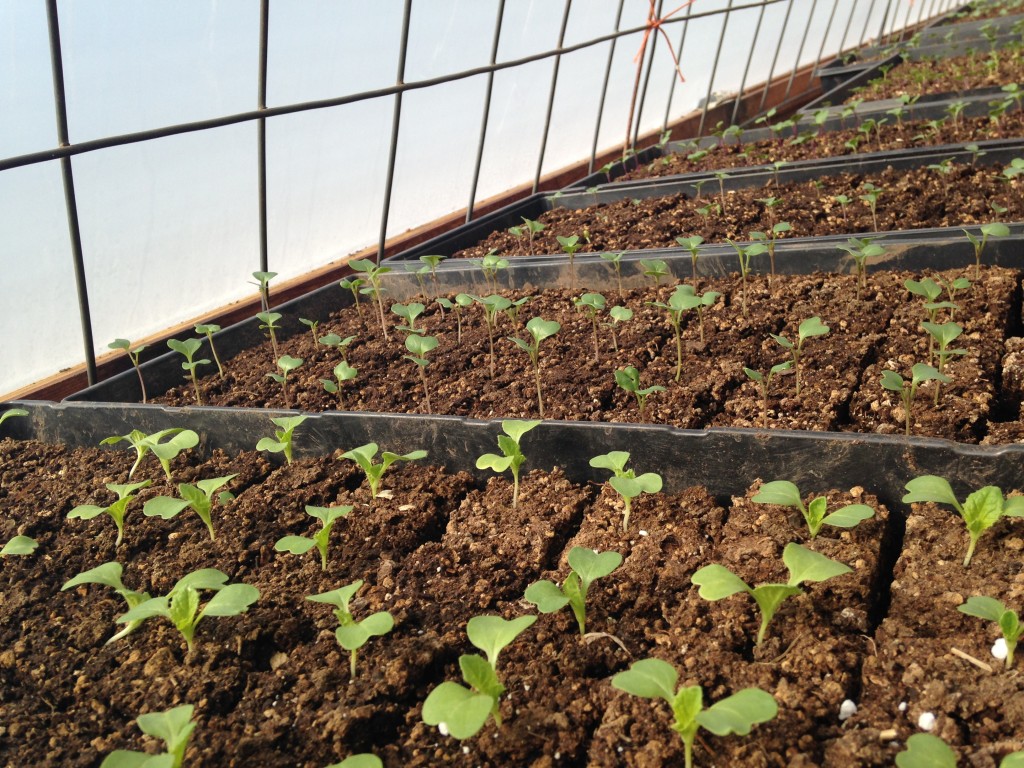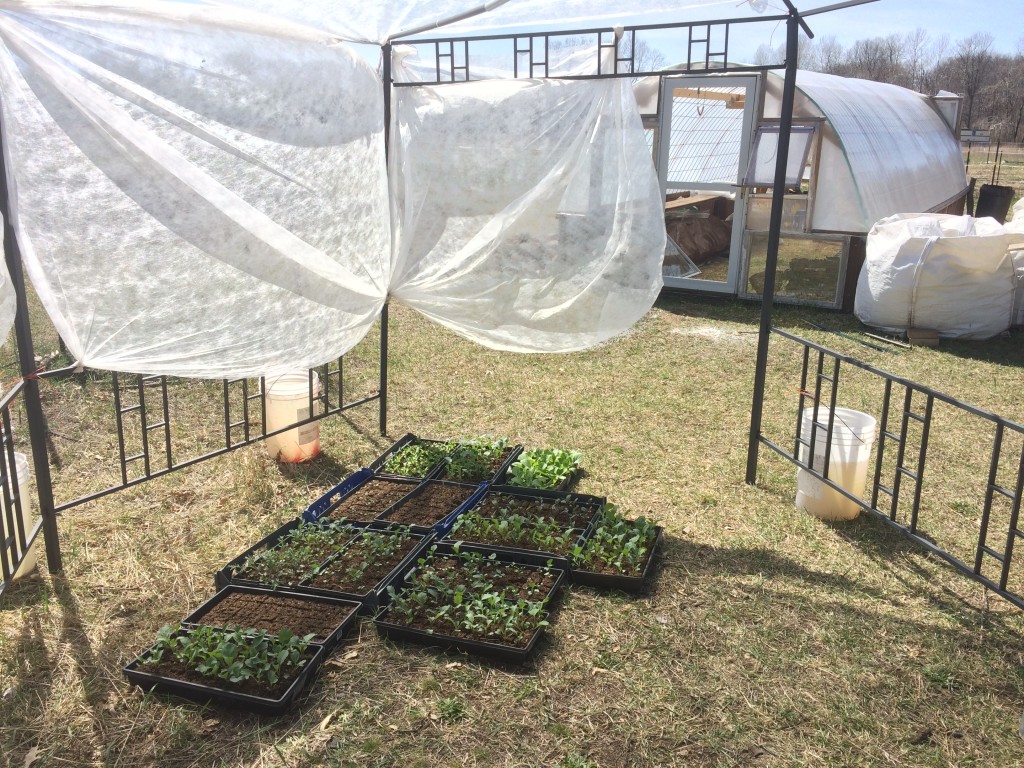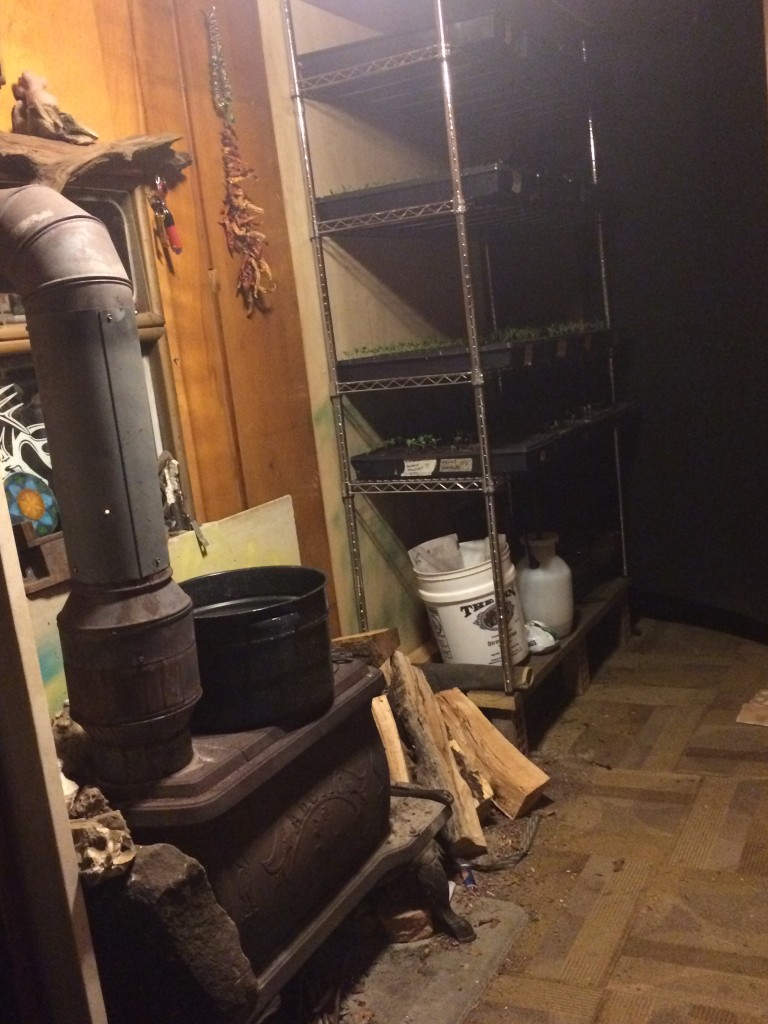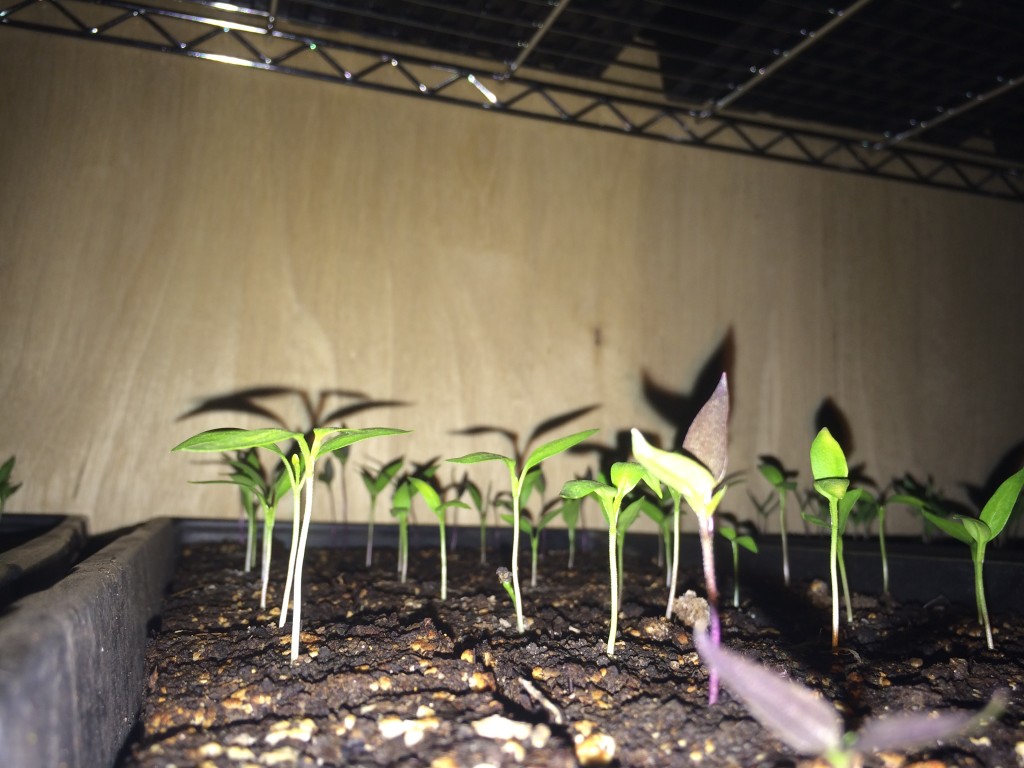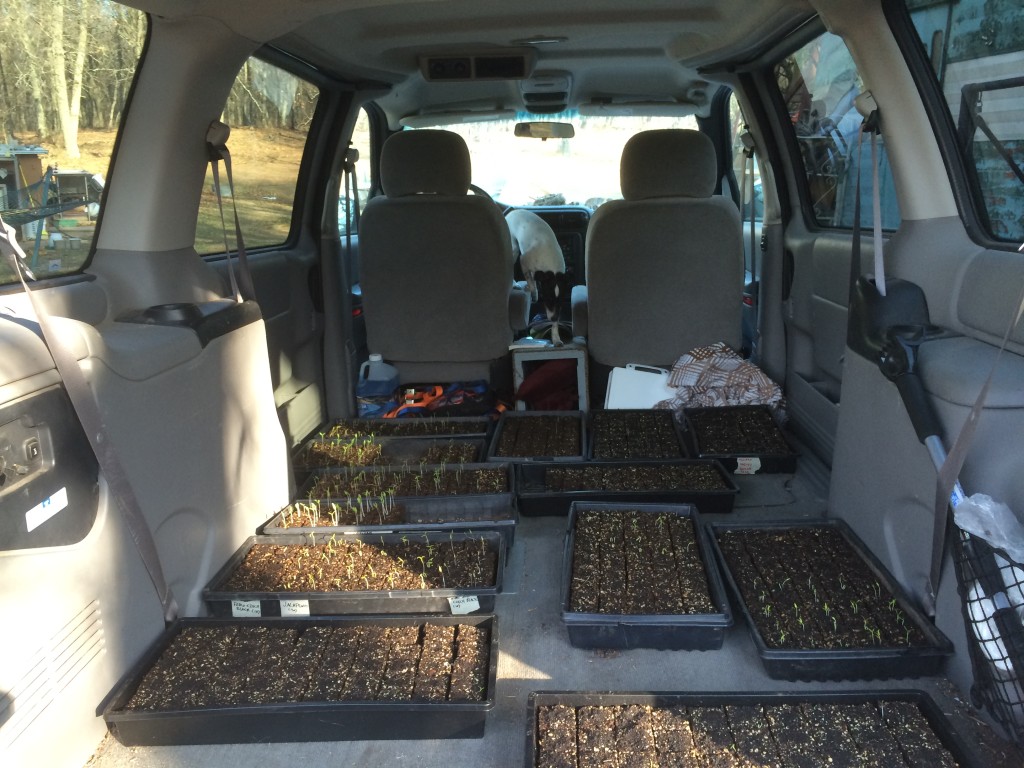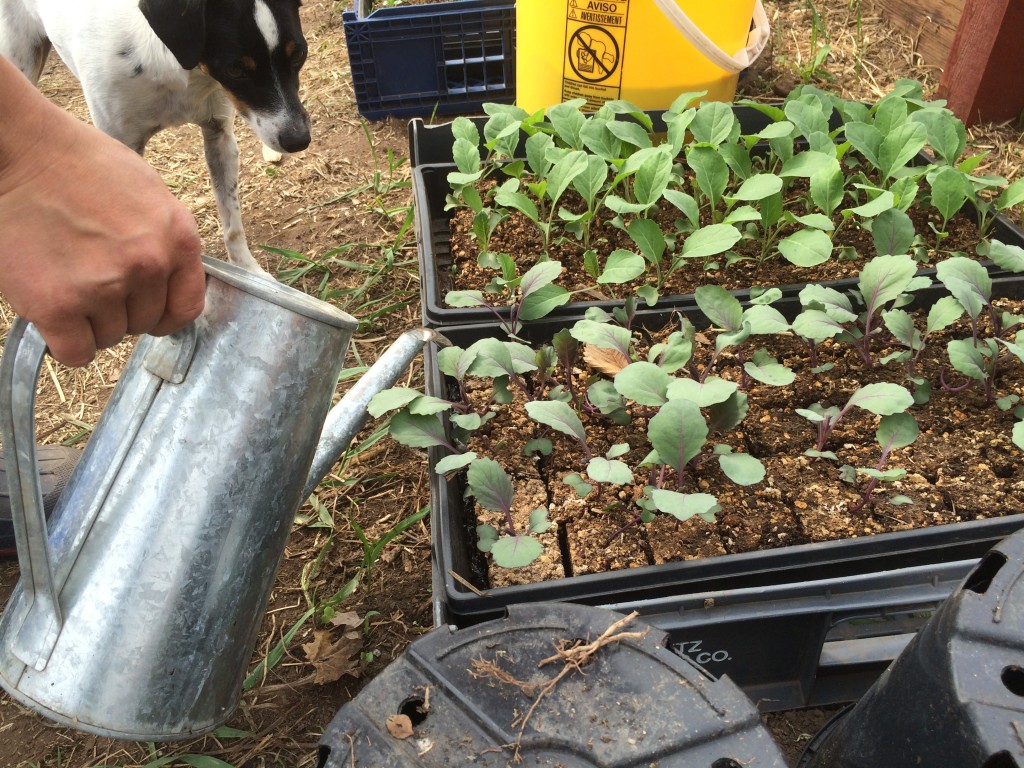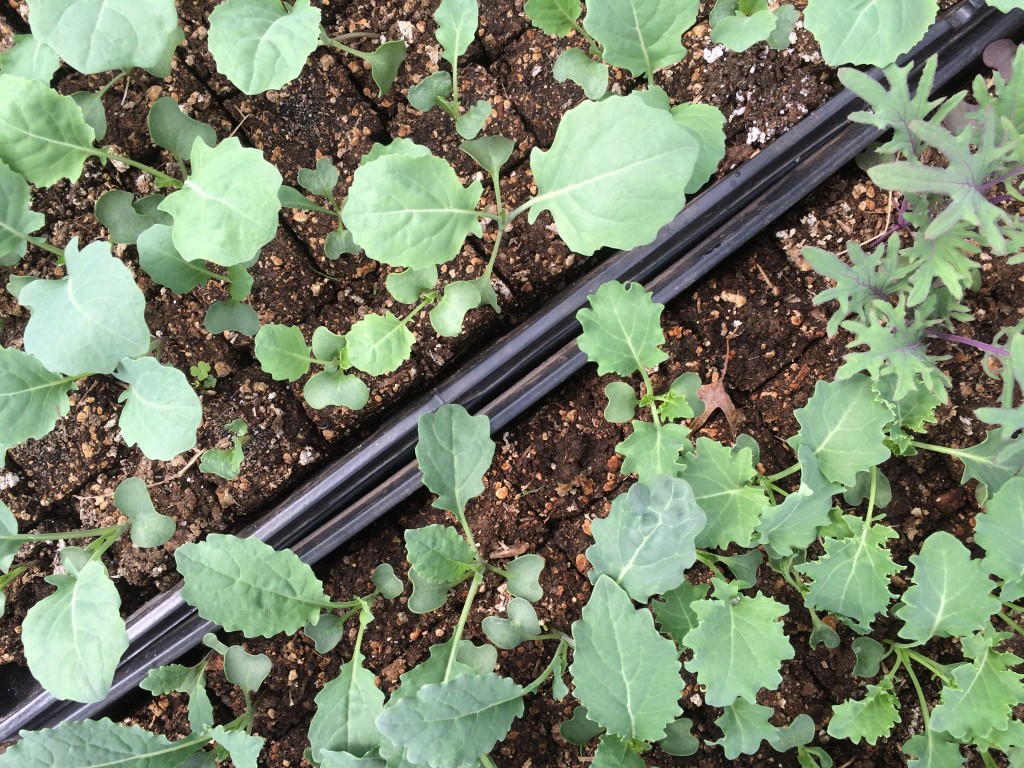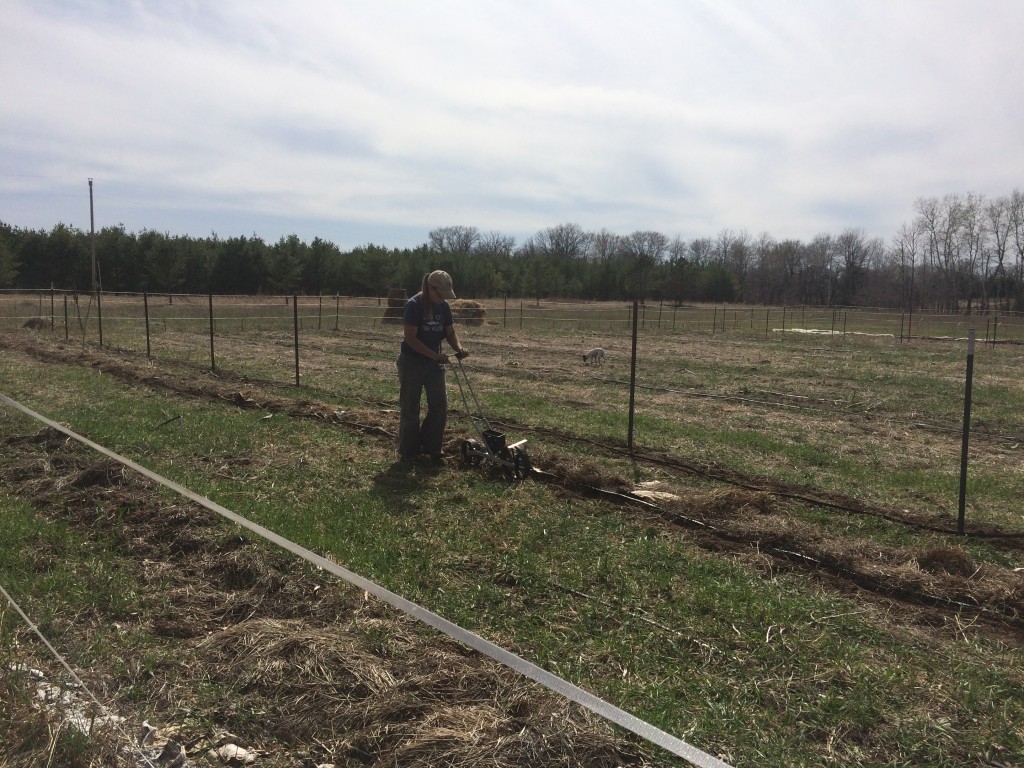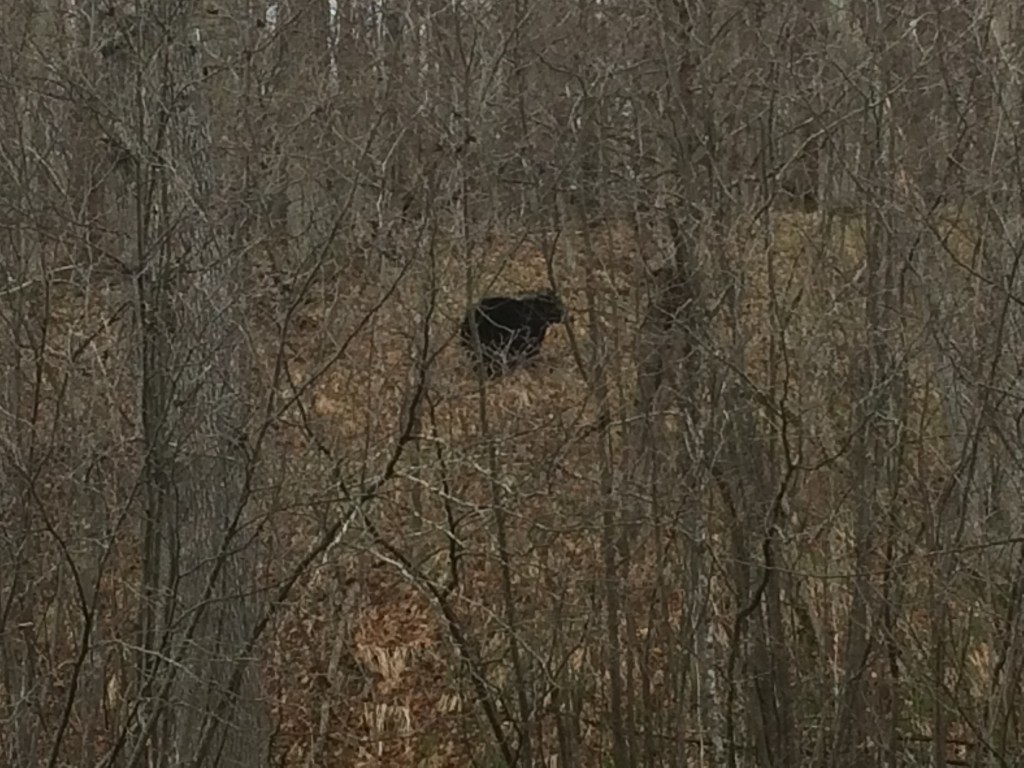I loved this week. No tangible reason. It has lots of good light, in my memory’ eye. Storms and sunshine went back and forth, it was warm in the days and cool in the nights. Lots of work got done without stress and urgency, the plants seem happy, and we’re feeling it too. Things are interesting and beautiful and challenging and satisfying. Yep.
Jim, Neighbor Dave, and a laser level surveying tool helped get the foundation posts sunken square and straight for the high tunnel greenhouse. We finished rigging up a separate irrigation system for delivering batches of compost tea throughout the field.
tool helped get the foundation posts sunken square and straight for the high tunnel greenhouse. We finished rigging up a separate irrigation system for delivering batches of compost tea throughout the field.
Reynaldo helped us with the weeding, which was a priority for much of the week – we got the garlic, half the corn, cucumbers, melons, bok choi. We hay mulched the potatoes and trellised the three grape vines our friend Paula gave us. Transplanted out some rhubarb and Anise Hyssop and Basil and Parsley. Got stung by honey bees (especially Jim, who is the primary bee-mancer (they were really pissy and he hadn’t fully secured the ankles of the bee suit). Got some ticks and some poison ivy (secondhand from Widget, mostly – she hunts through the undergrowth for hours and then gets under the covers to sleep).
the ankles of the bee suit). Got some ticks and some poison ivy (secondhand from Widget, mostly – she hunts through the undergrowth for hours and then gets under the covers to sleep).
The Bug Juice Method worked pretty well, although of course it wasn’t an insect cure-all; potato beetle eggs previously laid on the plants still hatched and released hungry swarms of nasty orange squirmers, and after a couple good rainfalls, the adult beetles started coming back … so we collected some for the next round of bug blendering.
Remember when I mentioned in the last newsletter that a bear was ” ambling among us all week, trying to stay out of sight but not always succeeding”? Well, that situation came to a head the very next day. On Wednesday I heard a commotion right outside – the hens, which had been foraging through the woods behind the well, were squawking up a storm, and the sound of … claws on tree bark? Three baby bear cubs were scampering up a big old oak tree – higher than I thought bears had any sane business climbing, up in the thin and swaying upper branches. And at the base of the tree, stood Momma Bear, looking at me. She gave a snort, bear-hugged the thick trunk, and quickly scaled to the first easy resting point, a dozen feet up.
There, she rested, alternately looking up at her three little bears, and down at me. When we made eye contact, she would smack her mouth and show me that she was drooling.
Apparently, she’d been drawn in by the 2 garbage cans of thawing fruit, veggie, and miscellaneous kitchen scraps that we’d just dumped into the chicken composter – we hadn’t buried it in yet, so the chickens could enjoy picking through the fresh new goodness. But, when they’d come through the woods, they’d run across the chickens – and slapstick ensued. The bears scared the crap out of the hens, who crashed through the underbrush at full volume, frightening the bear cubs right up the tree … bringing me out the door to scare mom up, too.
Now what? I didn’t want to let the dogs out while the family was treed just outside, so I tried to make them moderately uncomfortable hanging around – enough so that they’d scat once they came down, but not so much that they’d be afraid to leave before dark. So I drove the van right nearby, took some photos, sternly but kindly told mom to get her kids and go on into the woods ( I even pointed, helpfully.) I rattled past with the empty trailer. And to make sure they didn’t feel comfortable heading down to the compost after they descended, I went down there and banged on a 55 gallon drum a bit, before burying the fresh compost beneath a layer of old stuff. I checked on the tree – mom had come down, and was lurking in the underbrush at the base; the cubs remained almost out of sight far above. I went down to the raspberry patch to weed whip the tall grass army – when I got done and went back “upstairs,” the bears were all gone. So far, they haven’t been back, but we know they’re still around – Neighbor Marcie saw them digging through her manure compost for June bug grubs, a couple of days later.
What a short growing season we have up here! Before you even get to eat your spring broccoli, you’re planting your fall broccoli … which we also did, during the course of this wonderful week.
Week 3 Box
Plus, today’s harvest went really smoothly, with help from Kristin’s parents, our friend Mark, and our WWOOFer Reynaldo – we worked quickly and had time for a relaxed lunch prepared by Reynaldo – he made a quiche with eggs from our bear-chasing hens, plus lambs quarters from the Hugelkultur mound and green onions and oregano from the garden.
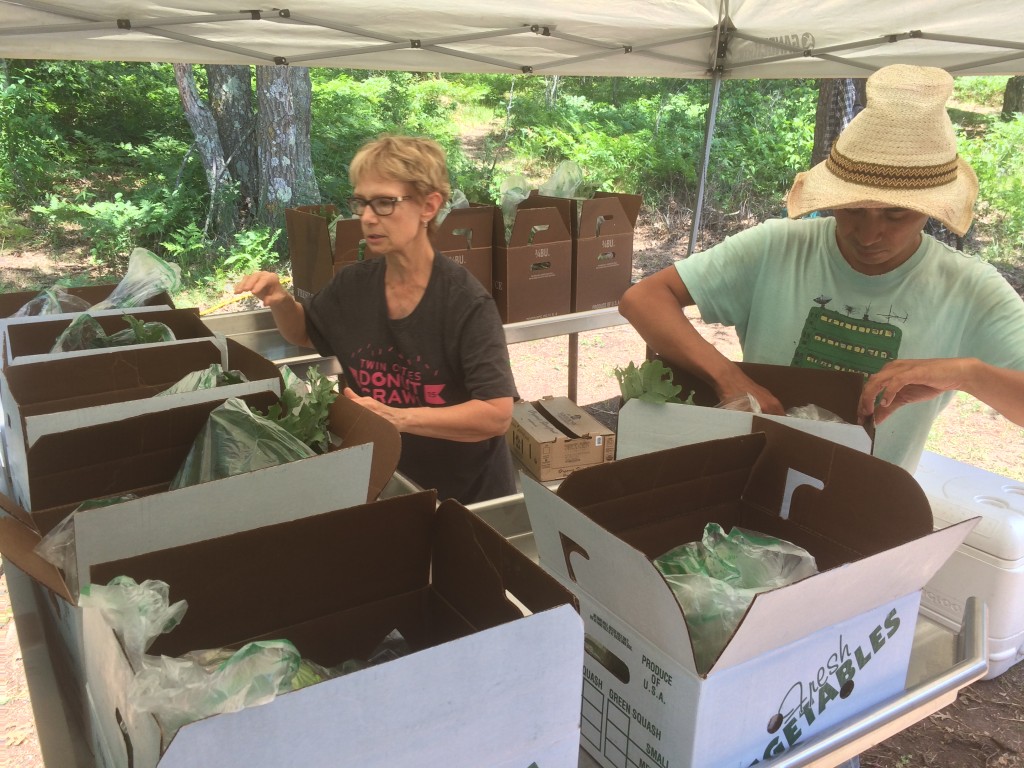
- Strawberries – We picked these last night at the “Nitty Gritty Dirt Farm” – the place just across the Saint Croix River from us where Kristin interned and learned to farm. It was great to see Robin, the place and the dogs again – and to fill our faces with sweetness between every few berries we put into containers. here are some pointers on how to store your berries to keep them fresh – but really, I recommend just opening them up and eating them, right this minute.

*
- Week 3 Salad Mix – every single leaf individually selected and hand picked in the first hour of morning, before the sun can take away any flavor or tenderness – then washed in cold well water, spun dry, and tucked into an ice-cooled, unpowered, vintage chest freezer for a few hours … until everything’s ready and it’s time for mixing and bagging. It’s a labor of love!
This week’s salad contains three kinds of of lettuce, 2 types of baby kale, arugula, spinach, lambs quarter, mizuna, tat soi, and sunflower greens. Plus a tiny bit of red mustard greens.
- Kale(s) – Three kinds – Dinosaur, Red Russian, and Dwarf Curly Blue. All three types look slightly different, but can be used together however you enjoy kale – it’s a very versatile green, good raw on sandwiches, in a “massaged” kale salad. Kristin likes to put oil in a pan (maybe sesame oil) and toss the kale in there with salt or soy sauce, maybe onions and or garlic, some sesame seeds or toasted almonds … it’s delicious.
* - Radishes & Salad Turnips
*
- Radish & Turnip Greens – These are huge down south – try one of these southern recipes, if you’ve already made delicious pesto with previous week’s greens!
*
- Peas & Pea Tendrils – the tender first pea pickings of the year! These are ‘sugar snap peas’ – not for shelling, meant to be eaten whole. Another one that I love best fresh and raw (especially at this time of year), but which can be used in all kinds of salad and stir fry.
